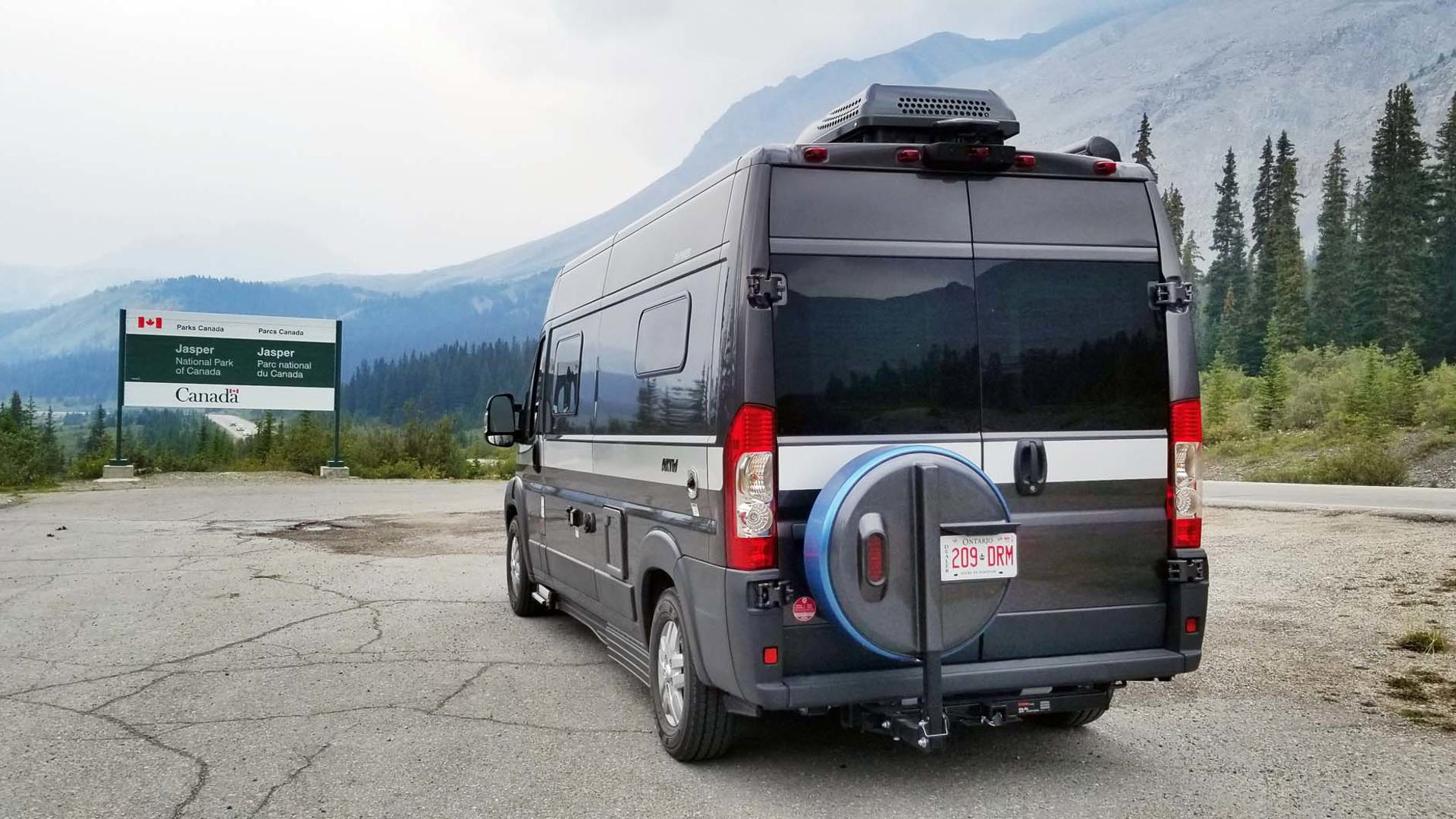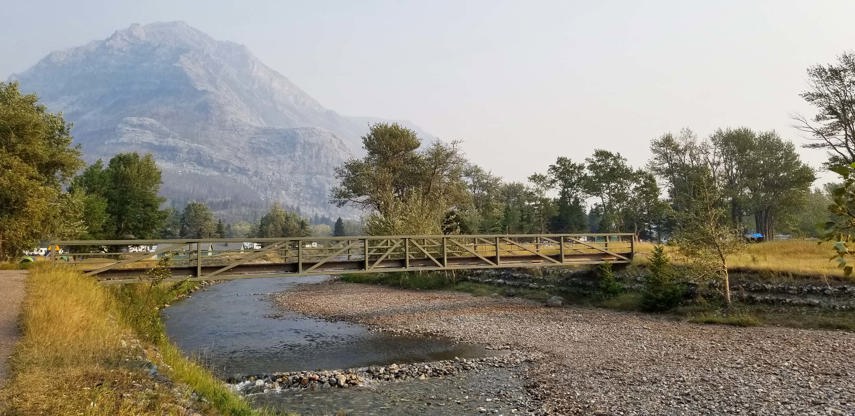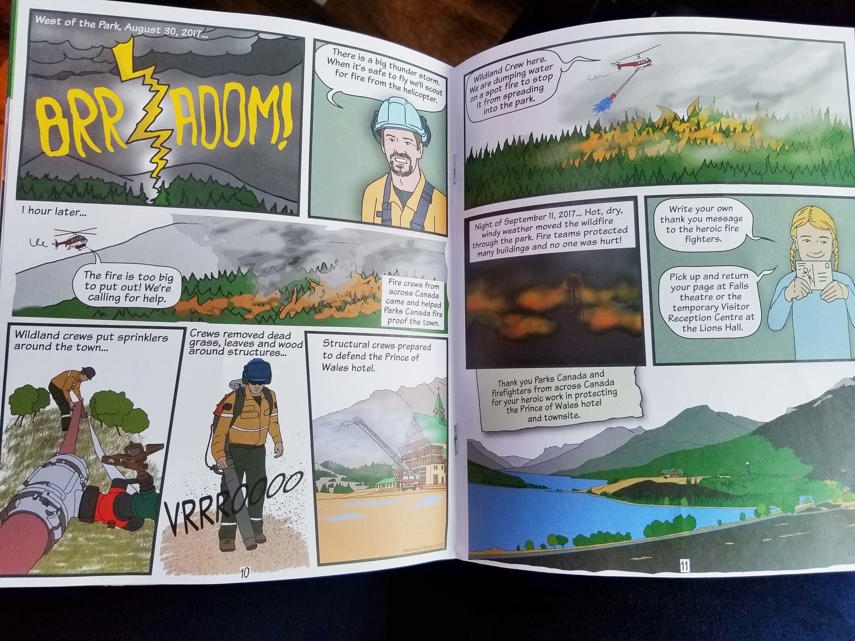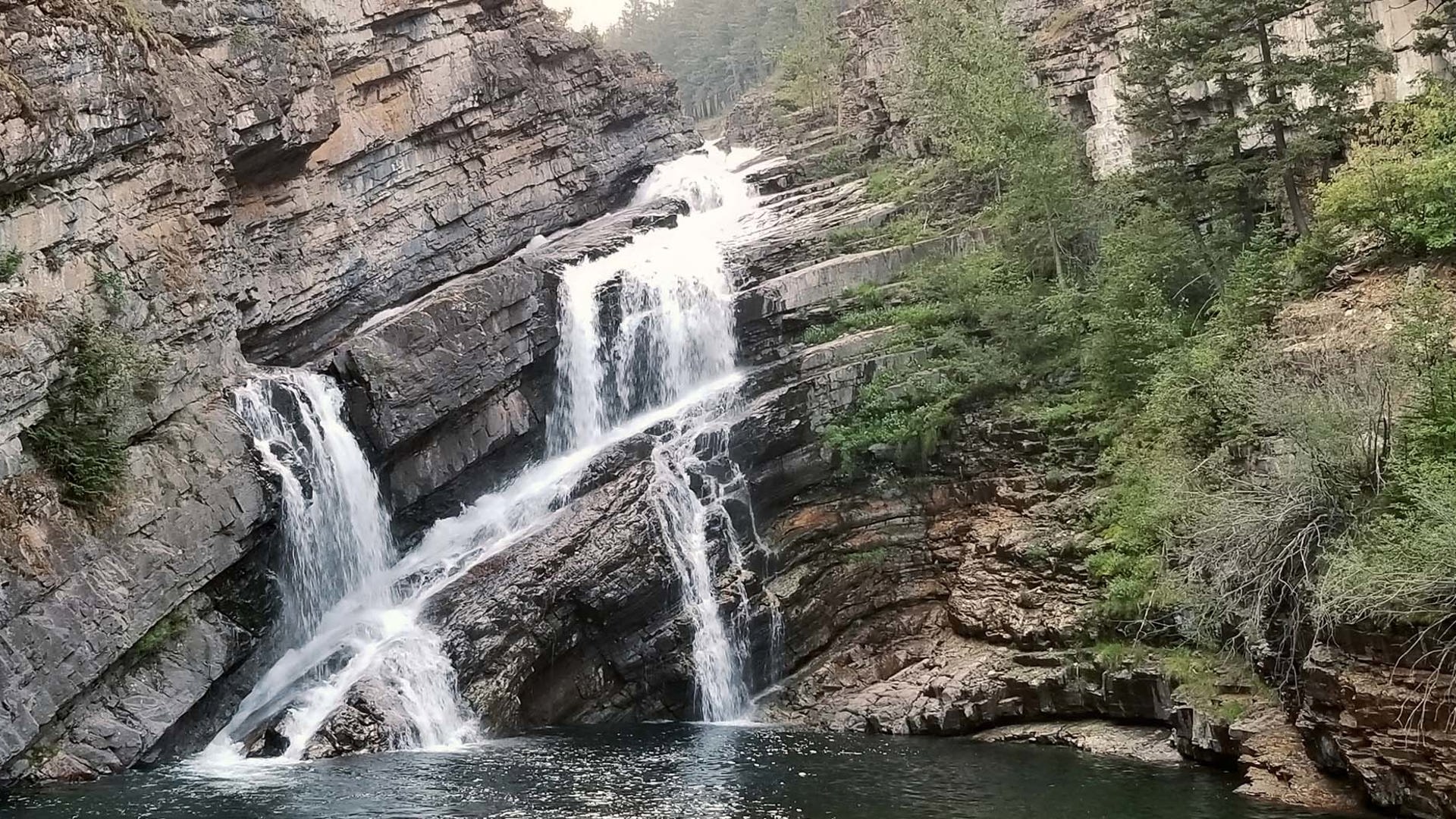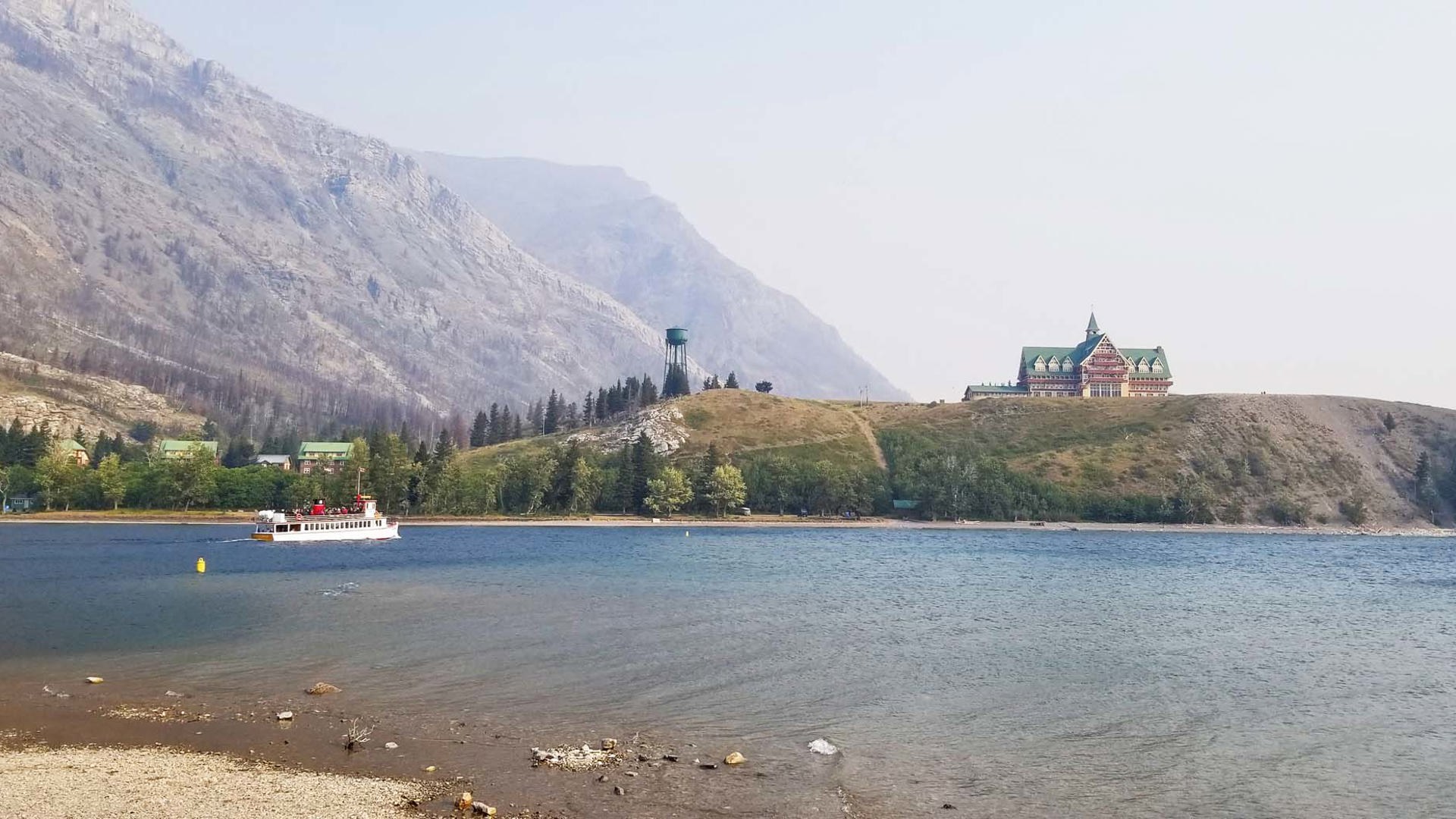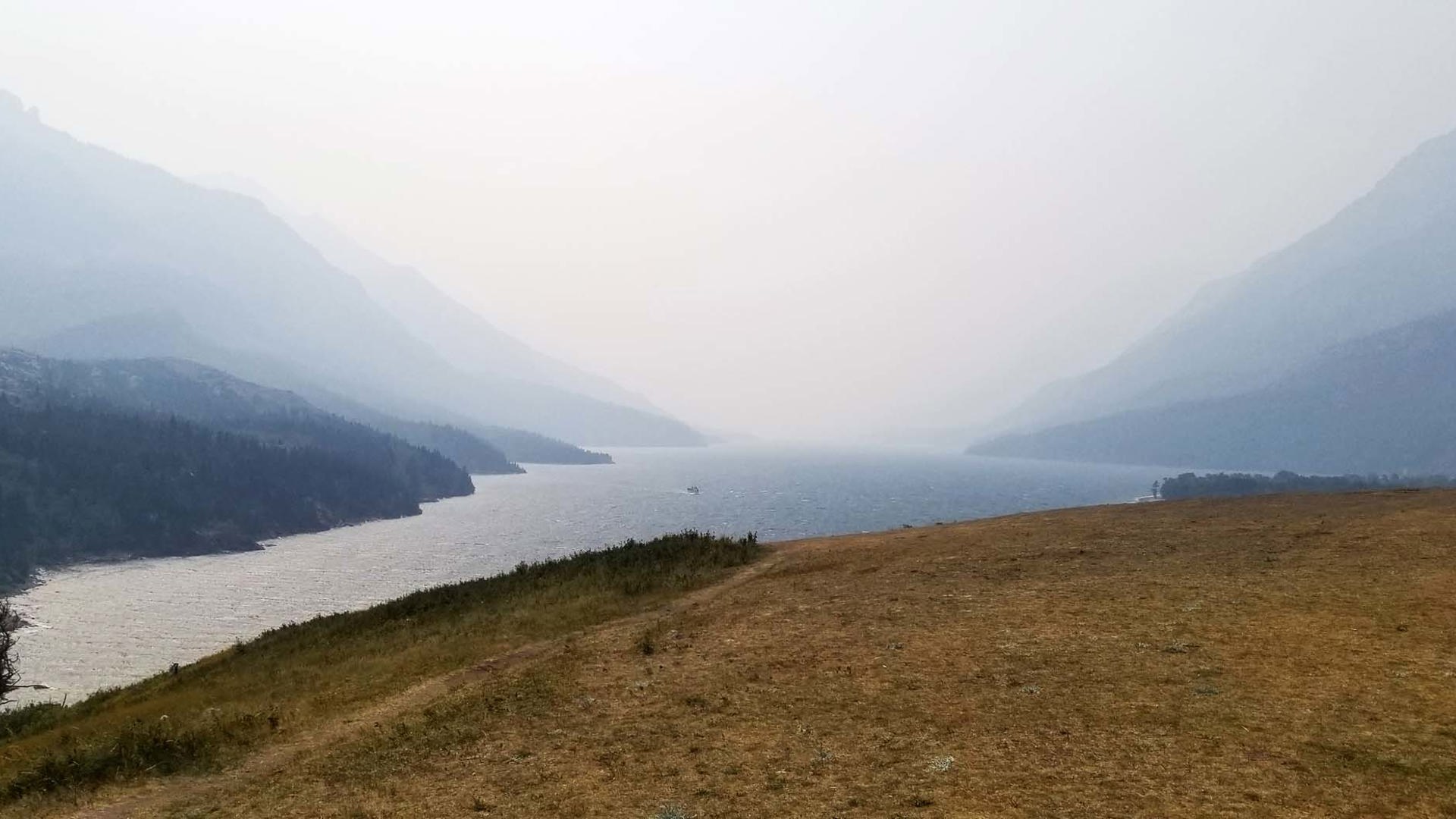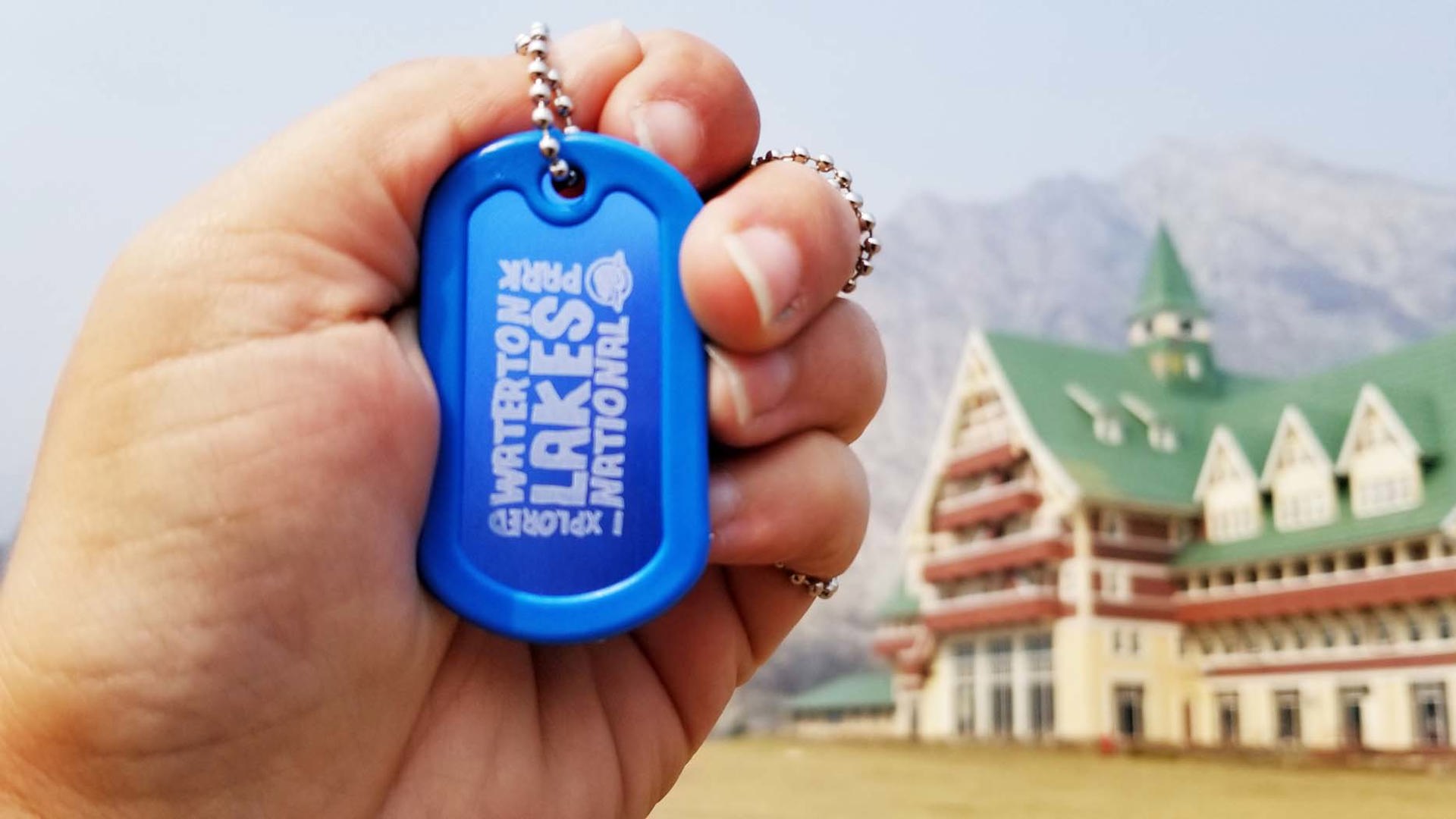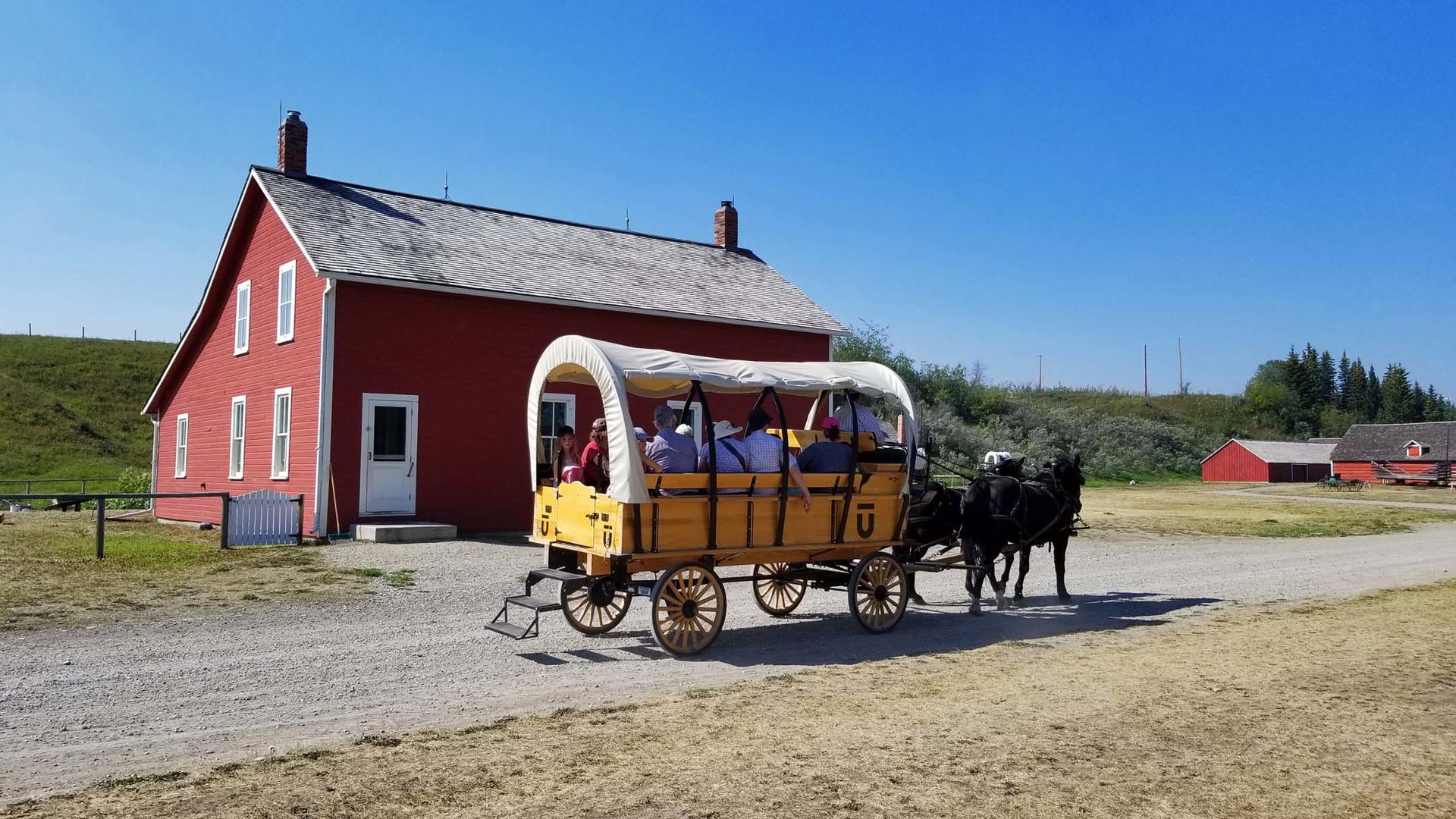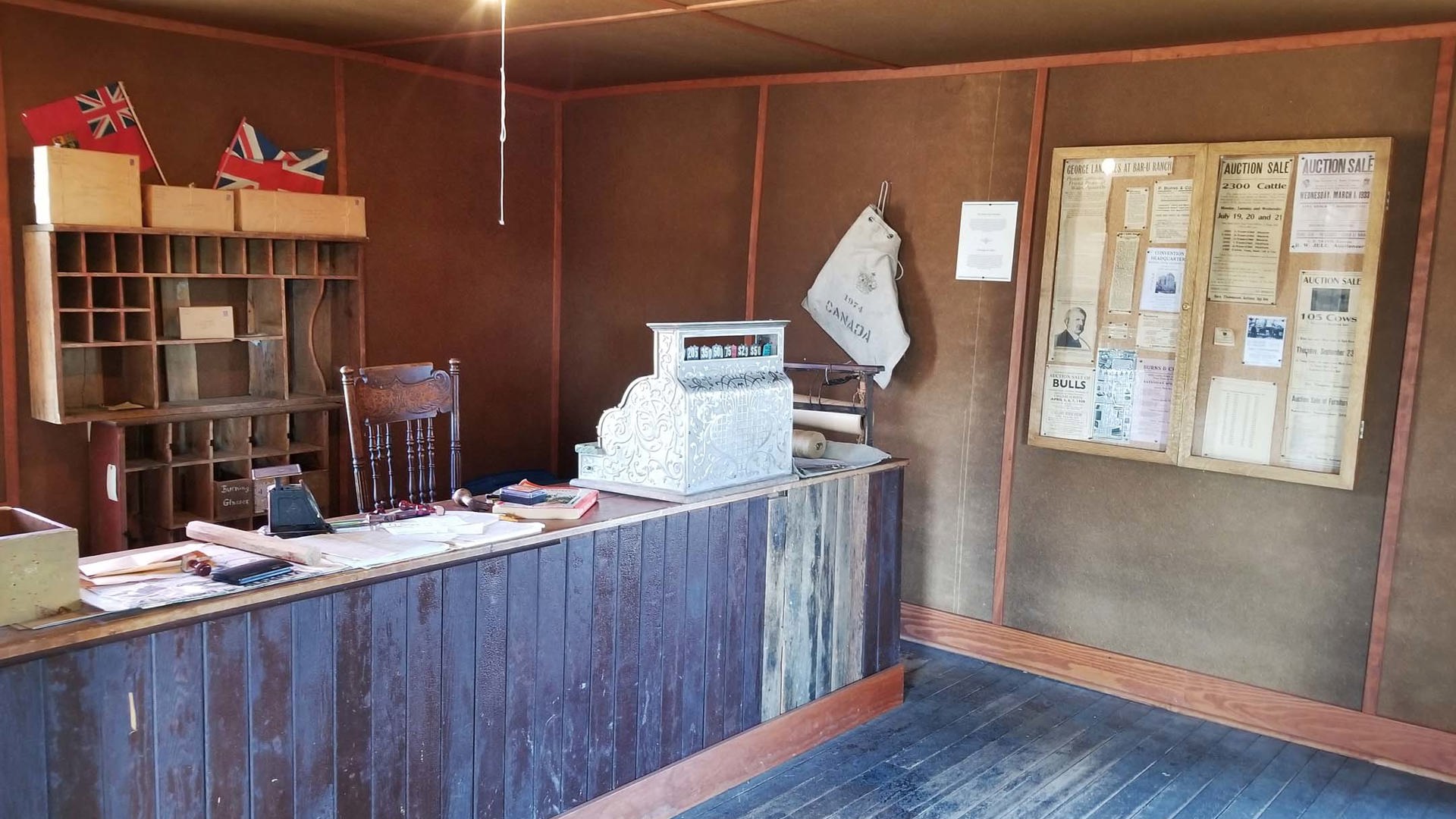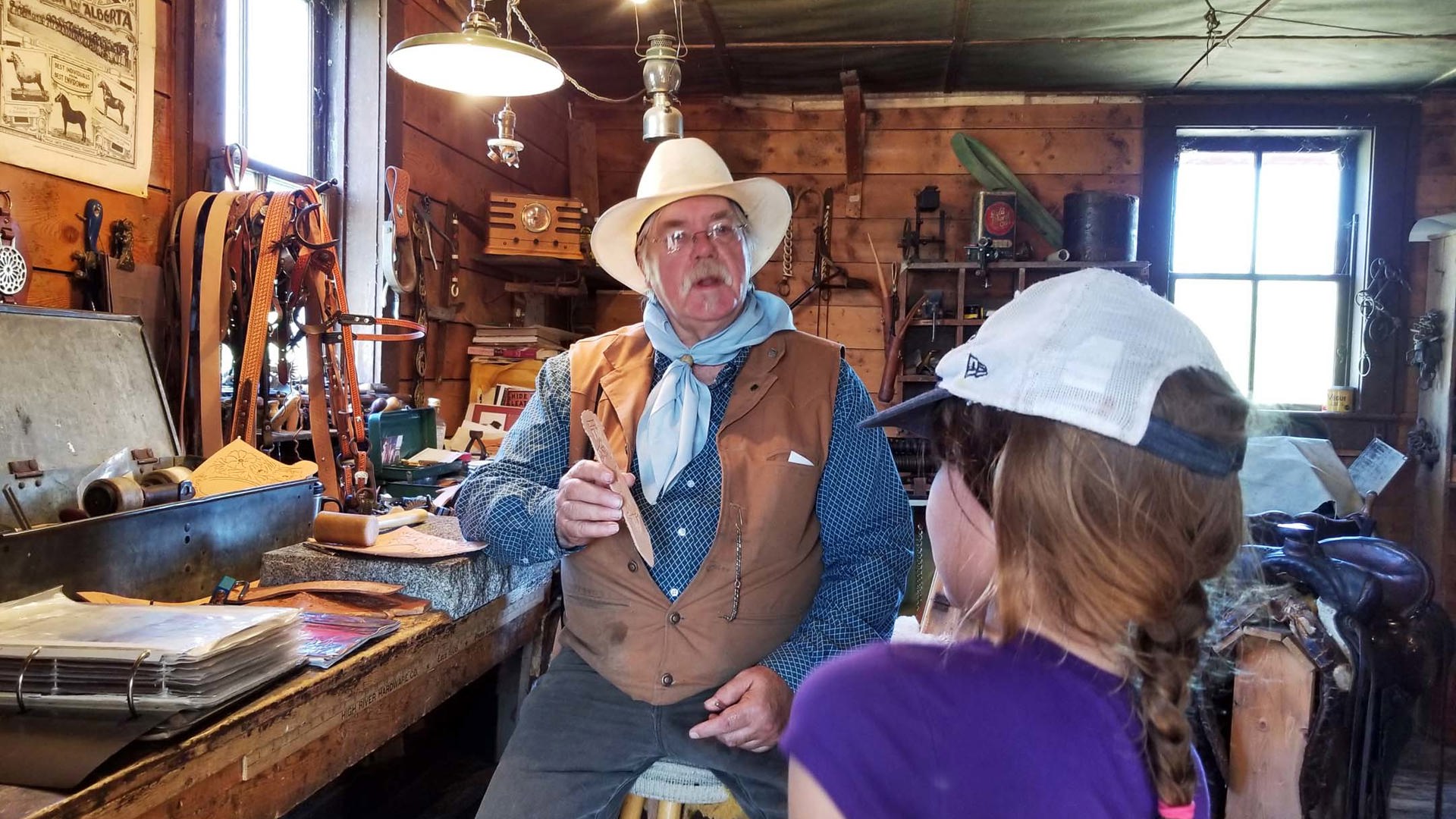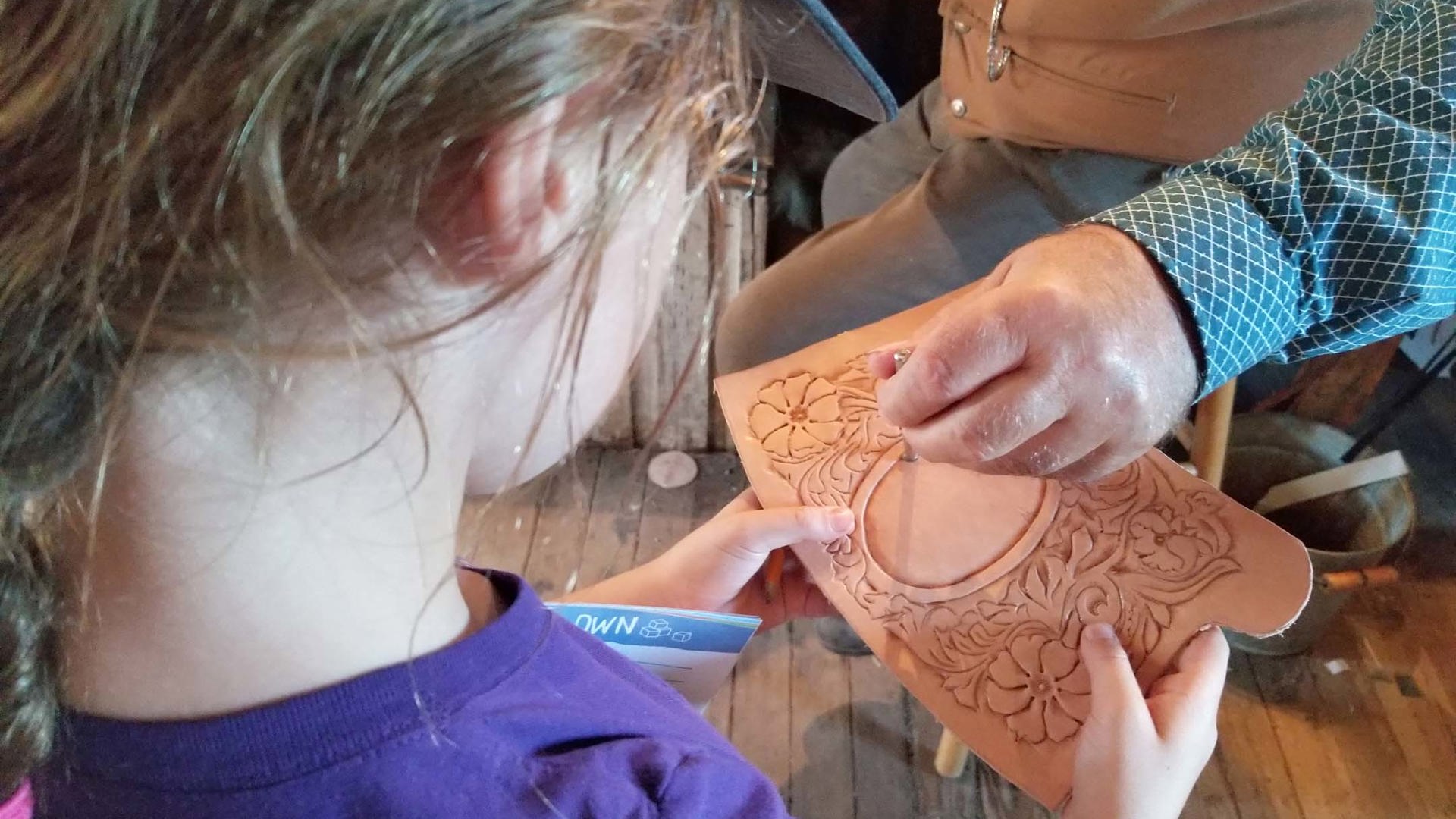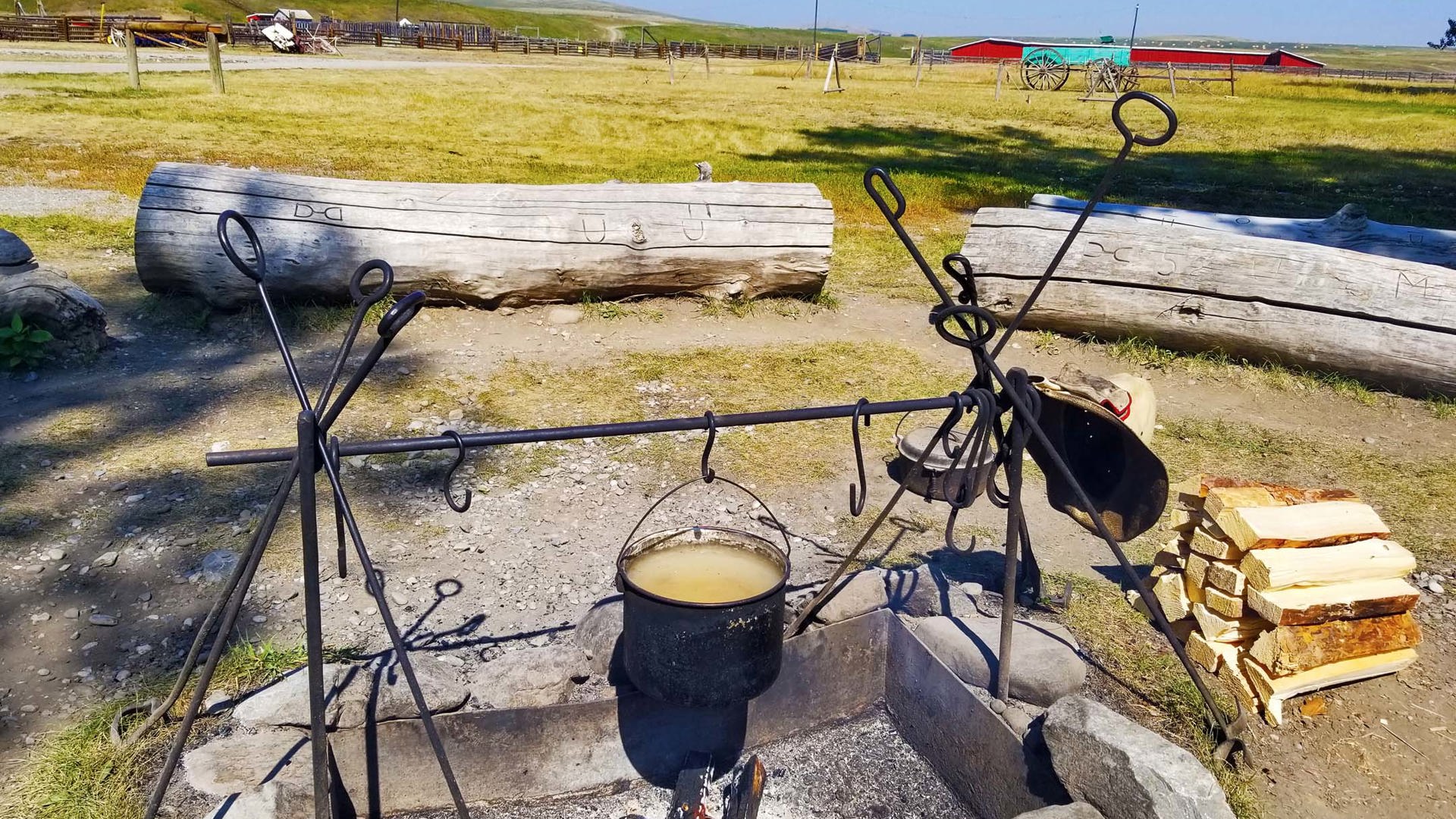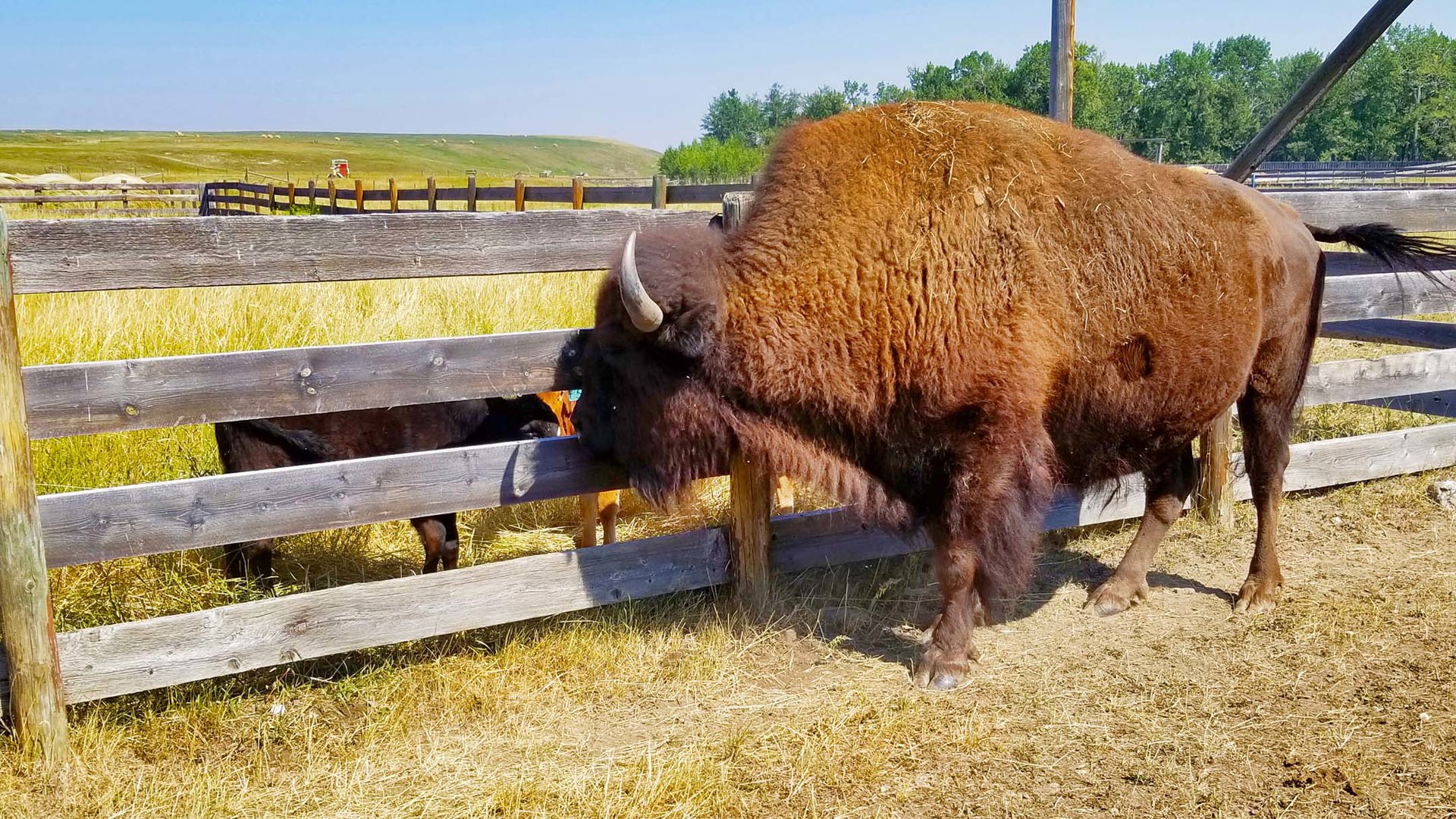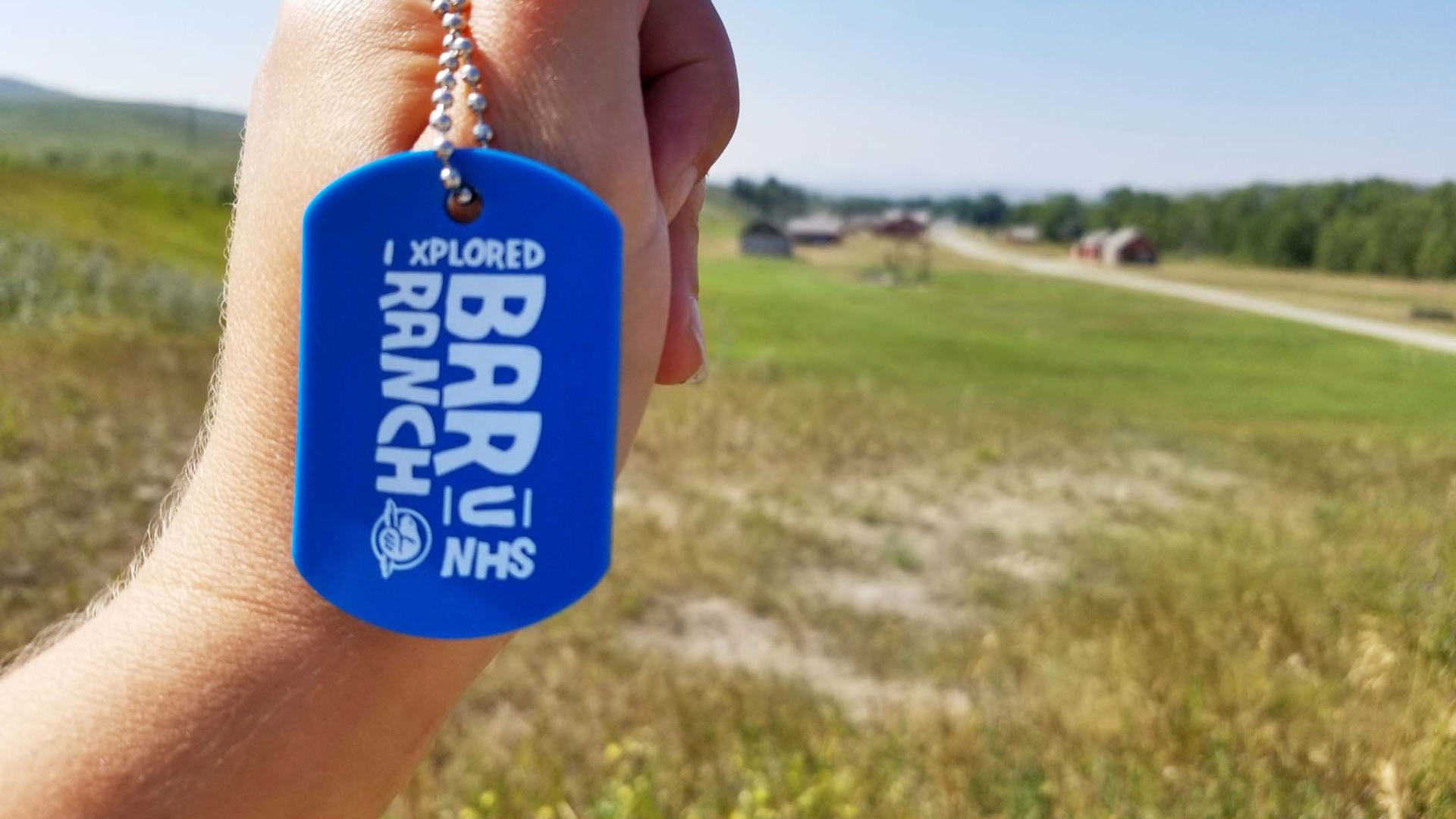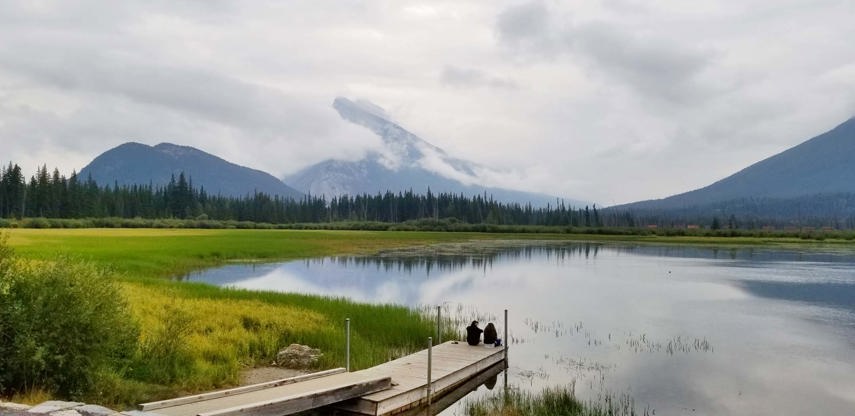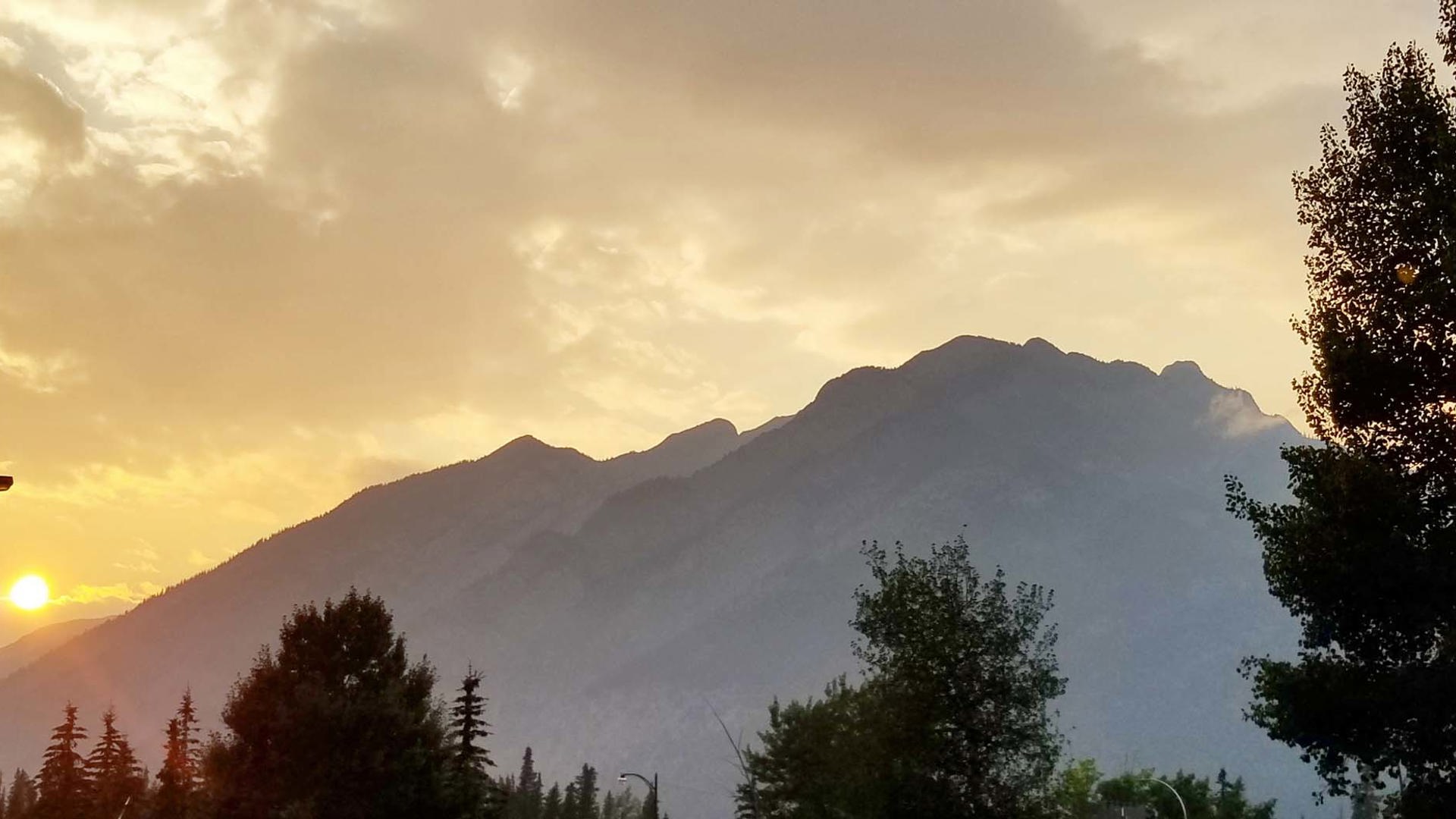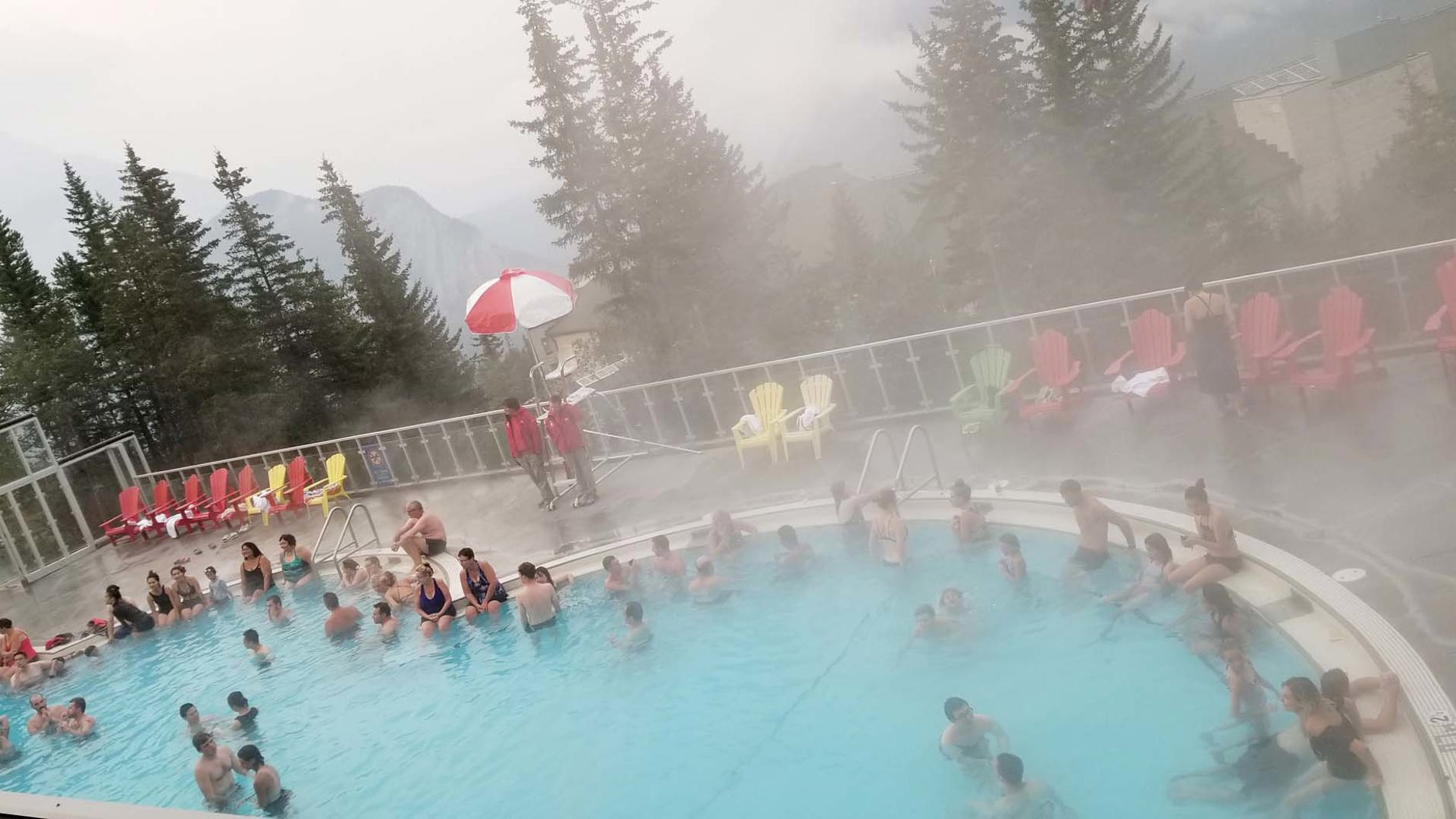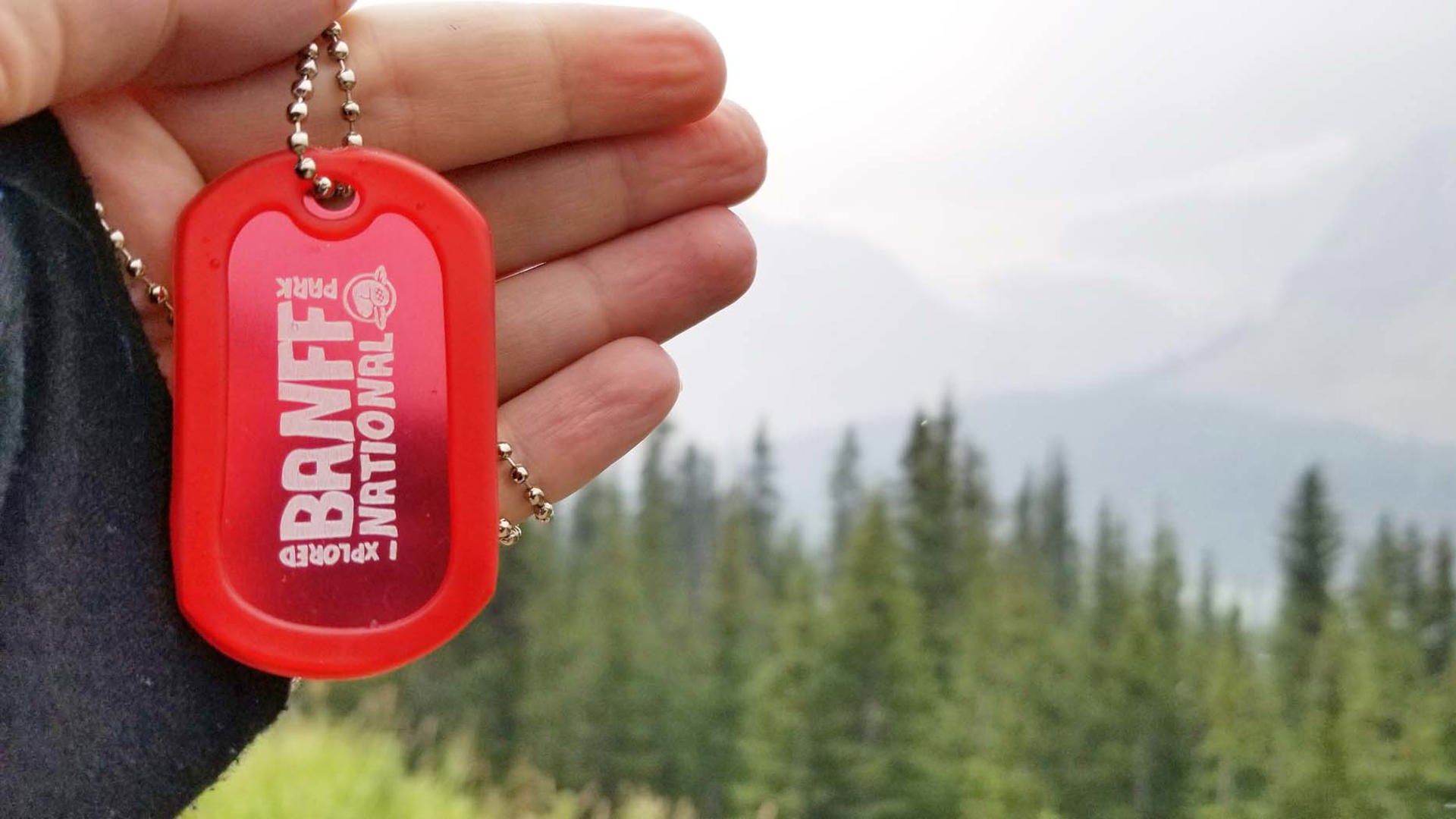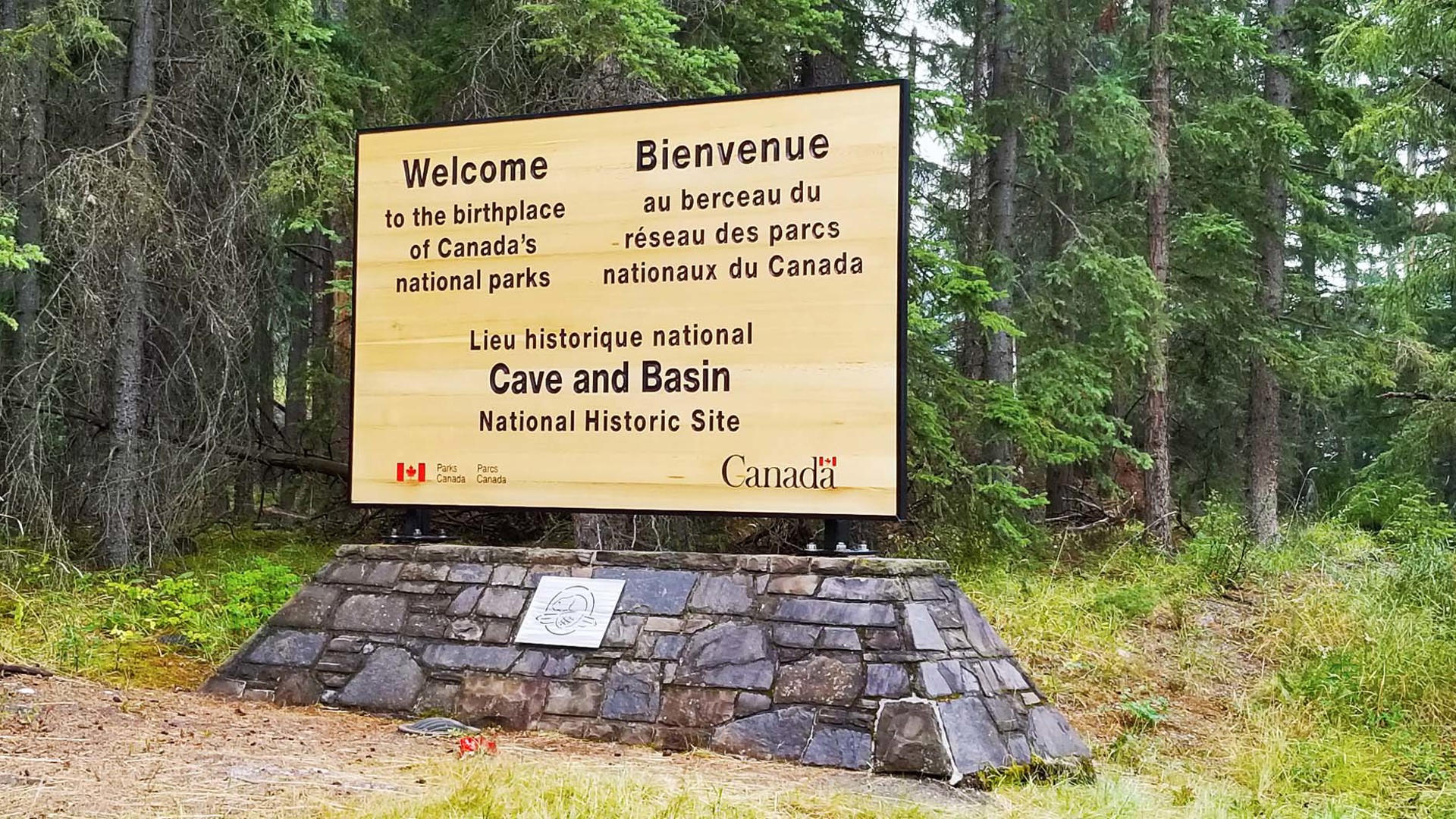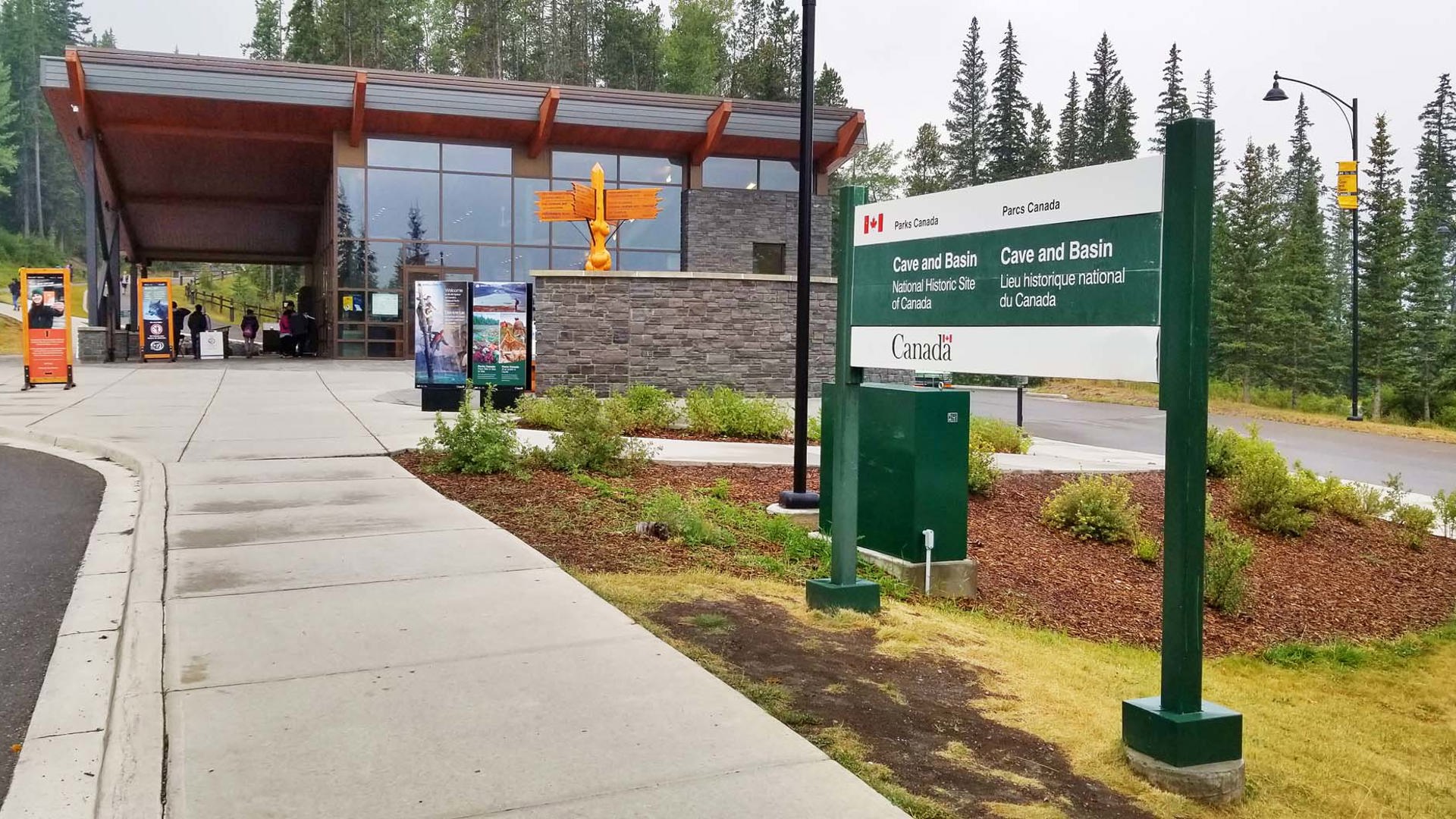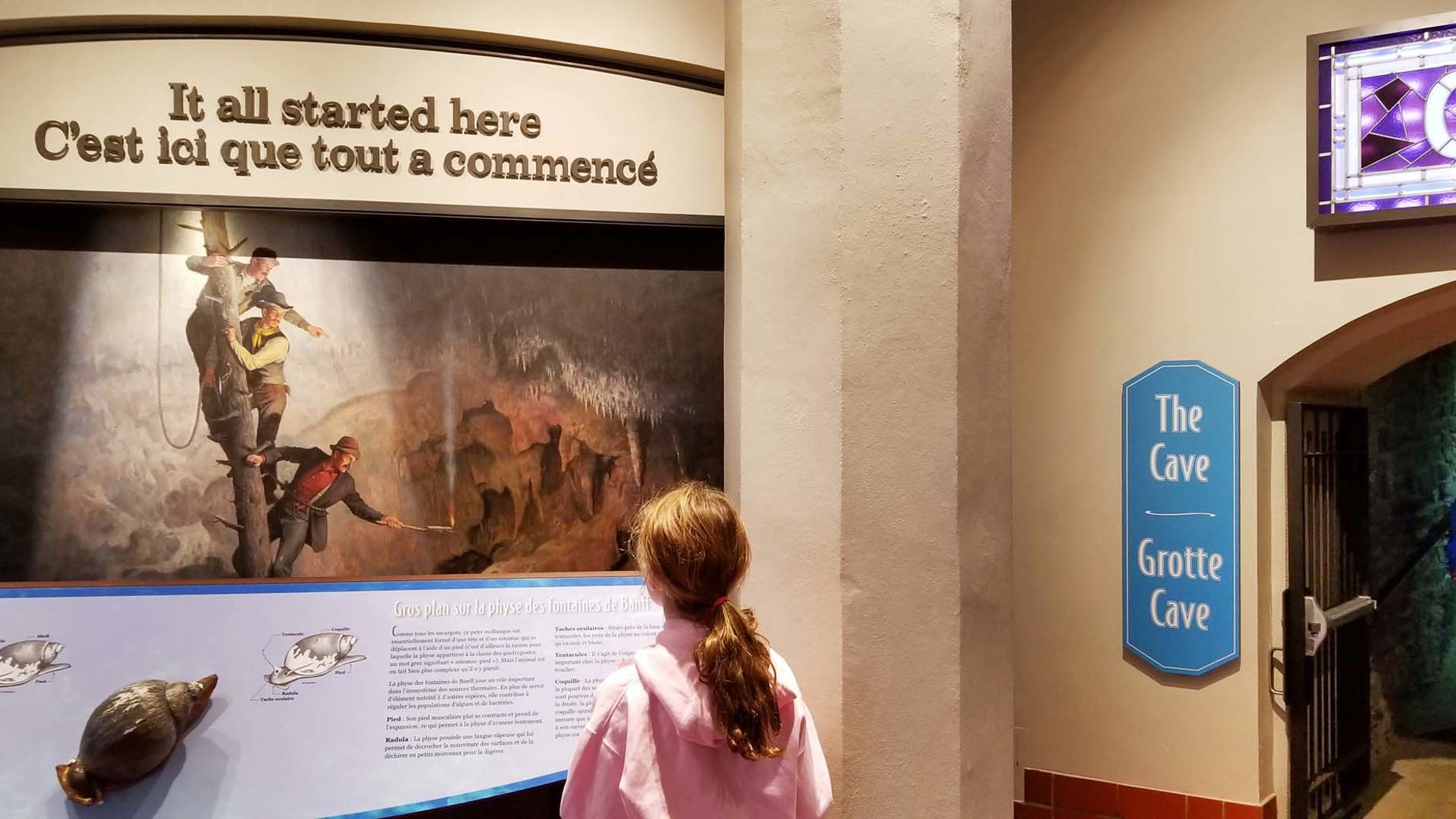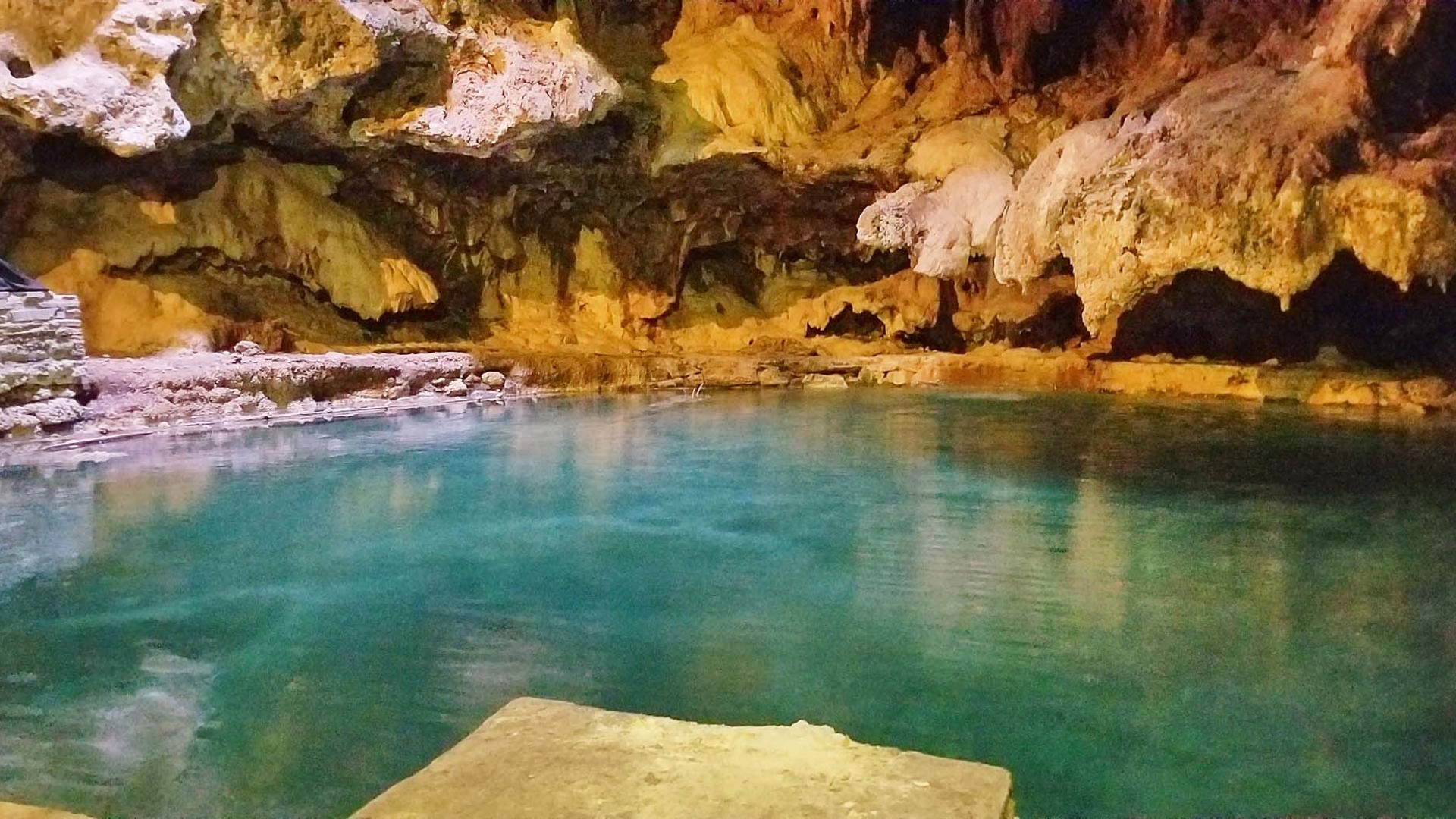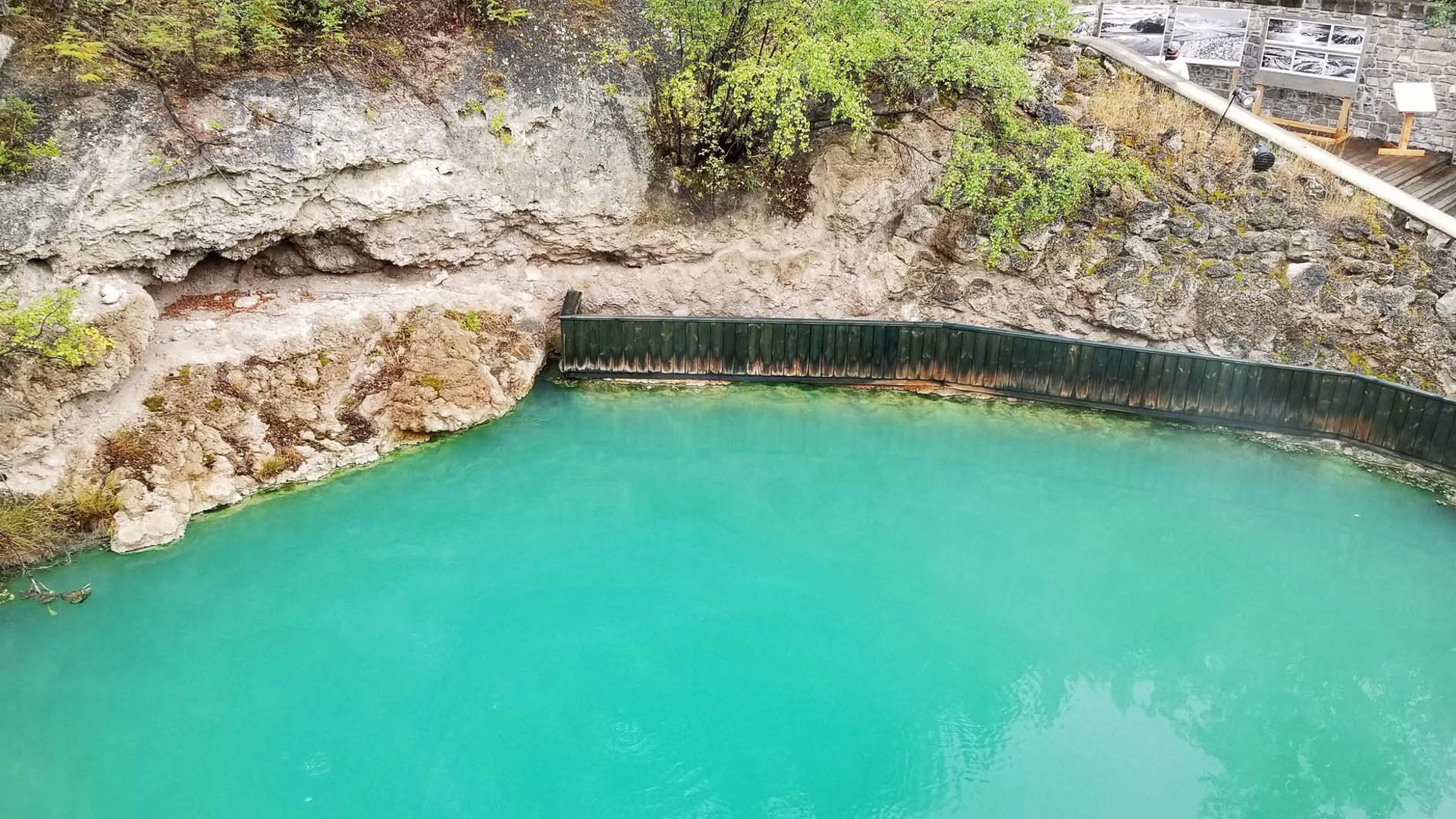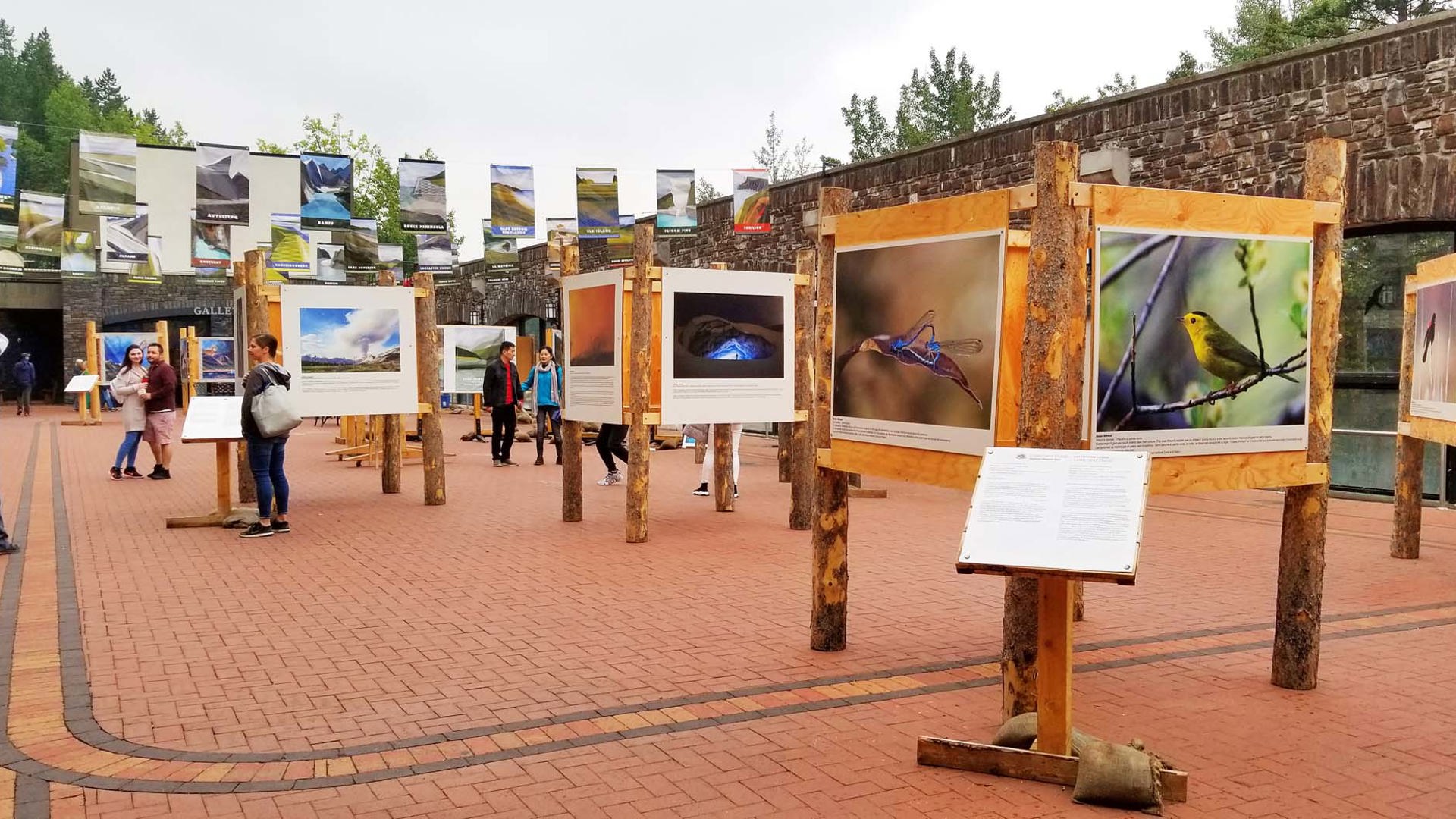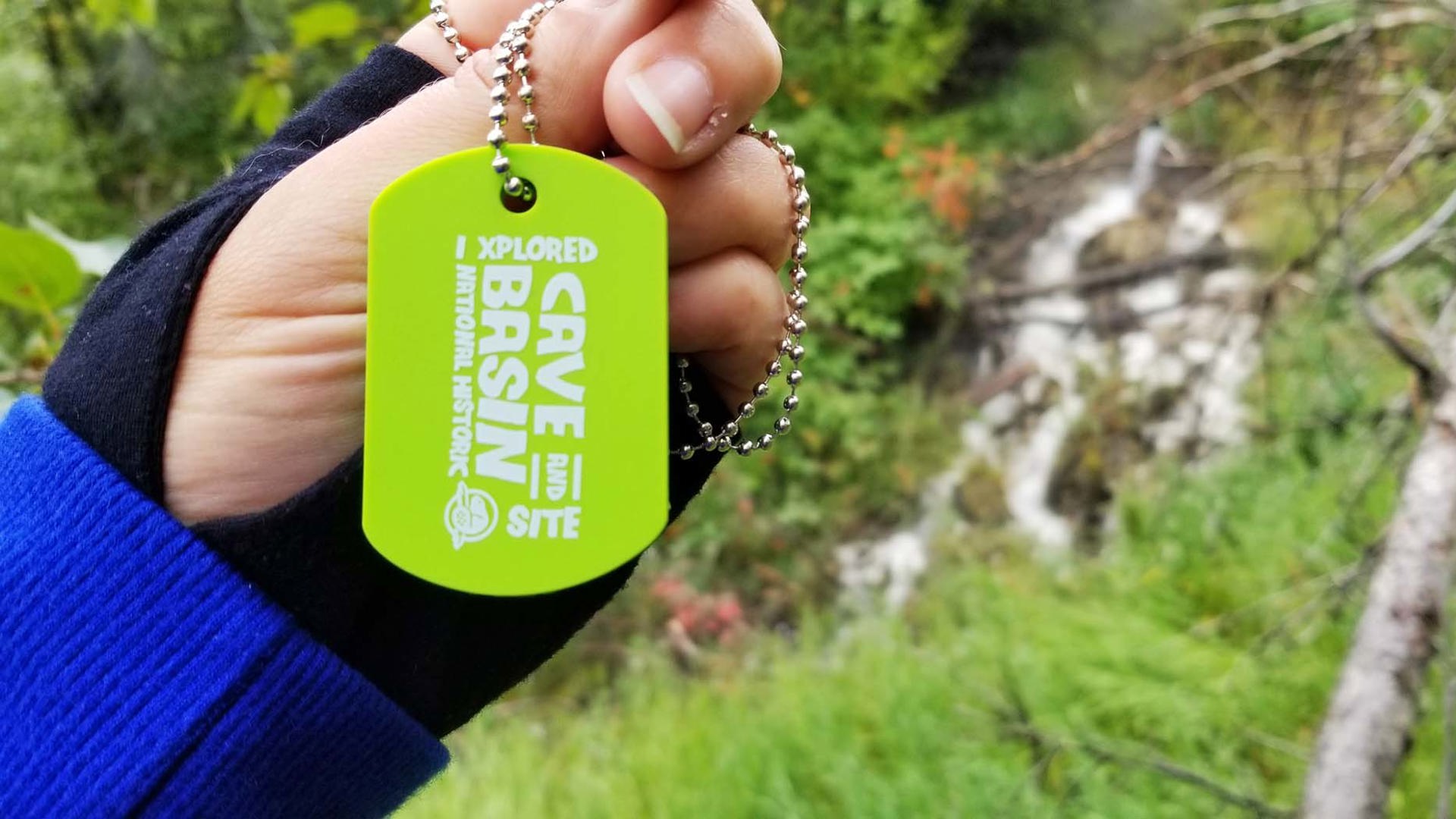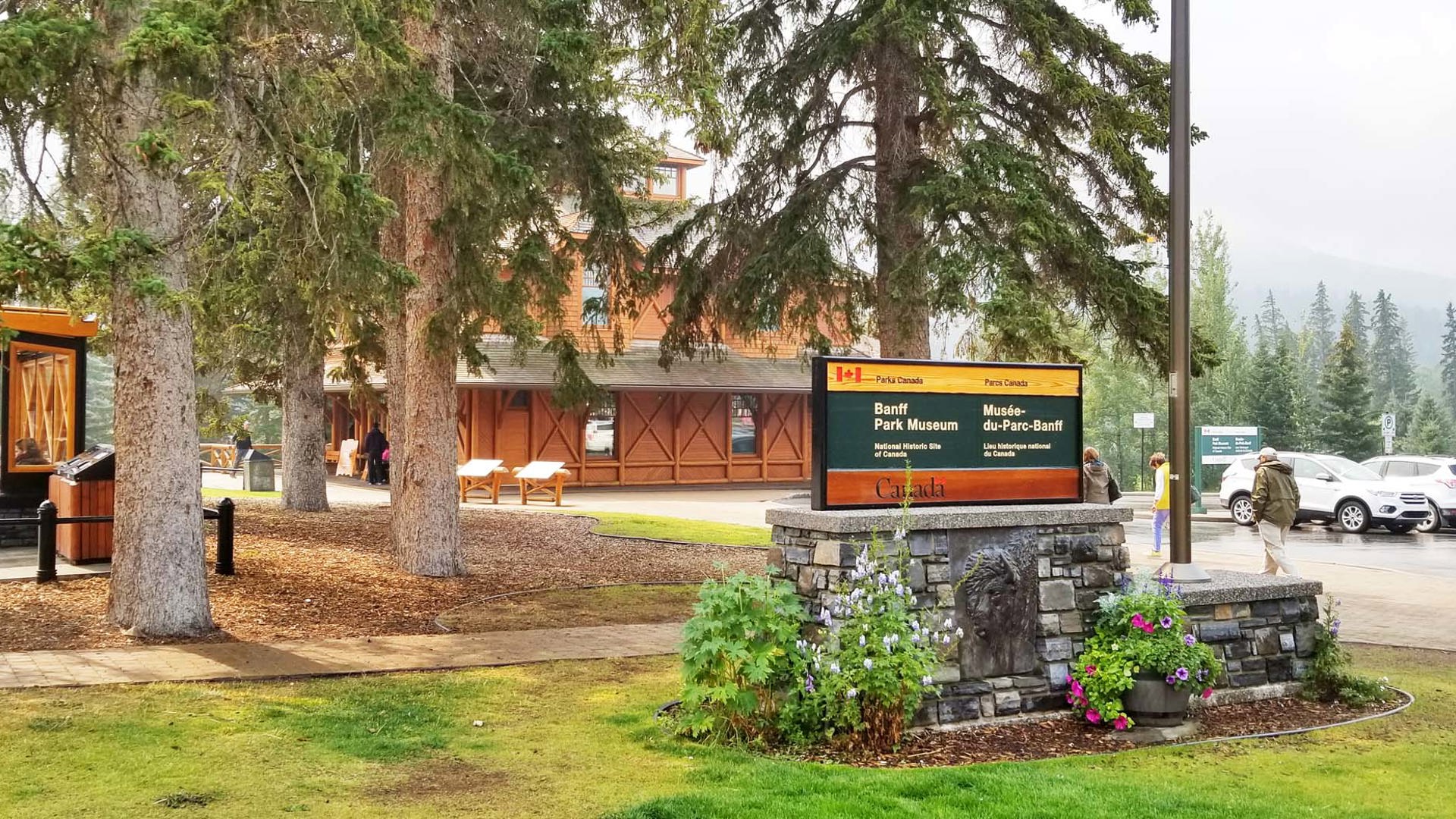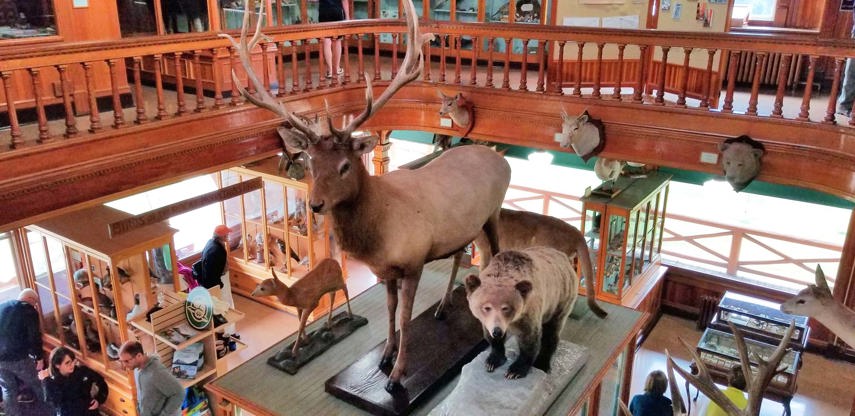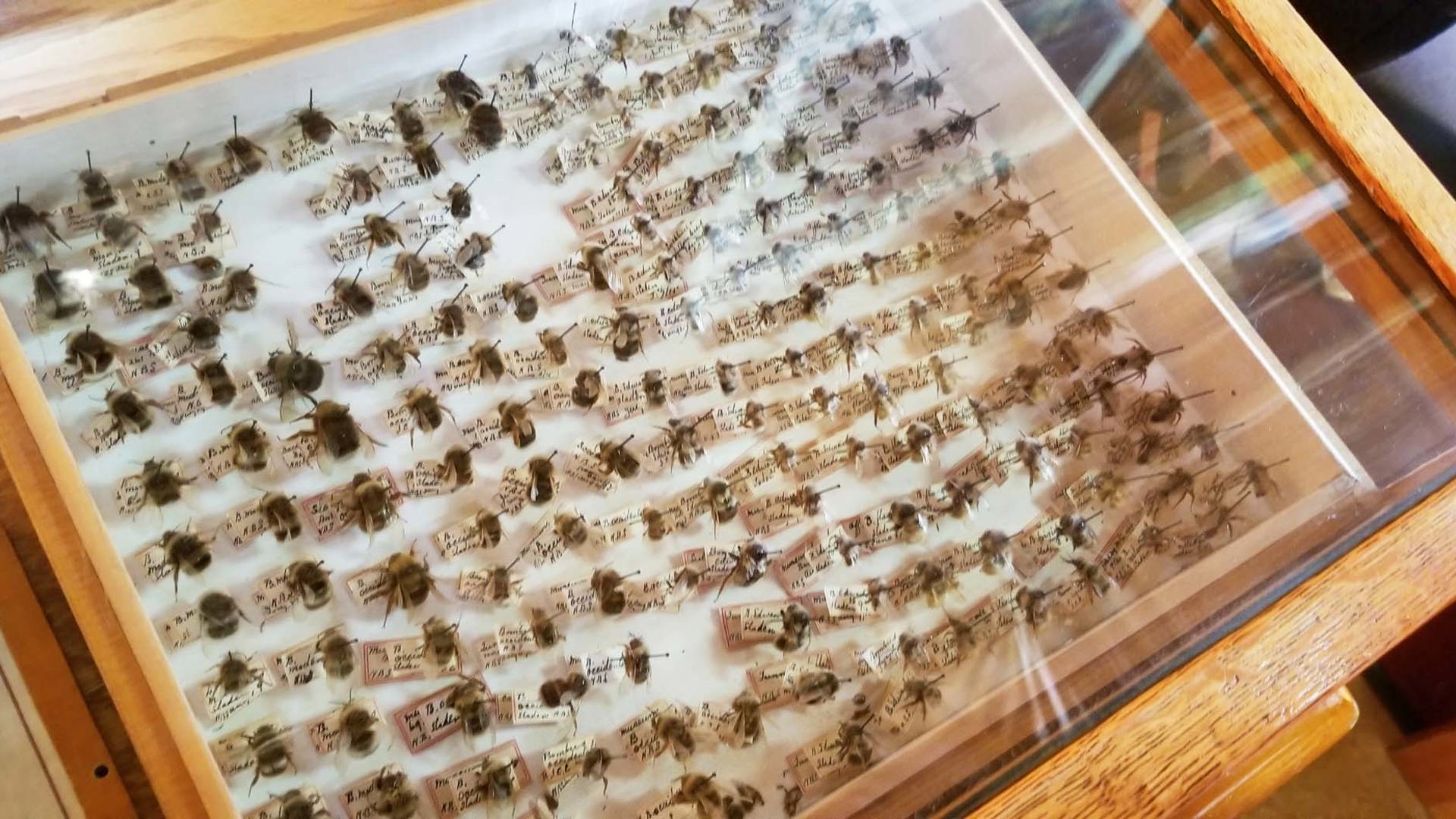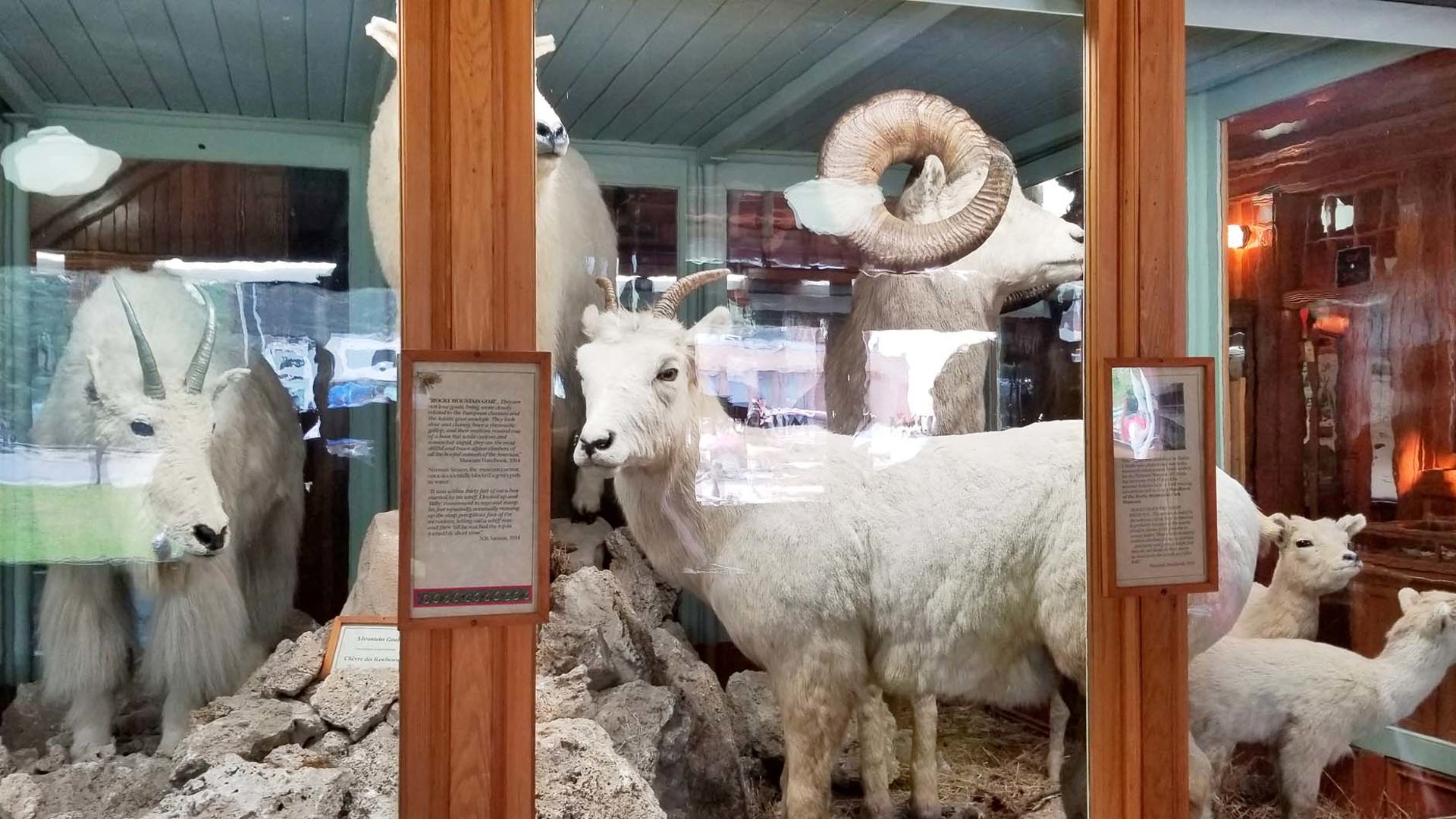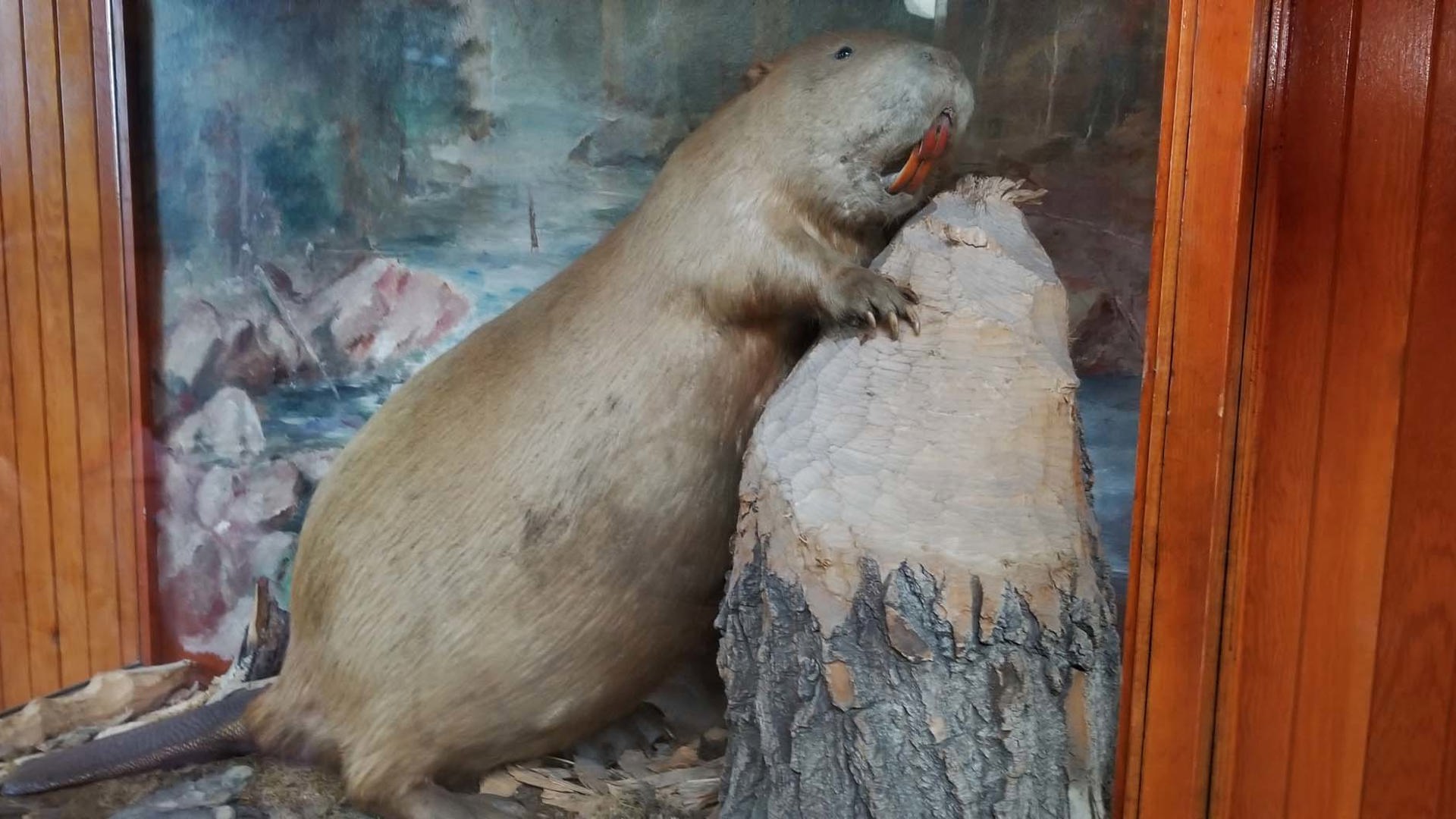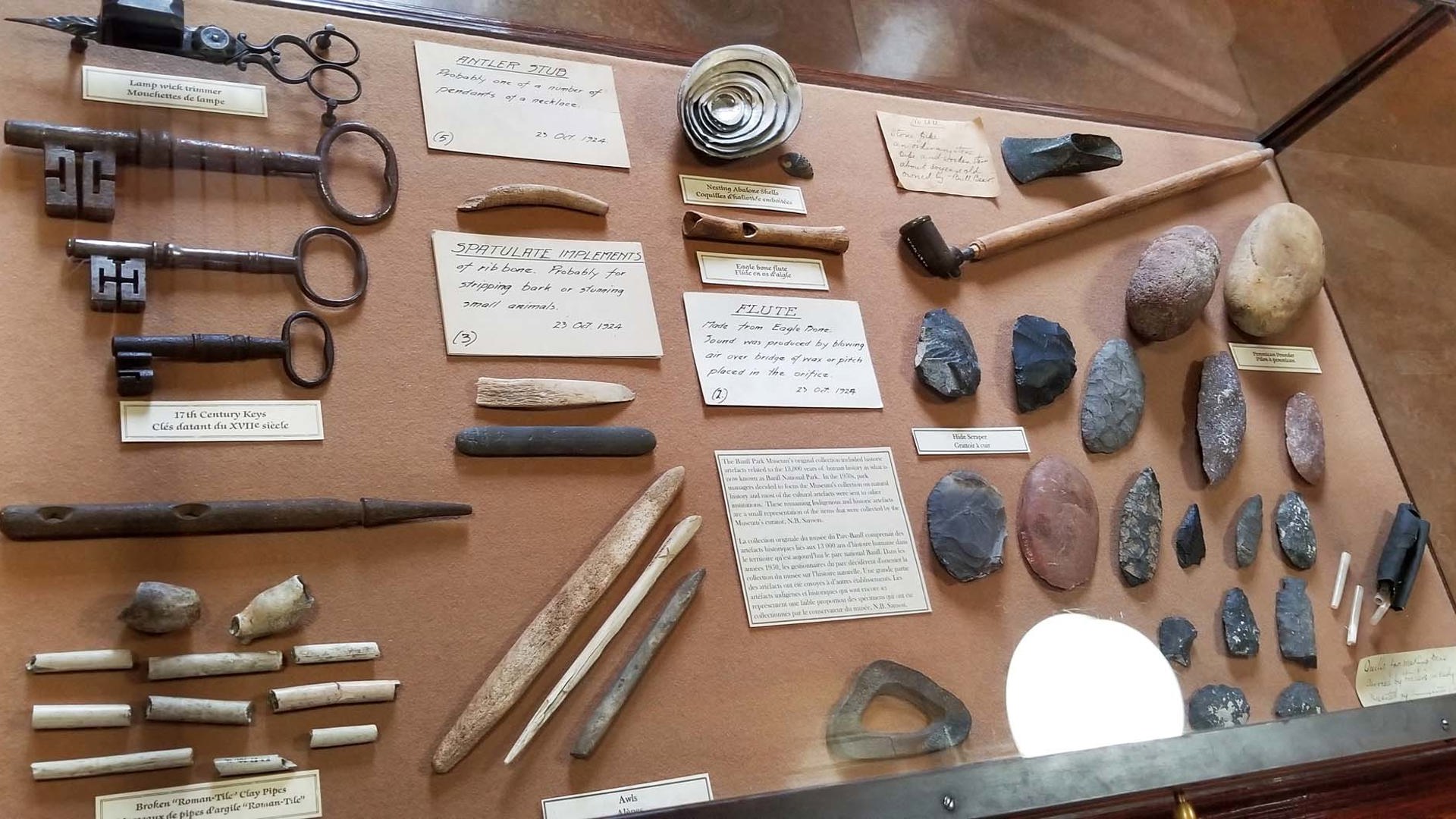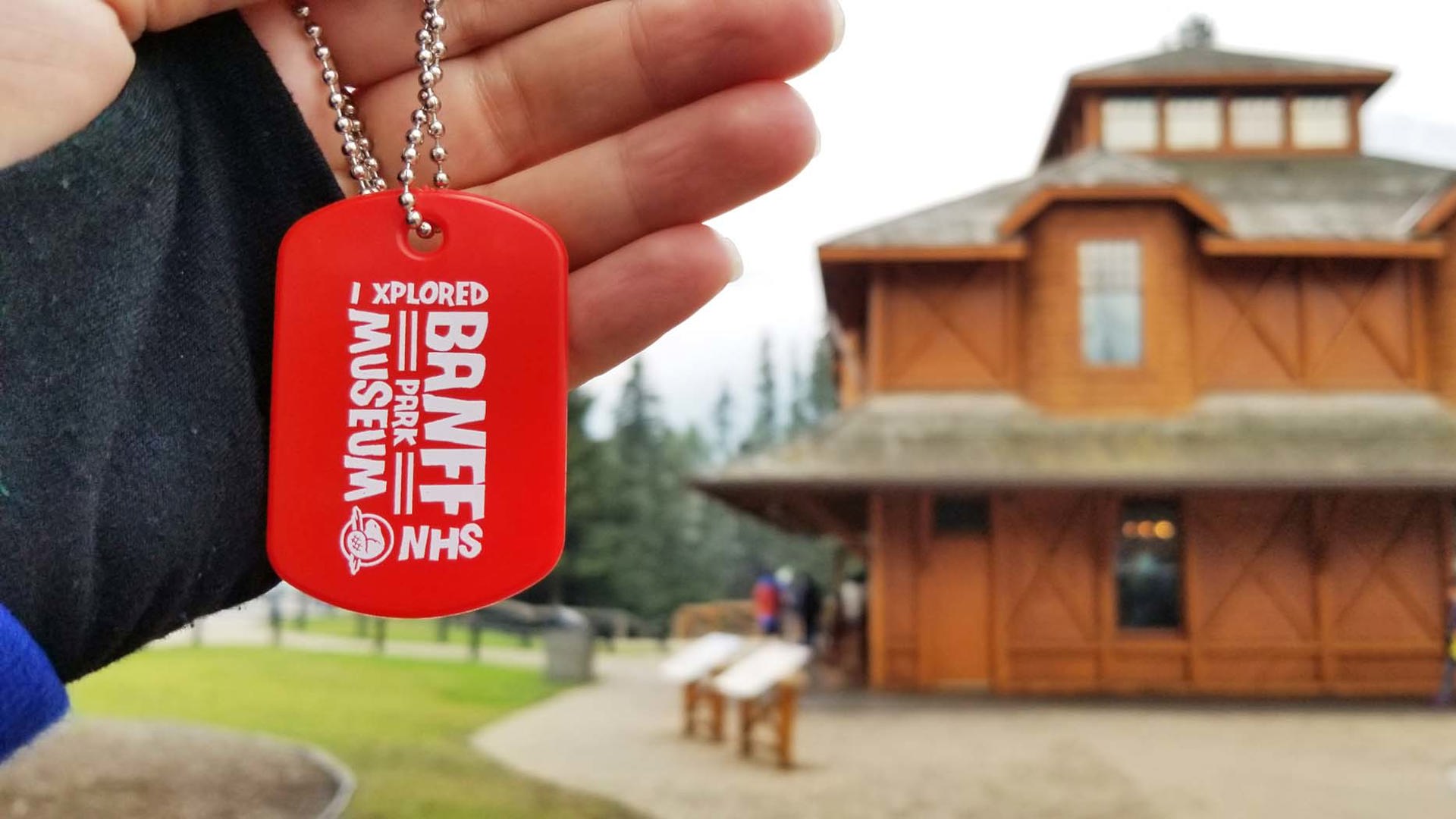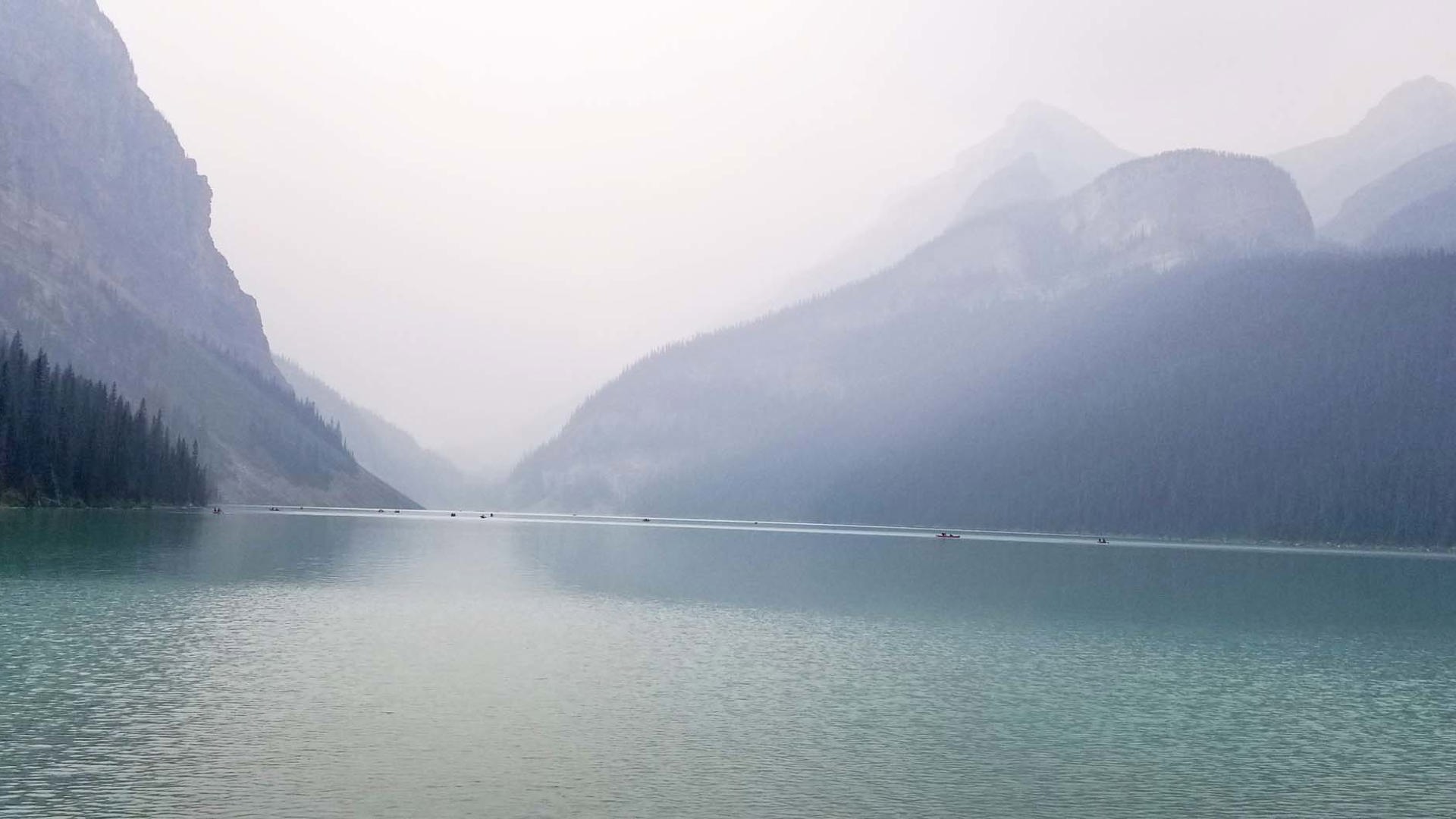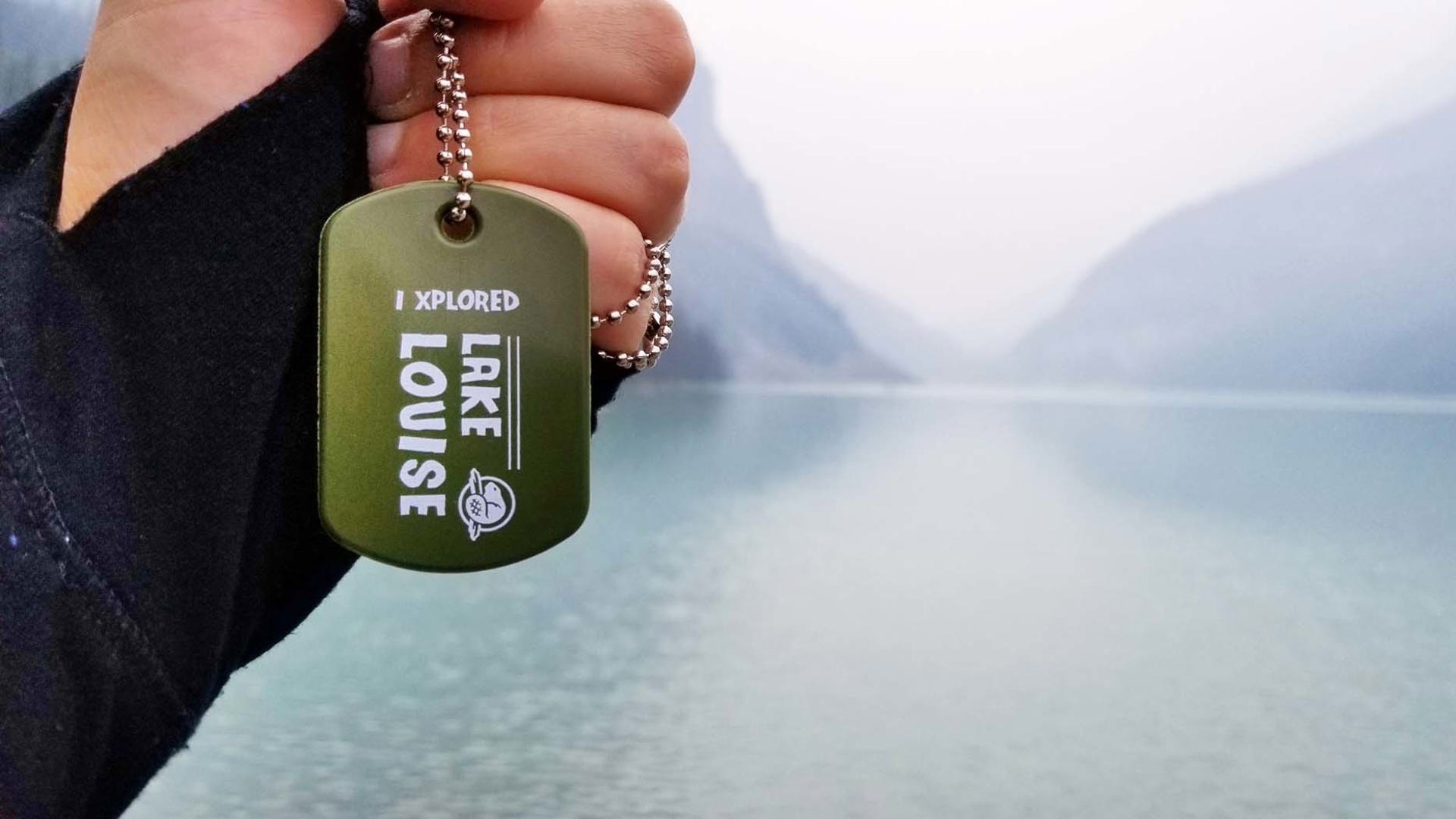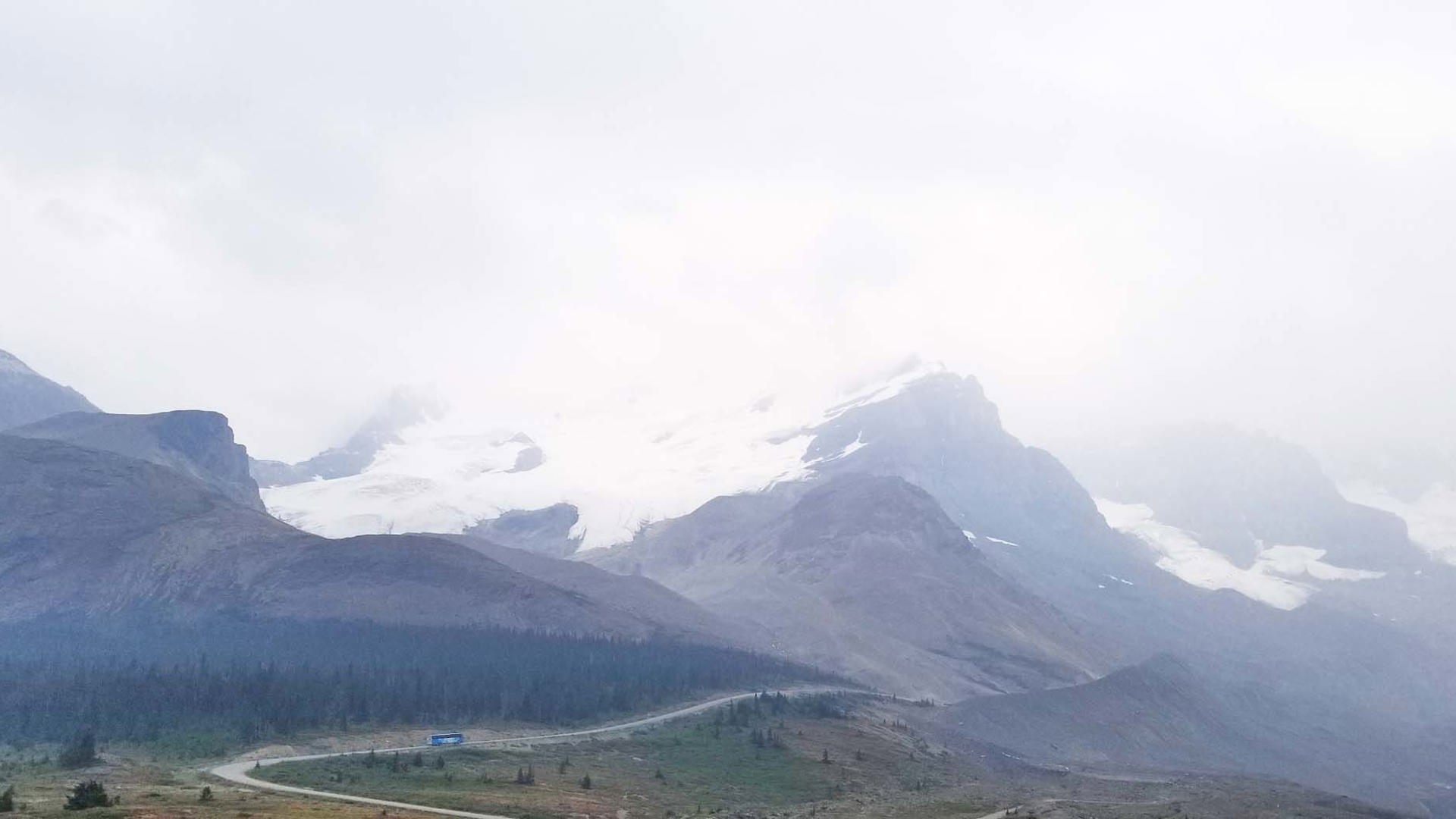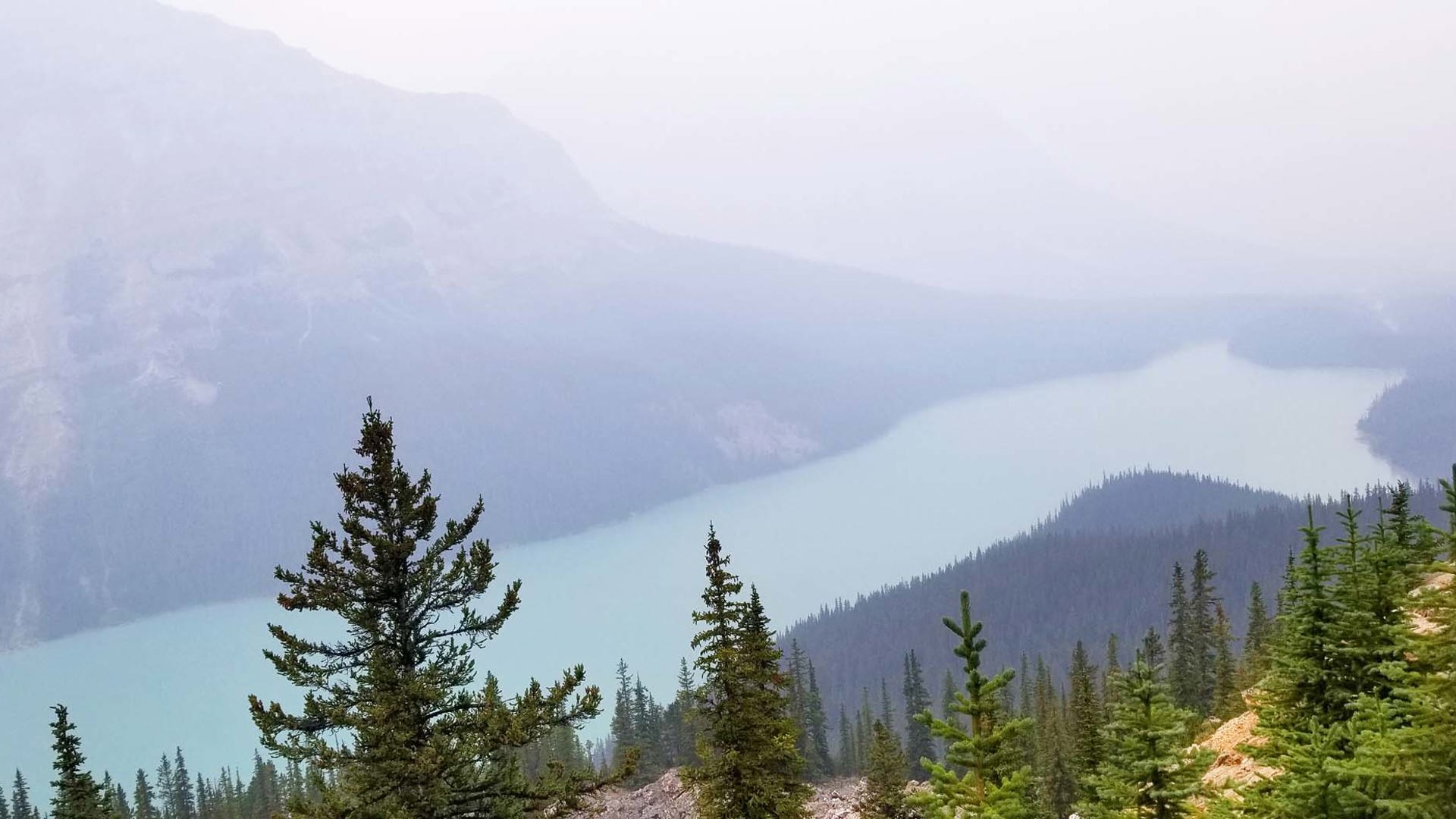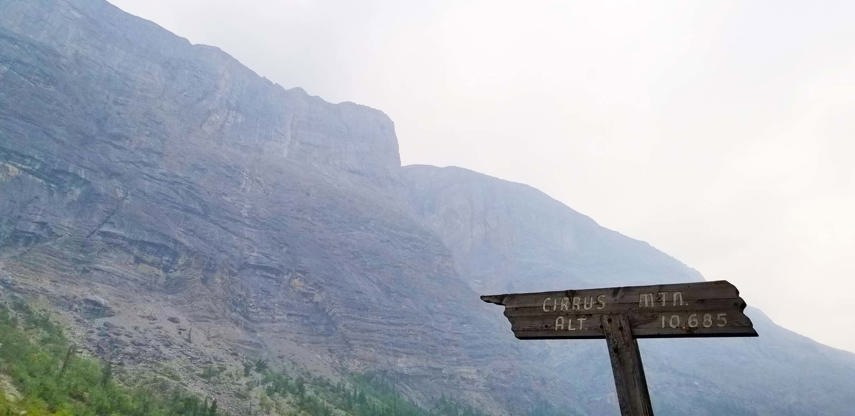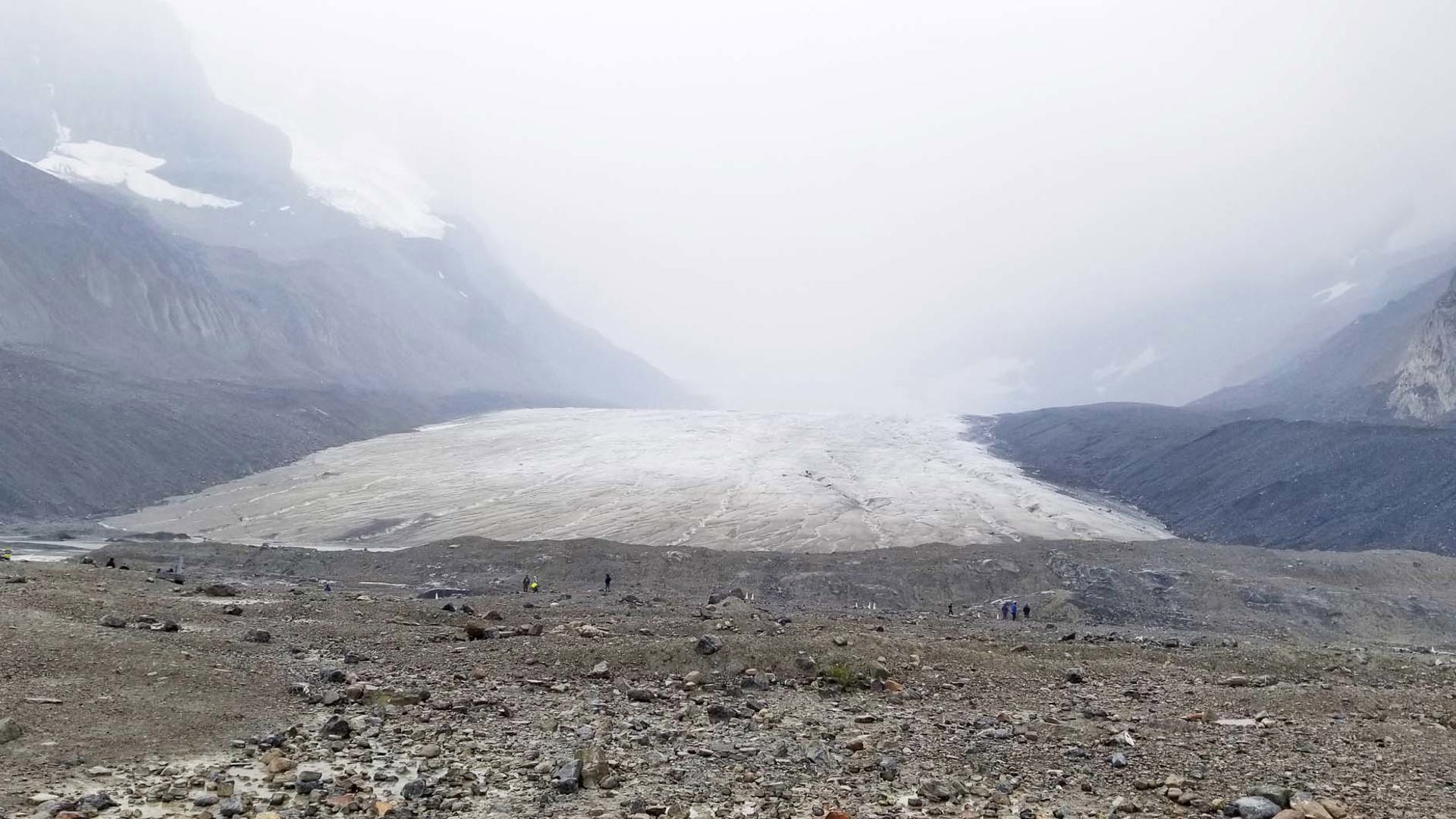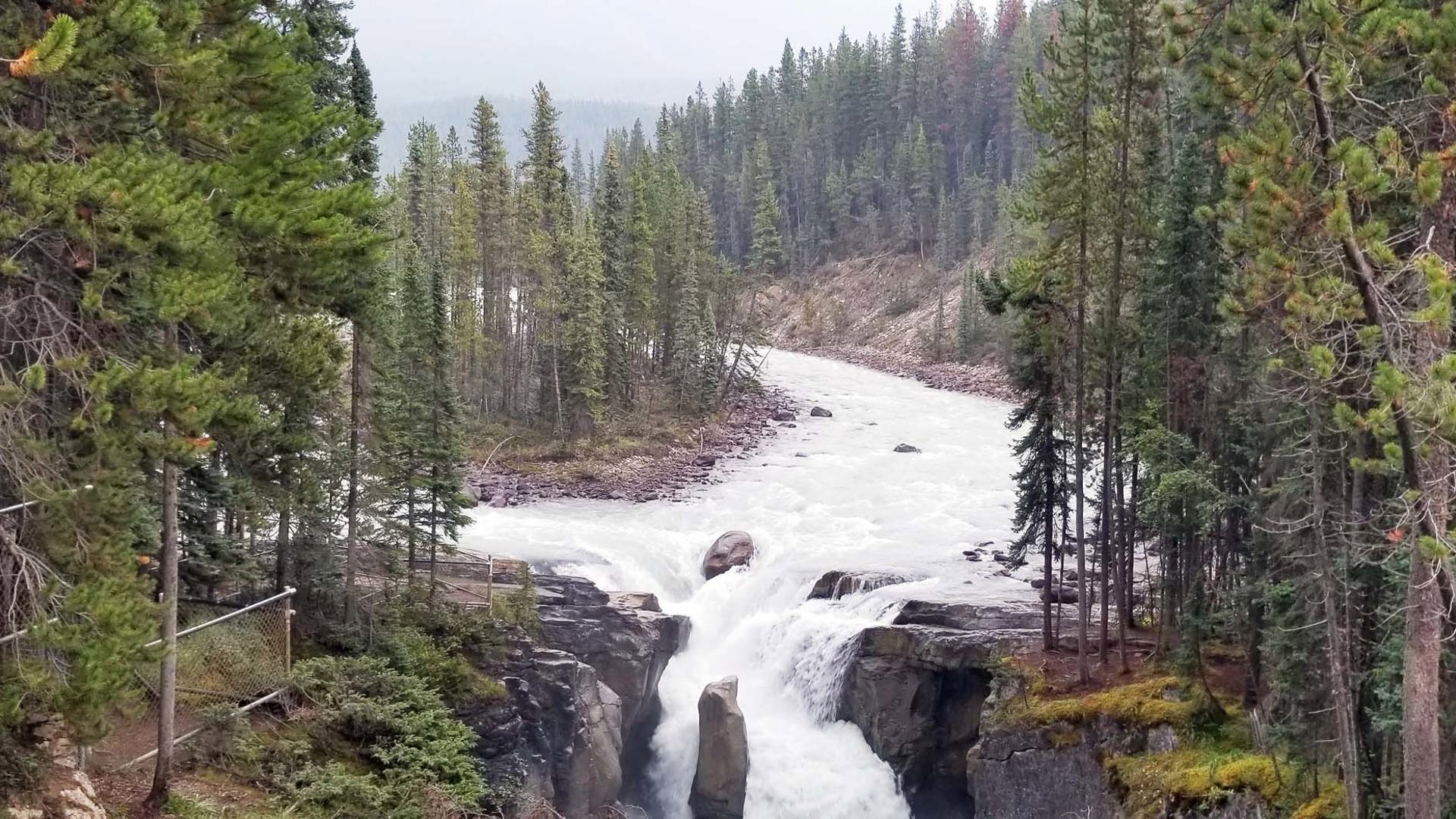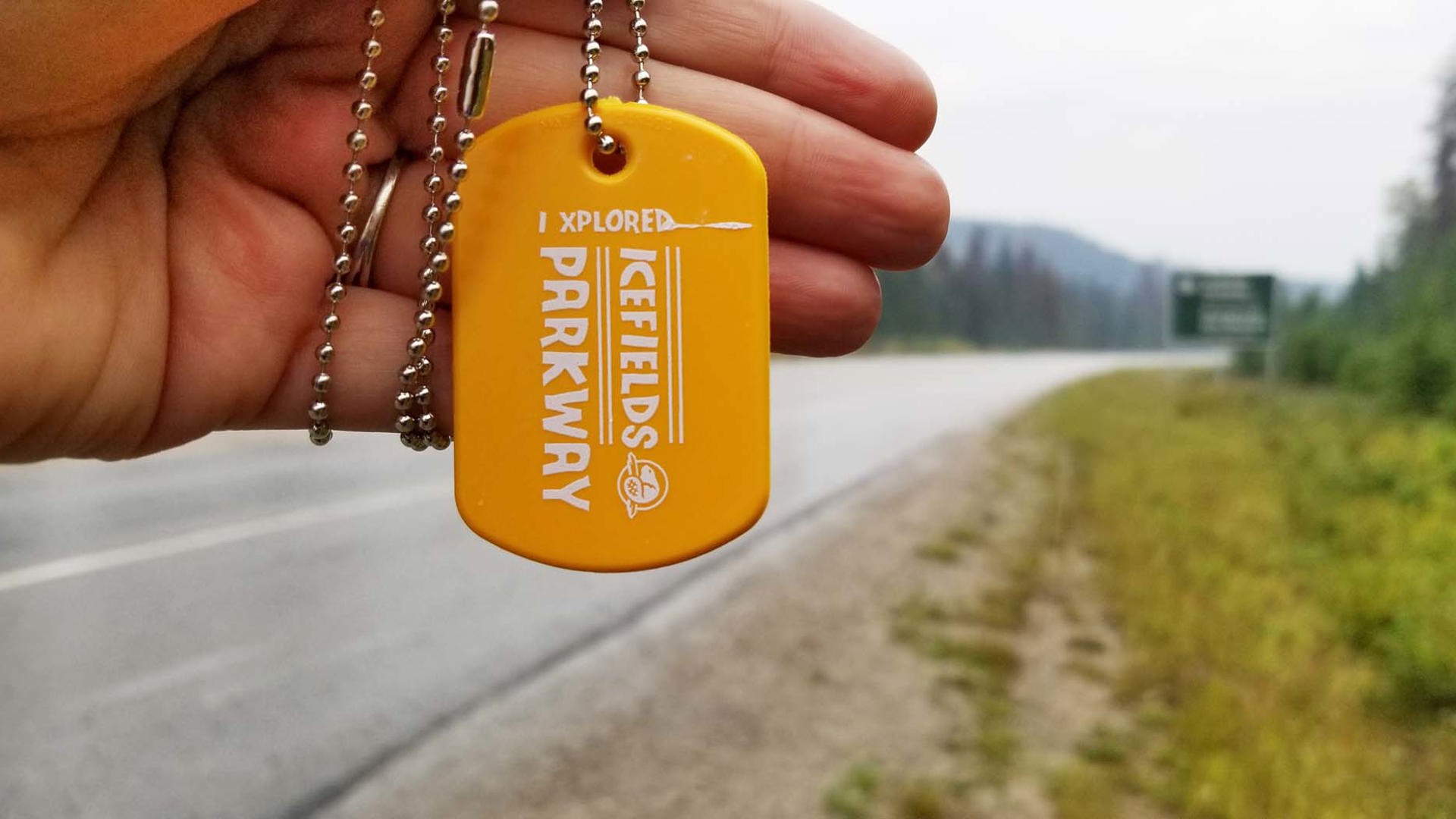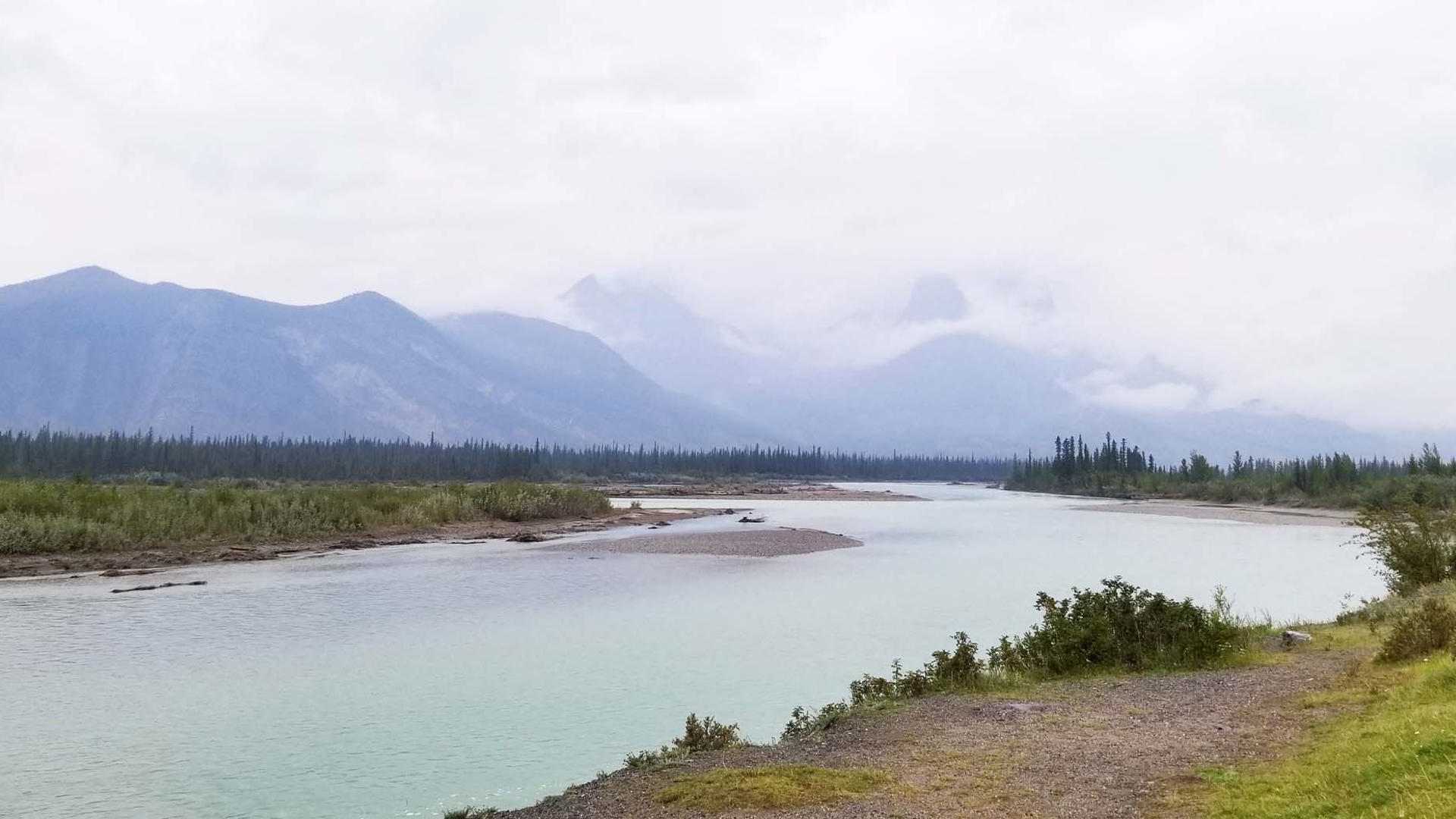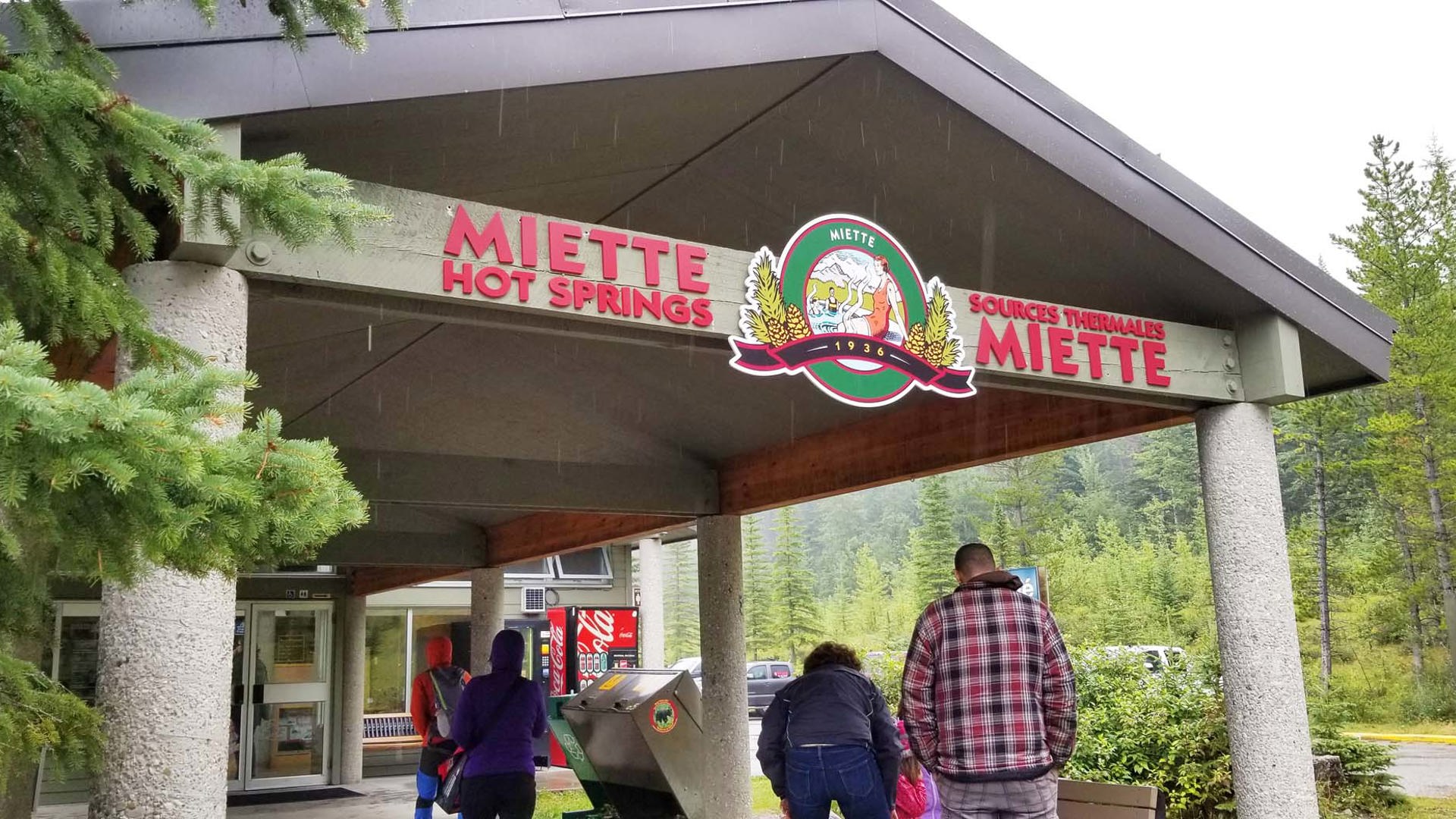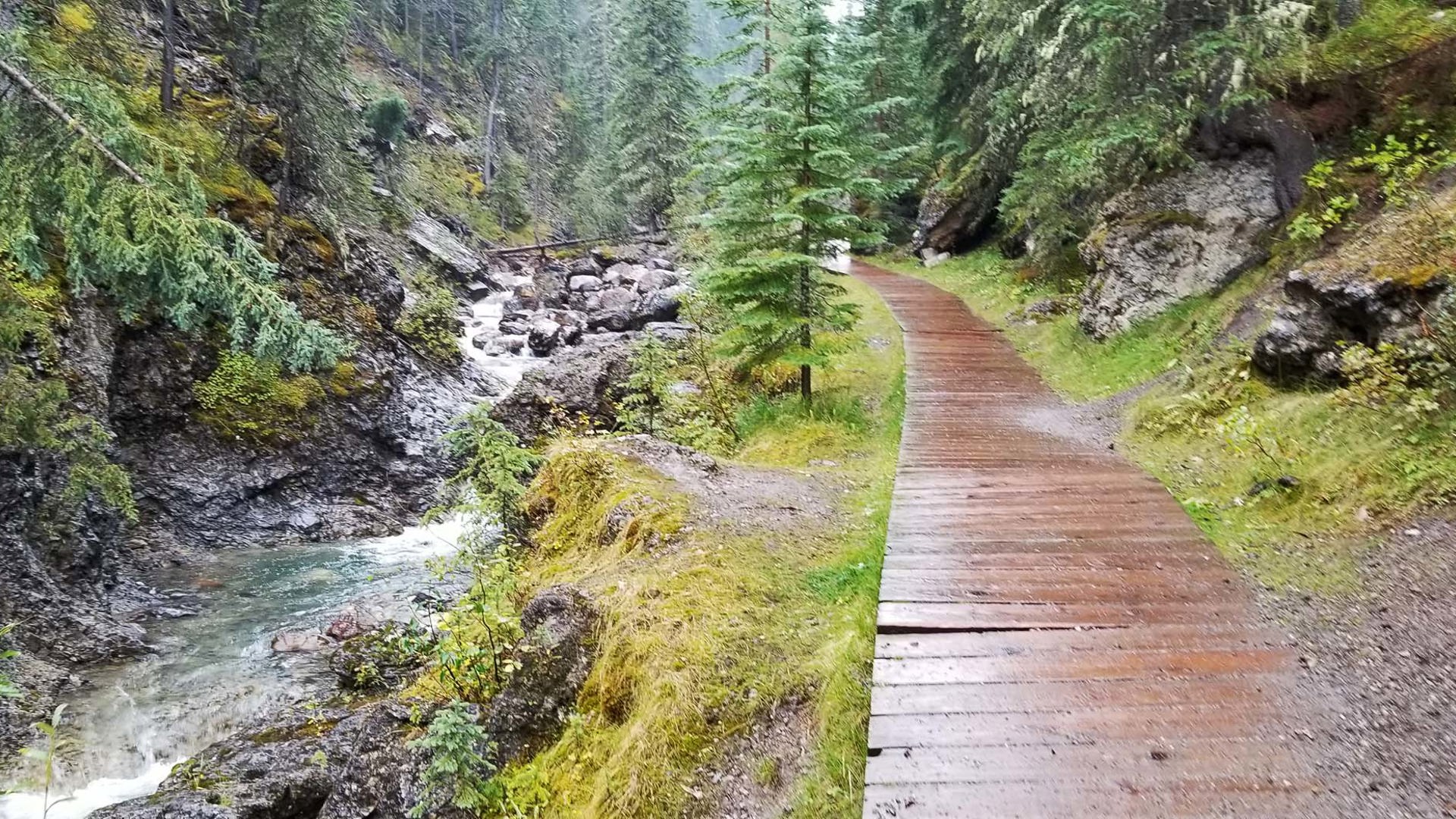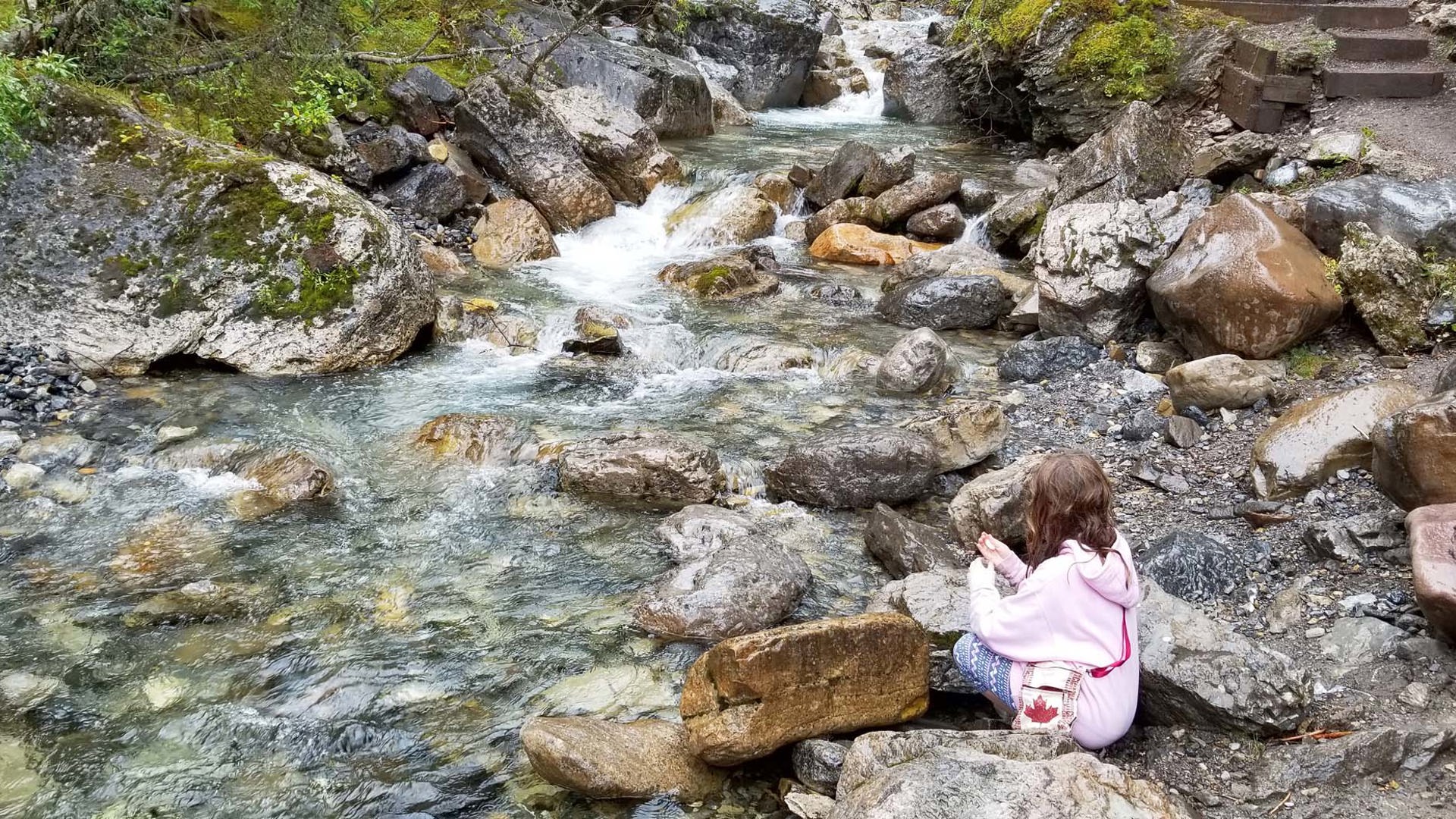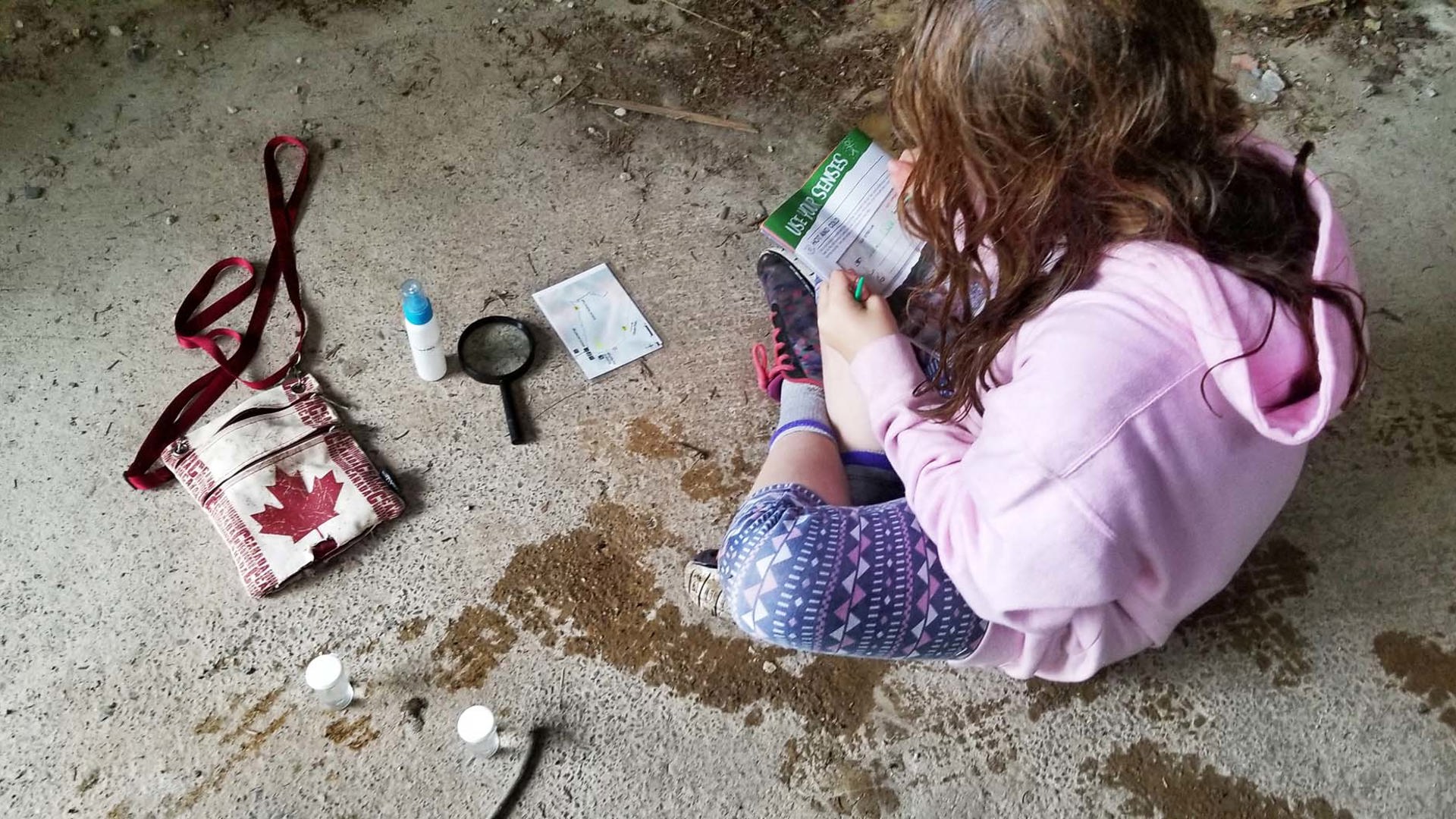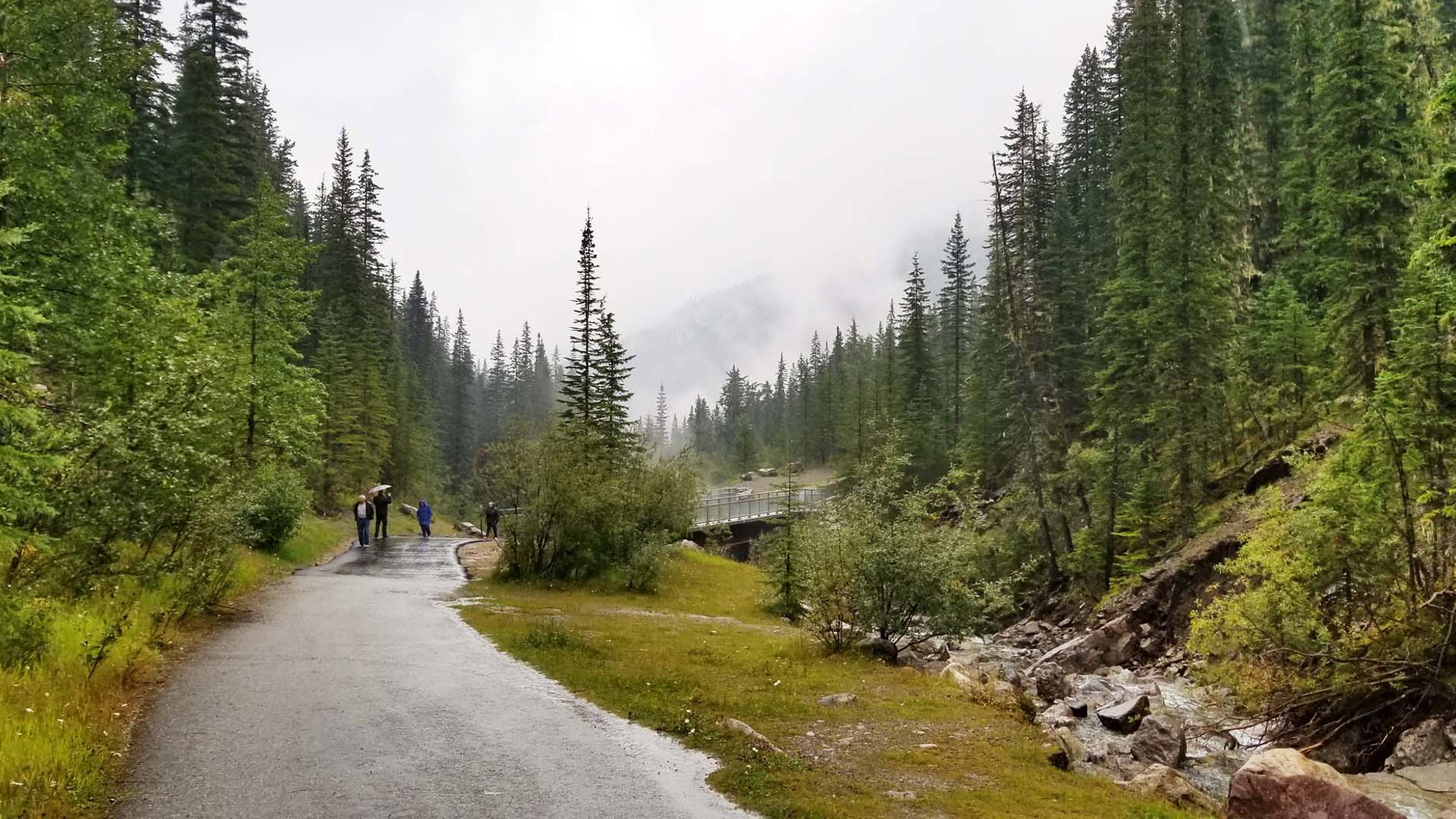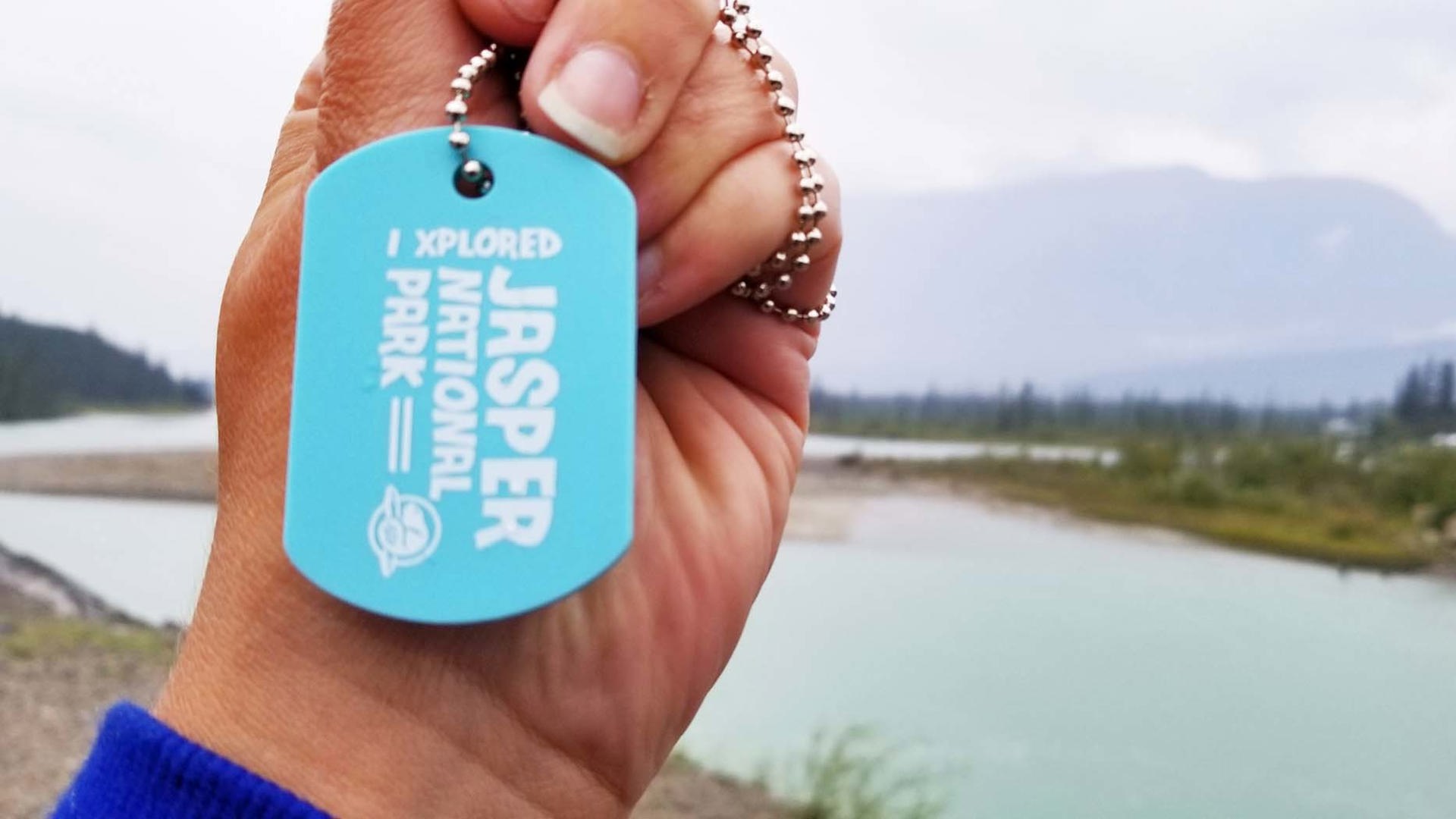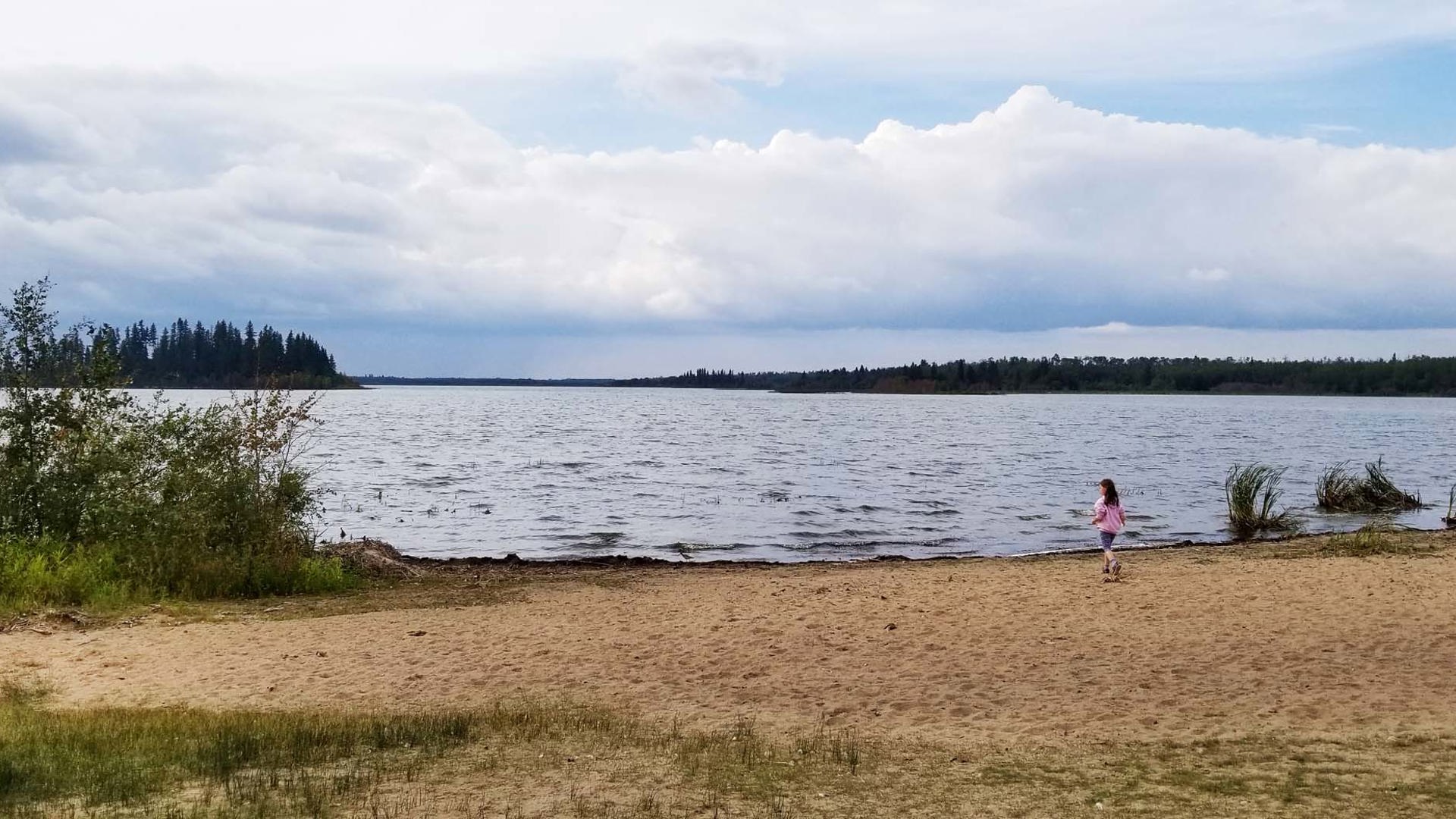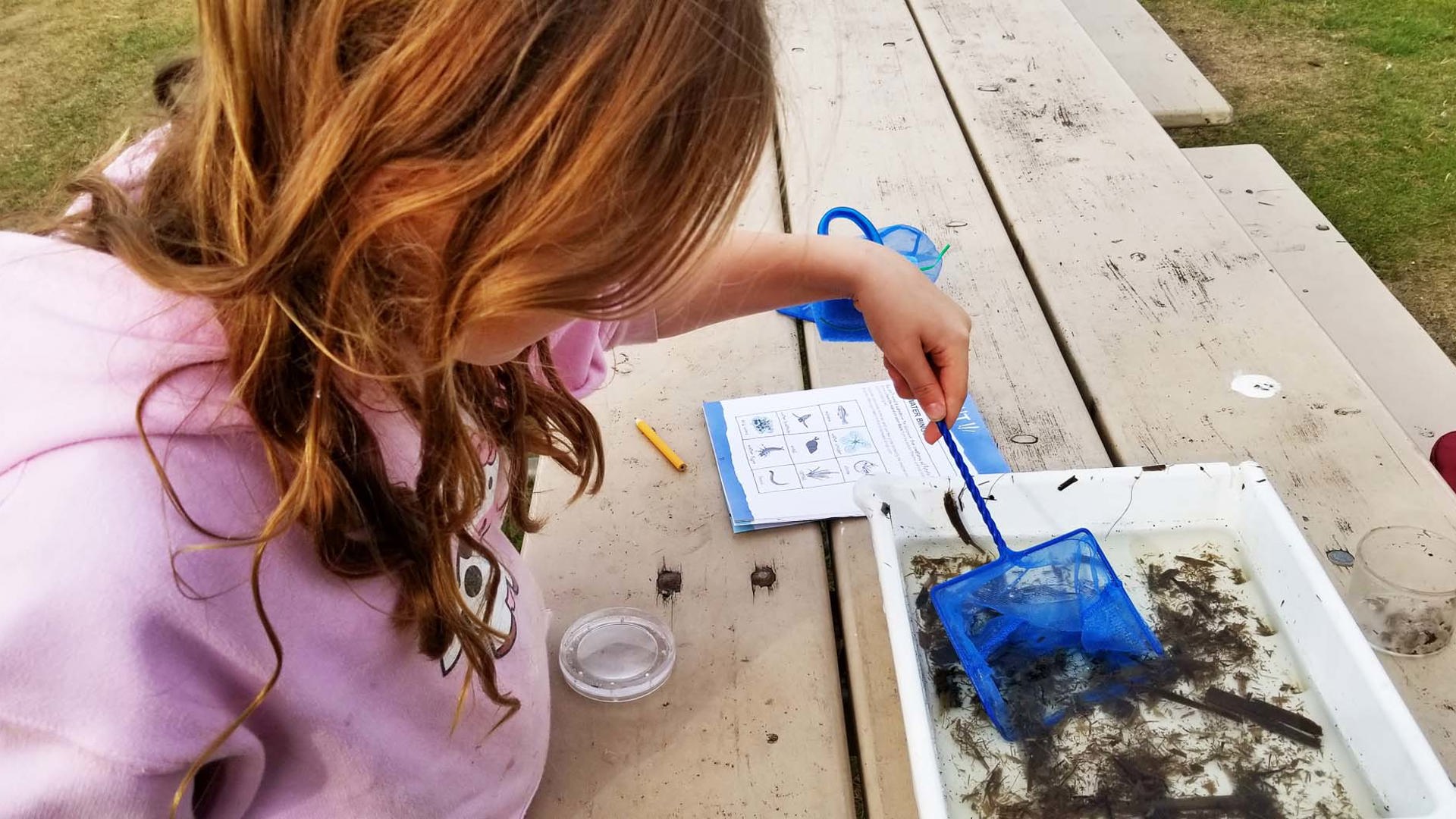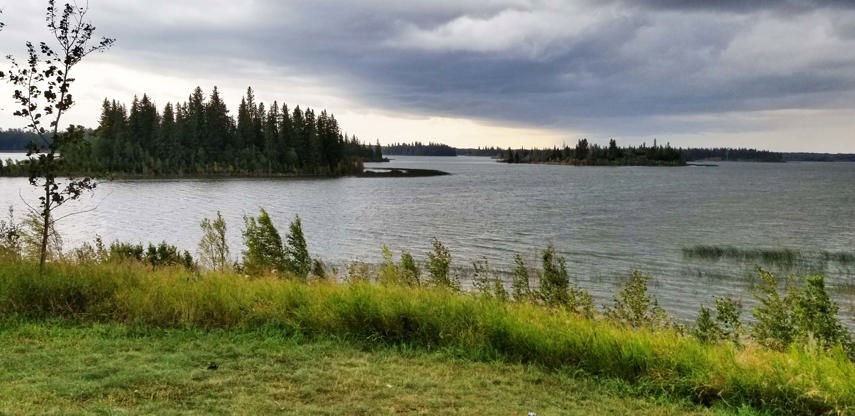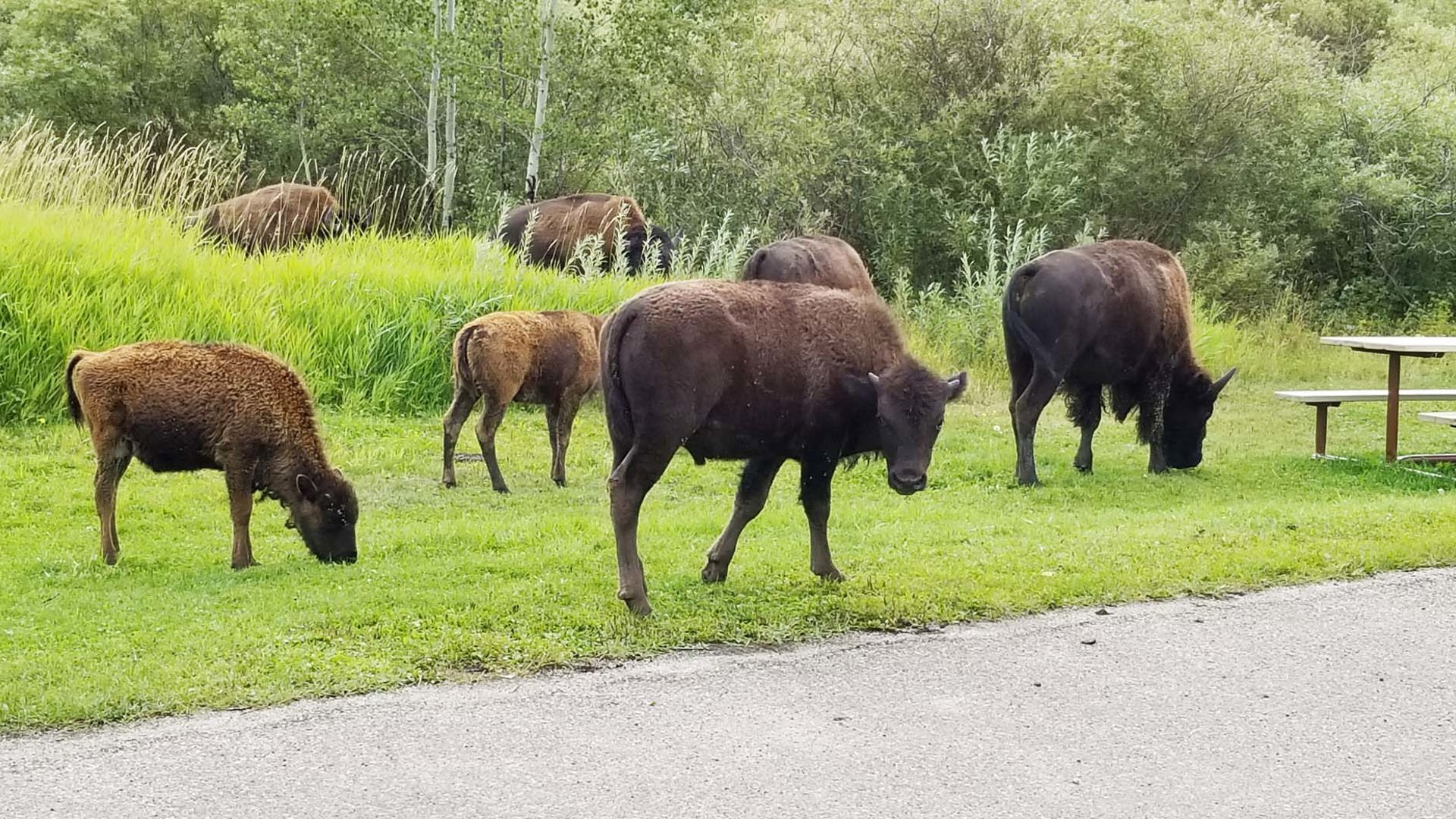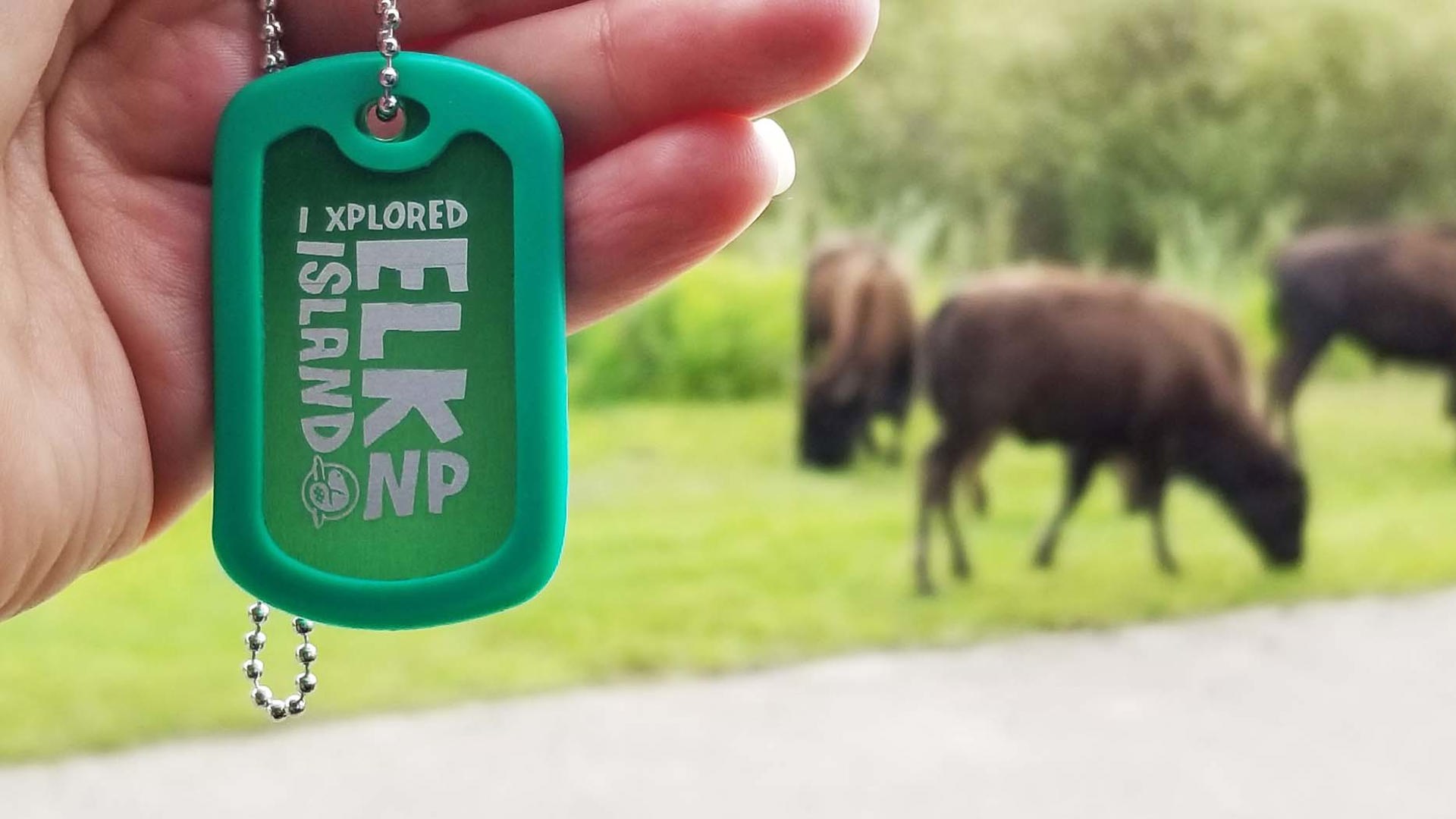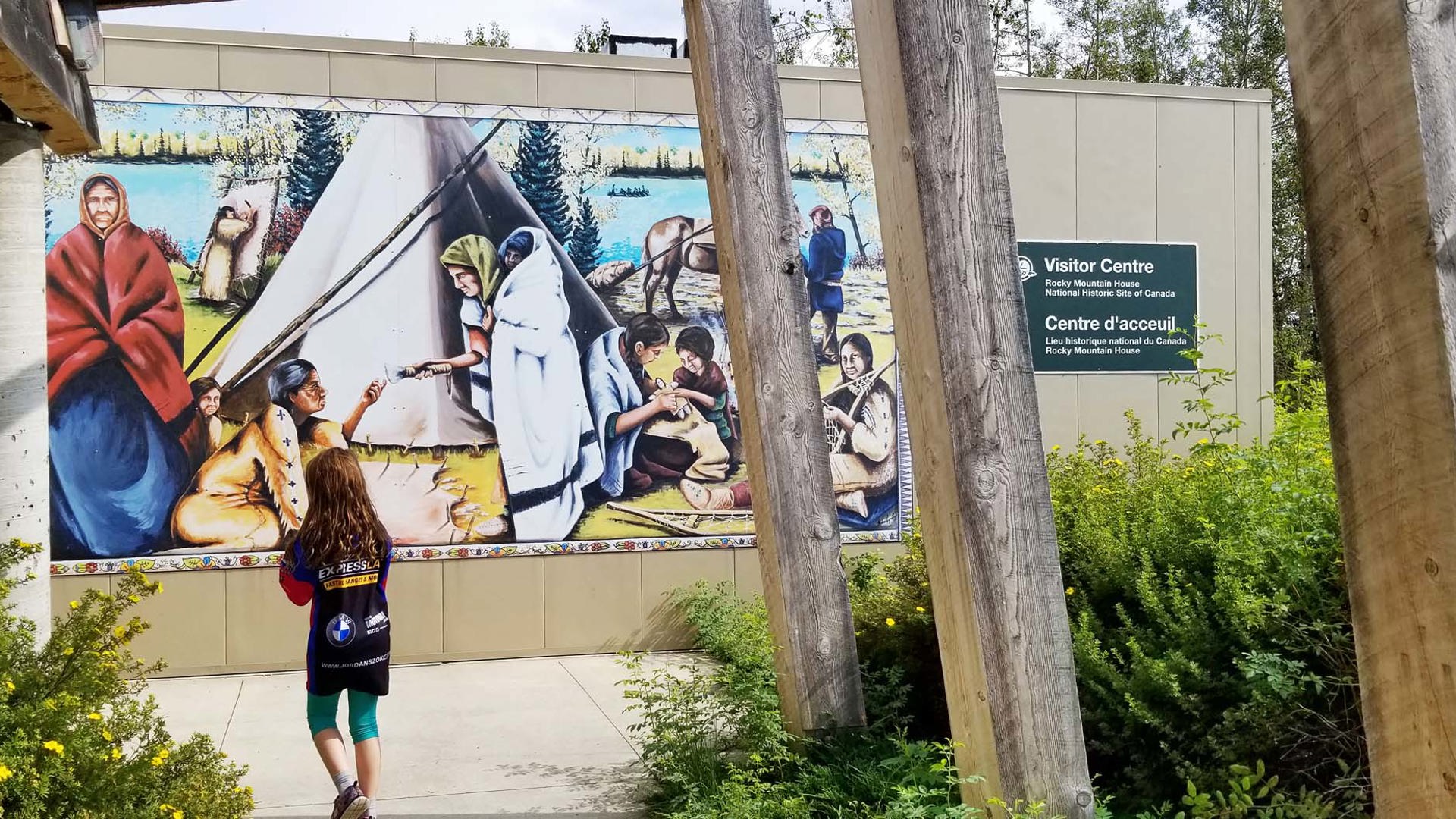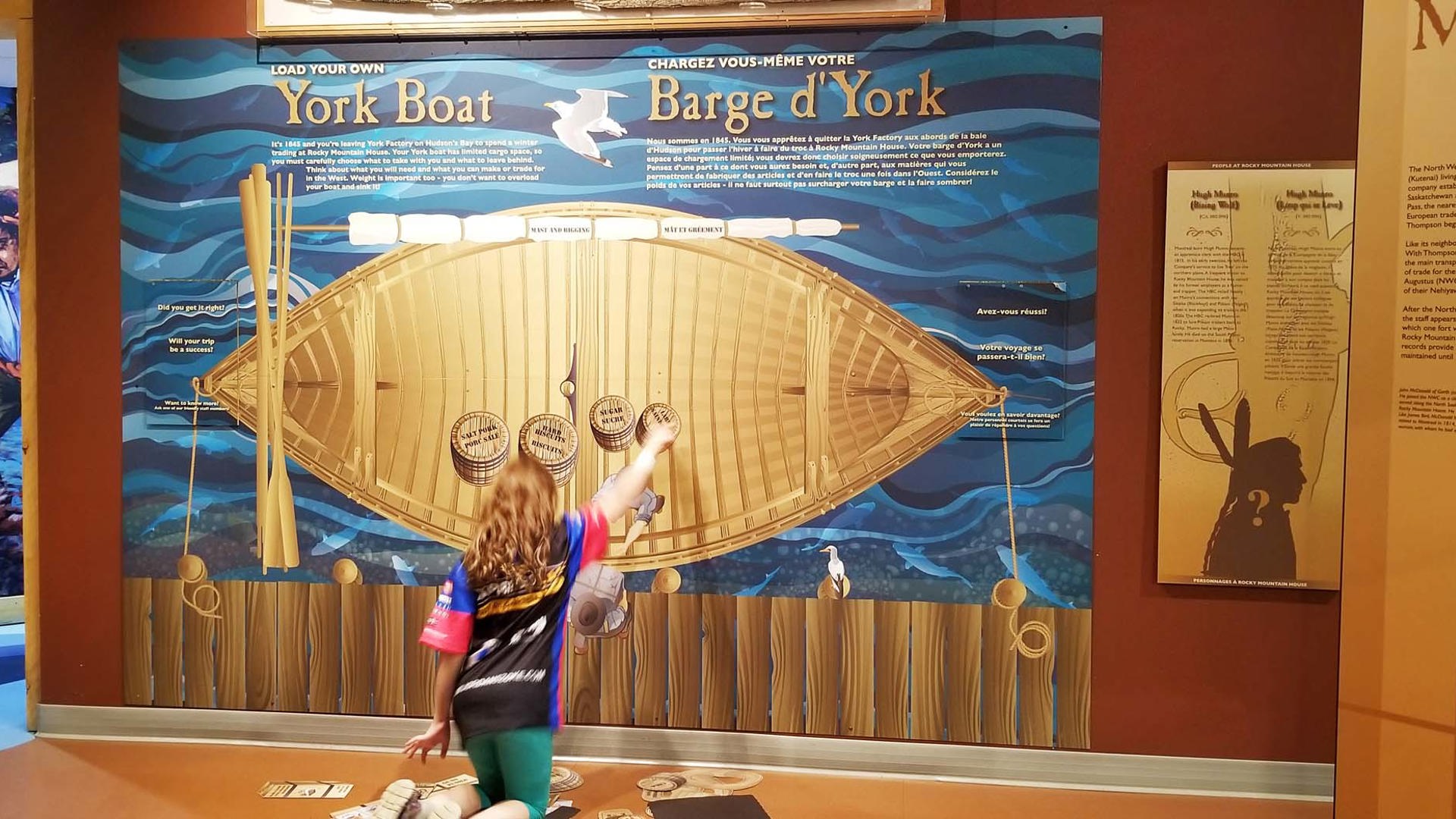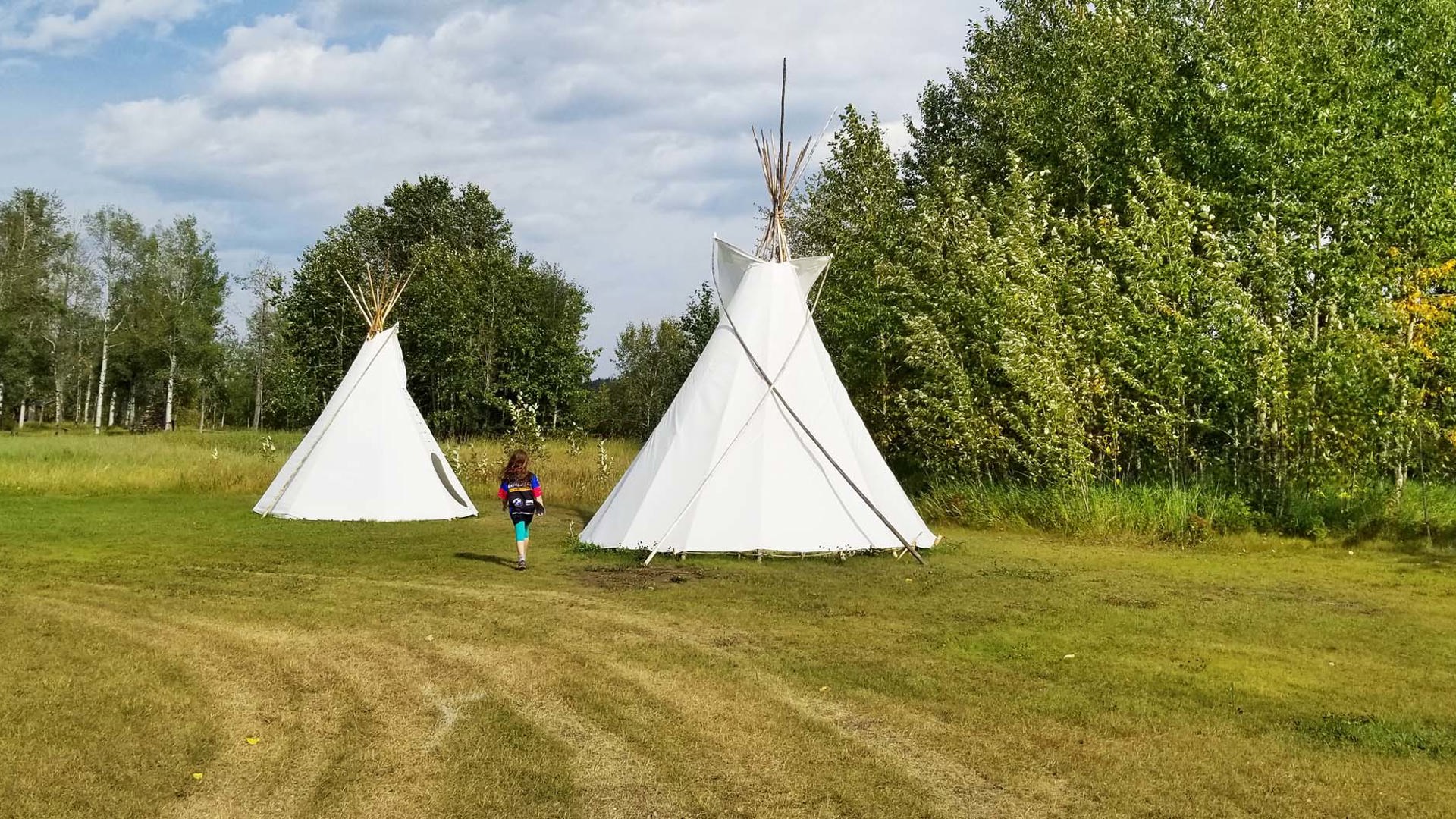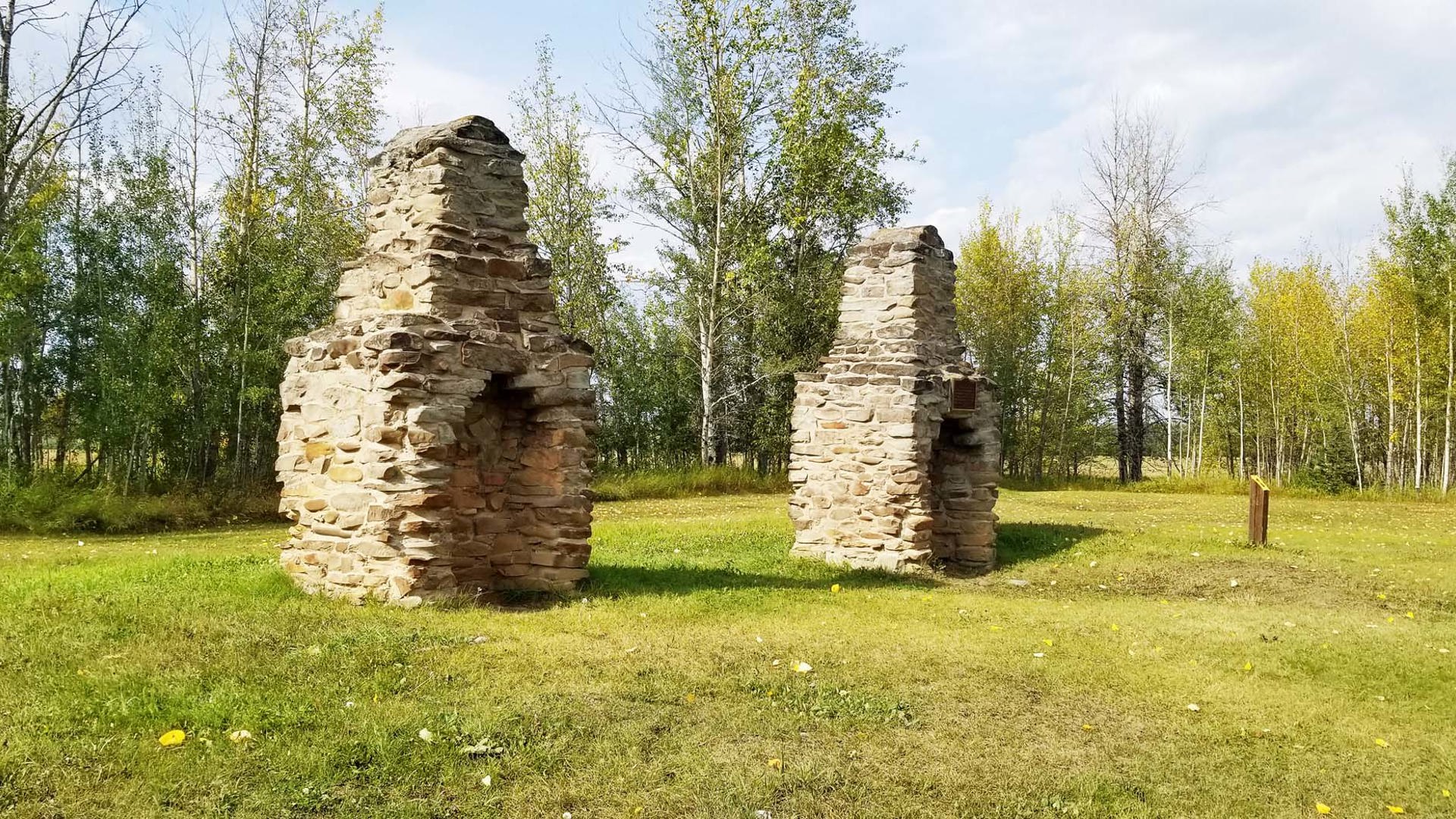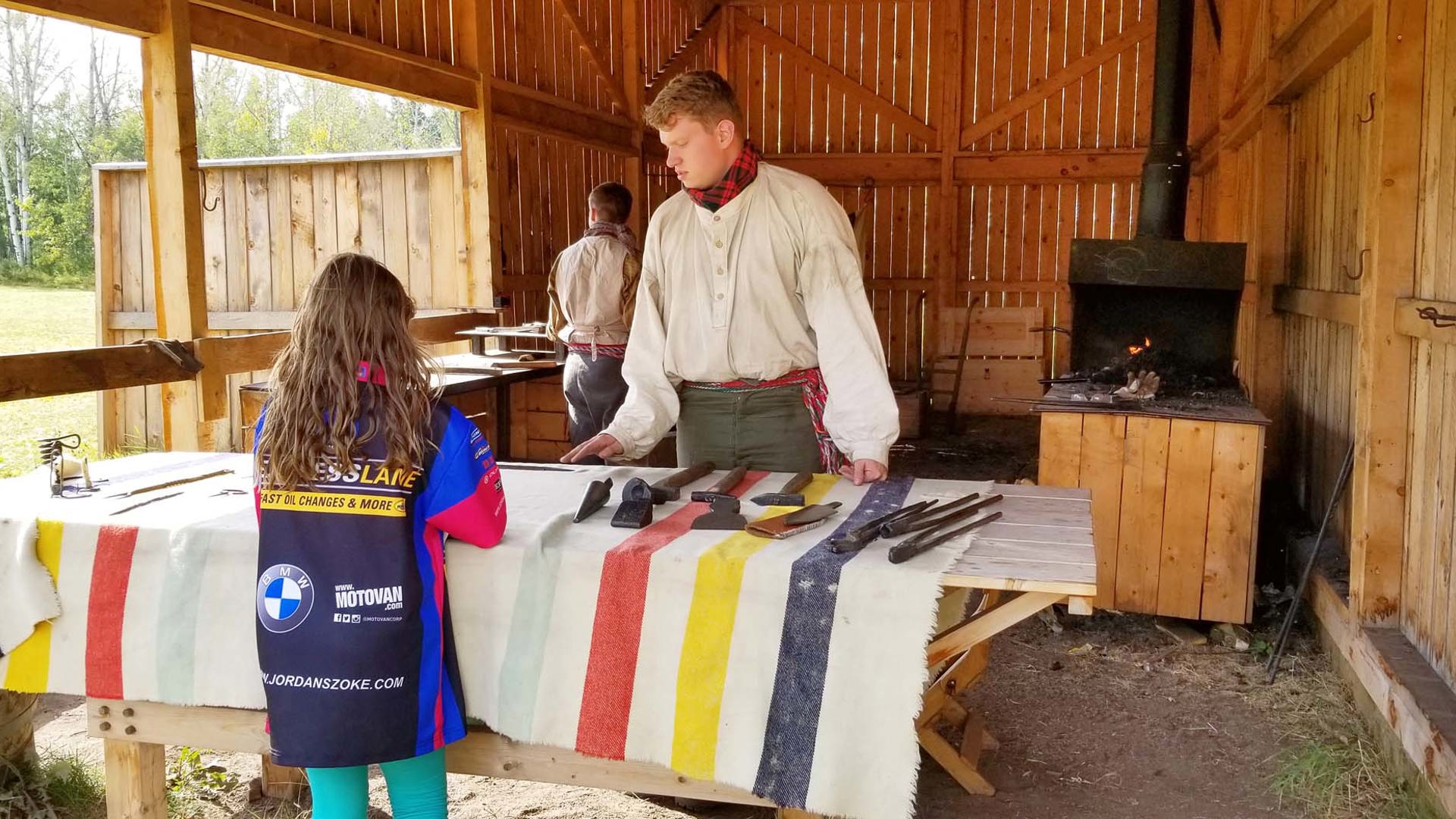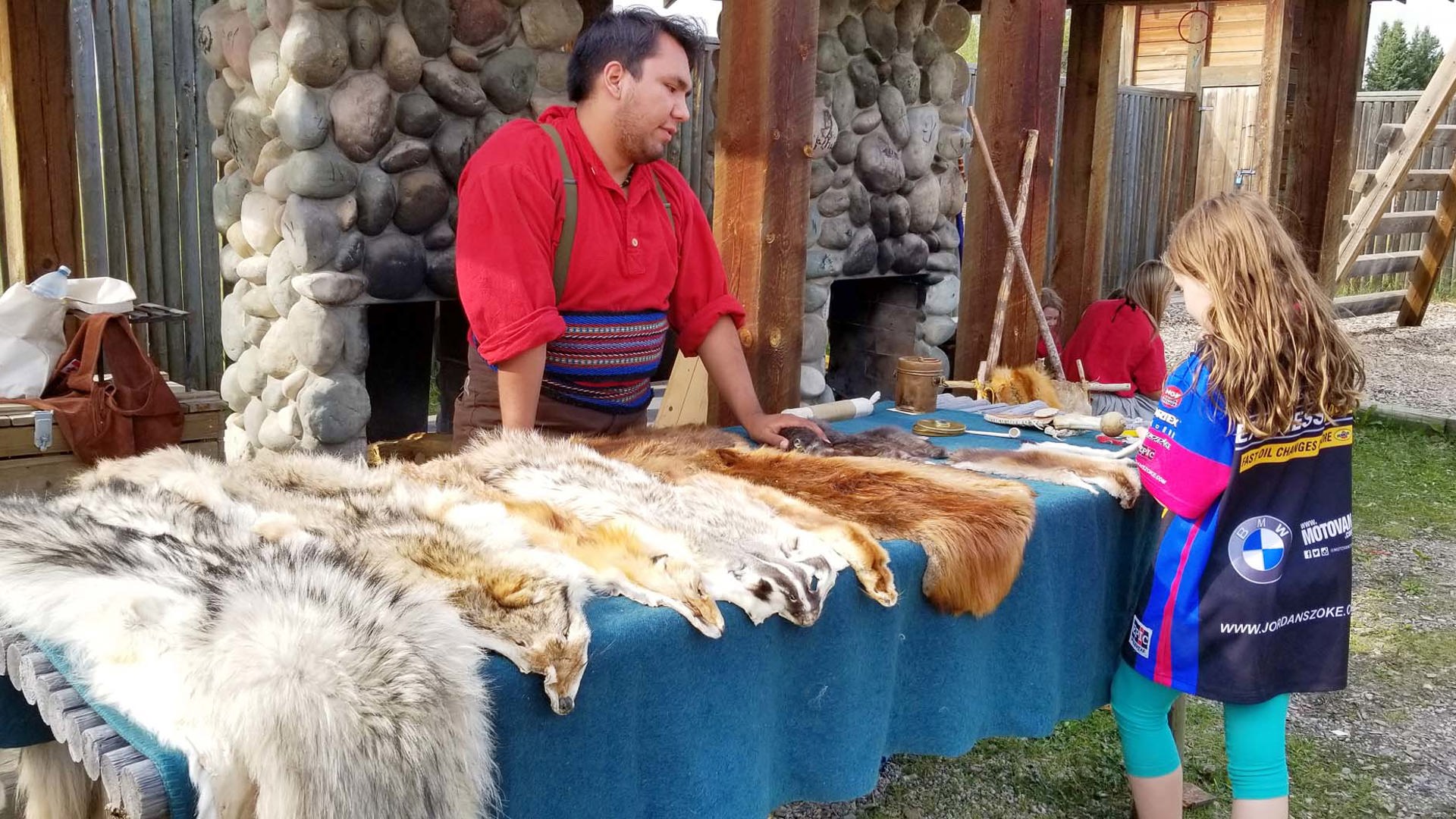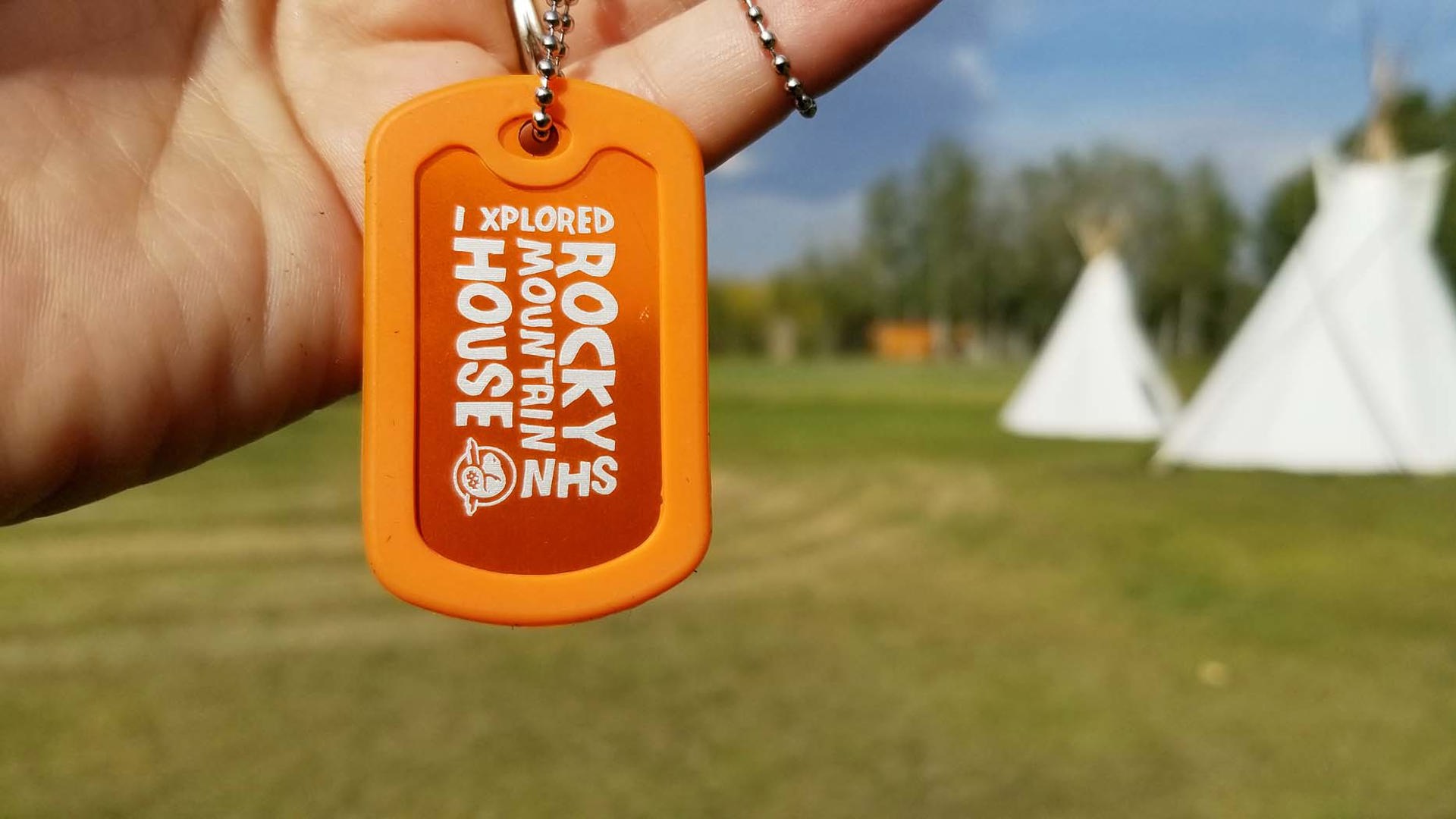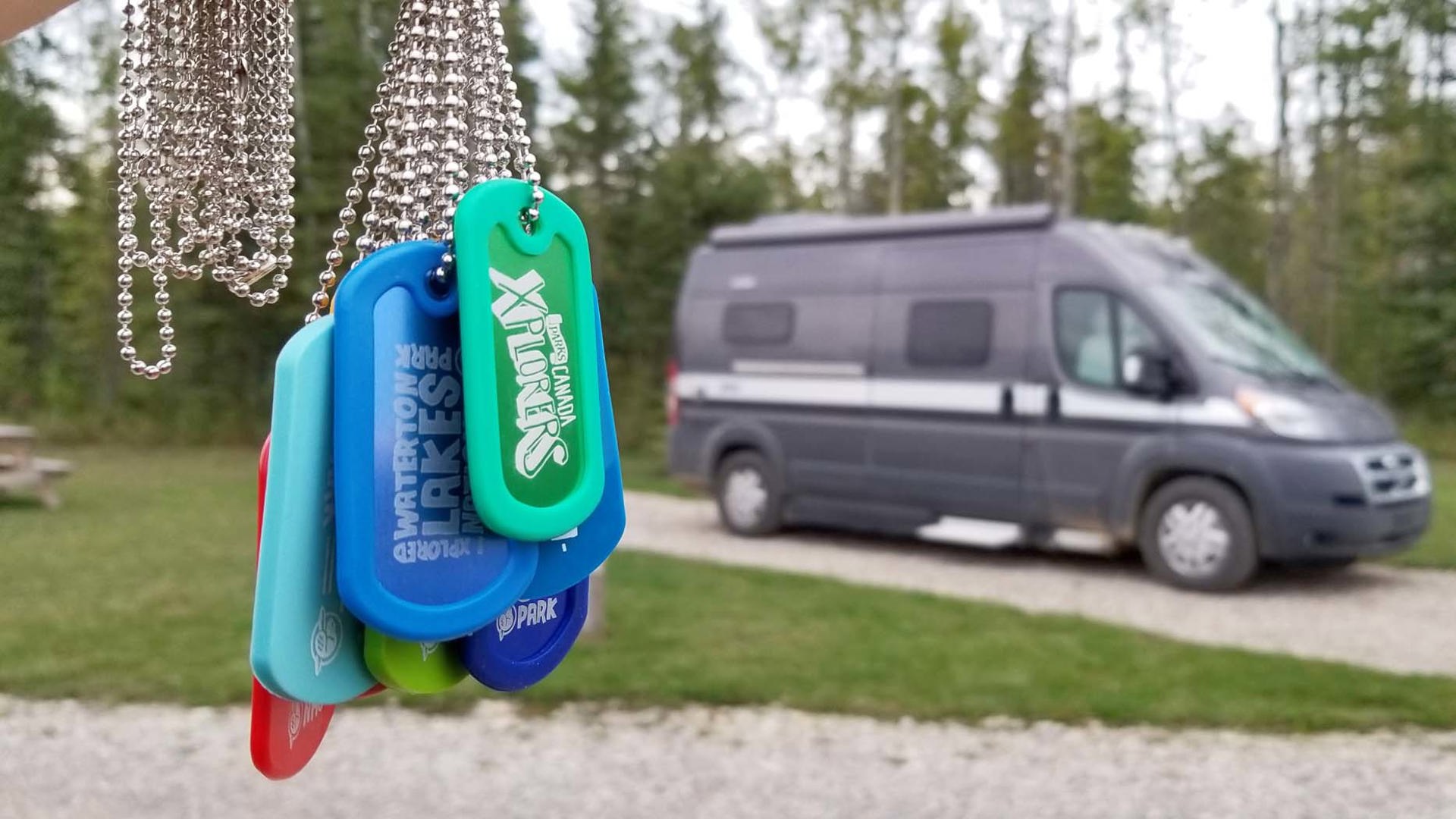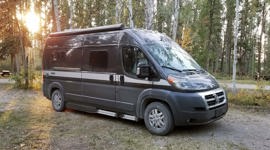Go to Alberta – the mountains are gorgeous!
That’s pretty terrible travel advice, right? If there’s a person left on Earth who doesn’t know that Canada’s Banff and Jasper National Parks are collectively an ecological treasure without parallel, they must truly live under a rock.
The beauty of a road trip, though, is that it allows you to take the routes less travelled and experience not only the well-known wonders but also the ones waiting to be discovered. And in Alberta, there are plenty.
My daughter and I got off the plane in Calgary on a quest to learn what makes Alberta tick – not only in the mountains, but in the foothills and the prairies, too – and to leave with a better understanding of how the province’s history and culture entwines with the rest of Canada.
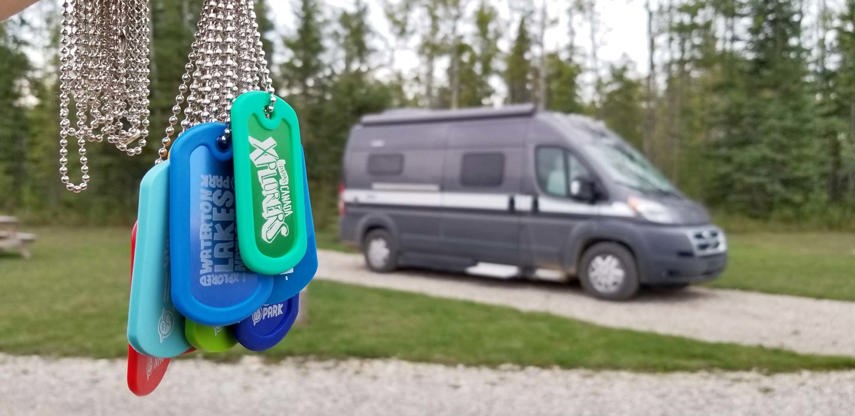
Fortunately, our secondary goal made this easy. My daughter is an avid collector in the Parks Canada Xplorers program. At participating Parks Canada locations, kids are presented with a booklet full of activities to complete, and those who do so successfully receive a prize at the end: a small tag to take home.
We landed in Calgary with 11 days to drive the full length of the province – from the US border at the 49th parallel, northward to the 60th parallel, and on to Wood Buffalo National Park in the Northwest Territories – and gather all 11 Xplorers tags available along the way.
The 10 sites in Alberta range from majestic scenic drives to conservation parks, trading posts, and even a working ranch – a fascinating insight into many different aspects of what shaped Alberta into the province it is today.
Waterton Lakes National Park
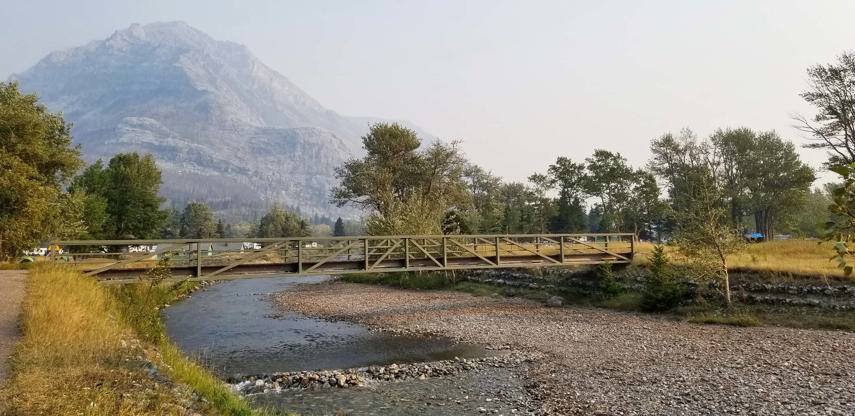
After leaving the airport in Calgary, instead of immediately heading west as so many visitors do, we started our Alberta journey by turning toward the south.
Waterton Lakes National Park sits right on the Canada–United States border across from the state of Montana. To the south, America’s Glacier National Park shares the same small offshoot chain of the Rocky Mountains, and together they form Waterton–Glacier International Peace Park, a UNESCO World Heritage Site. In fact, it’s even possible to join a hike led by both a Parks Canada warden and a Glacier Park ranger that cross freely between the two.
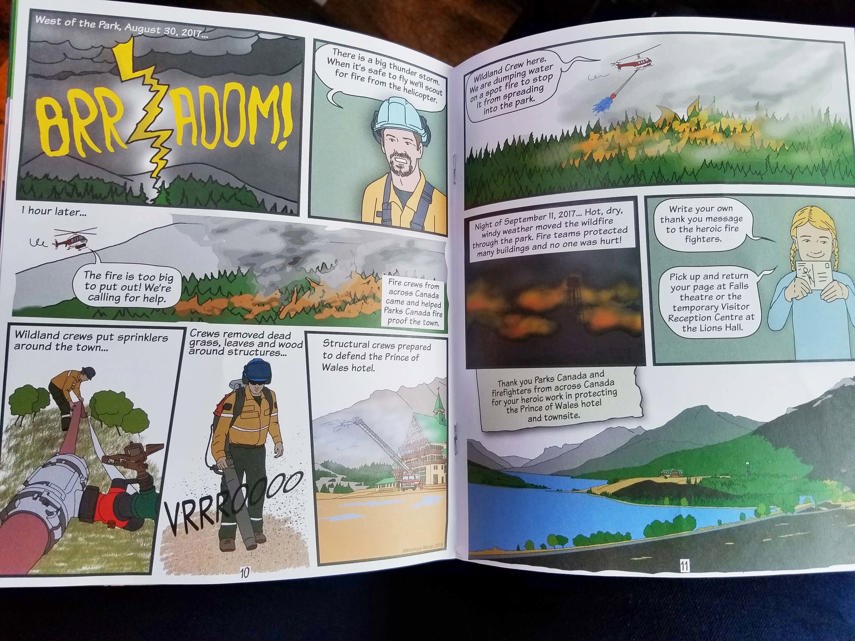
I wondered whether this year was the best time to visit Waterton. In 2017, the park was besieged by the Kenow wildfire, and roughly half of it was closed entirely this season to give the environment a chance to recover. On top of that, wildfires burning this summer in British Columbia covered the landscape with thick smoke while we were there, obscuring some of the views.
But I’m very glad we went. The Waterton townsite remains open, despite the fact that evidence of the fire can be seen on all of the nearby hillsides. While it’s chilling how close it came to the town, the park has embraced the chance to educate visitors on the role that wildfires play in rejuvenating forests and the steps that were taken to protect human-built infrastructure while allowing this natural cycle to take place around it. It’s a unique experience, and the vistas, though very different than they were a year ago, are still stunningly beautiful.
Bar U Ranch National Historic Site
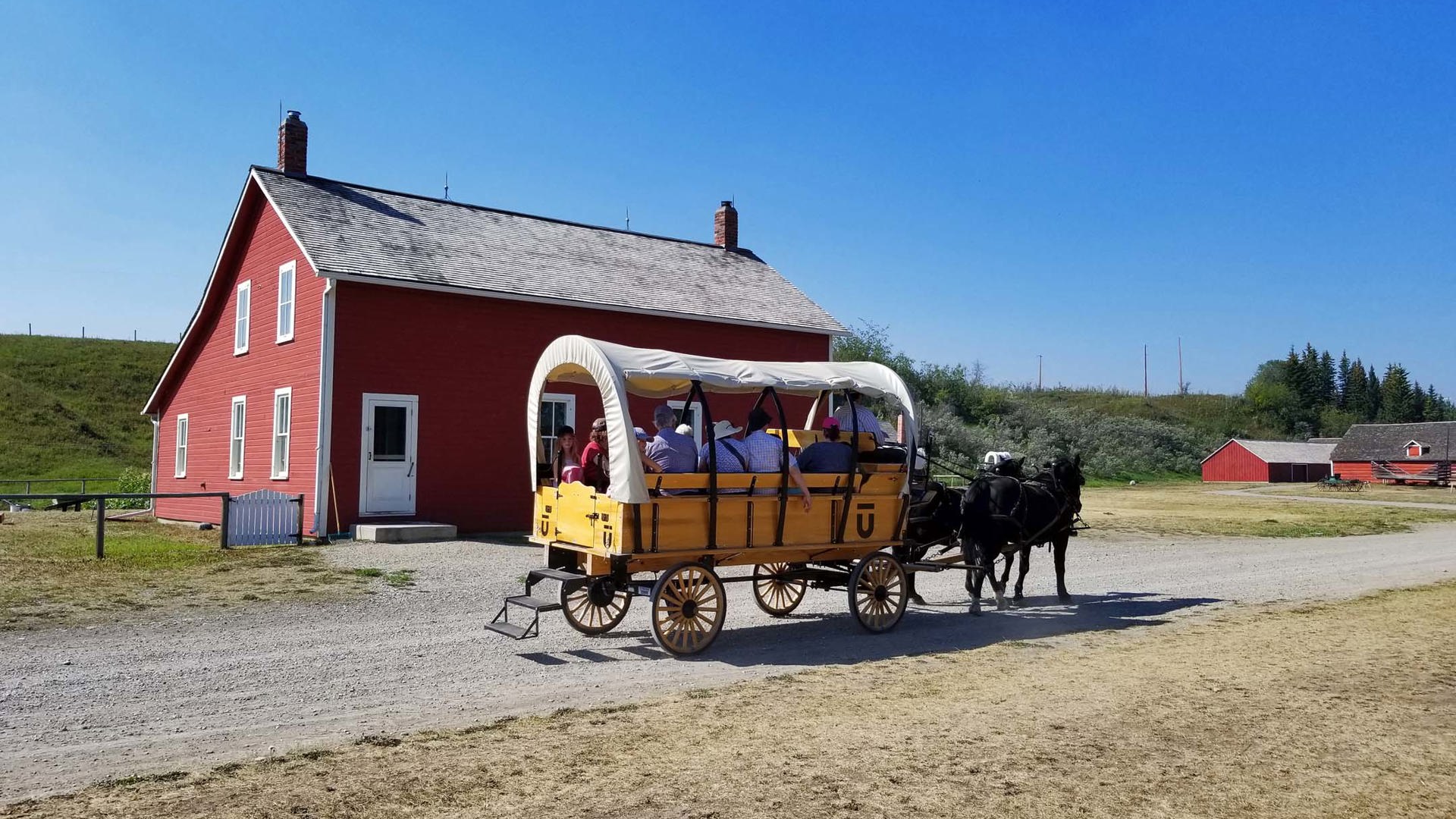
A trip to Waterton Park from Calgary requires a drive along the Cowboy Trail, Alberta’s Highway 22.
Two things make this stretch of highway distinct. For one, it’s incredibly windy, to the point where there are warning signs with flashing lights at the ready to alert drivers of dangerous wind gusts. (The ones that made our Hymer Aktiv 2.0 campervan bounce around in our lane weren’t strong enough to trigger the lights, which shows how intense they must get.)
The highway’s other interesting feature is that it goes right through the heart of the old ranching country. As you trace your way along the foothills, the road is lined on either side with huge tracts of land, the official entrance to each one marked by a traditional three-log archway. They say that Alberta is the Texas of the north, and this is where you really start to believe it.
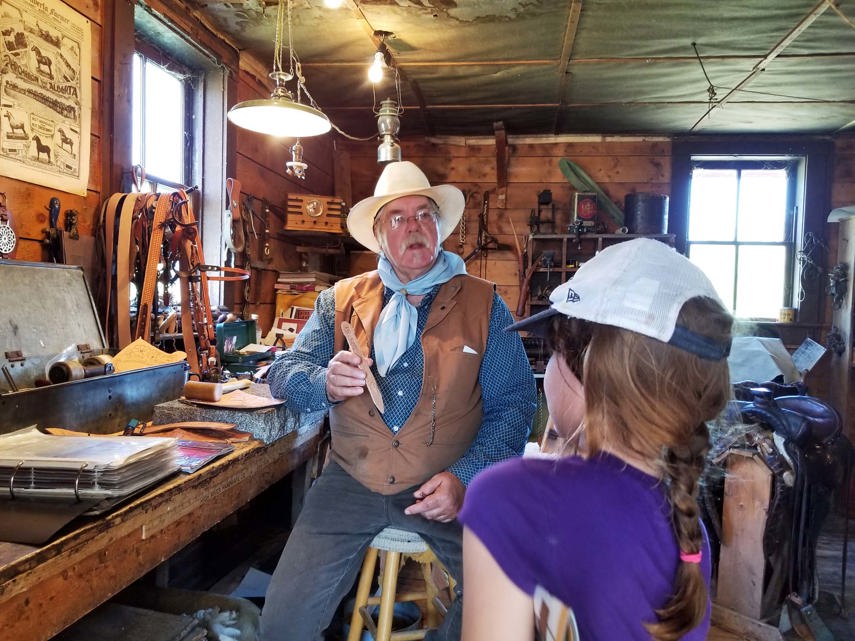
It’s on this road where you’ll find Bar U Ranch National Historic Site, the only Parks Canada location dedicated to preserving this country’s ranching history. Established in 1881, the ranch was one of Canada’s most successful through the early 20th century. From the 1950s onward, advancements in transportation made traditional ranching less sustainable, and the property changed hands between several private owners until Parks Canada purchased a 367-acre parcel of the original ranch headquarters in 1991.
Today, the site is a working ranch again and has been restored to what it might have looked like at its peak in the early 1900s. We enjoyed visiting with the animals, meeting the leather carver (who is also an accomplished cowboy poet), roping the pretend steer, and sitting around the fire at the roundup camp listening to stories about how Bar U contributed Alberta’s history, from playing a role in establishing the Calgary Stampede to saving Percheron horses from extinction during World War I.
Banff National Park
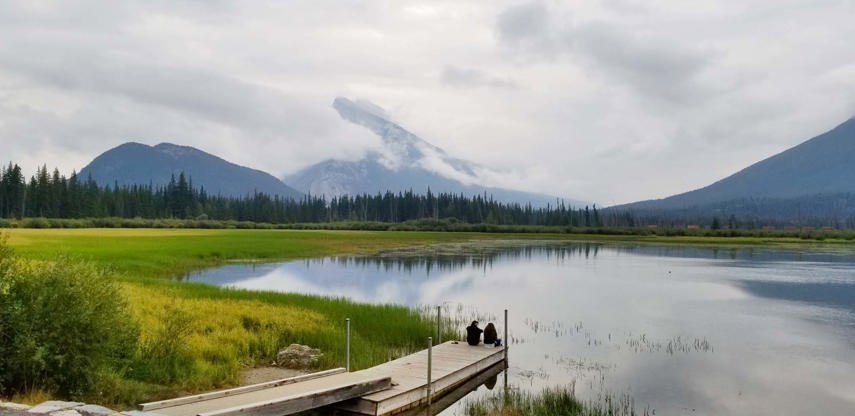
Banff National Park is home to some of Canada’s most famous natural features. Capturing its essence in the two days we had to spend there is all but impossible.
We gave it a go, though, aided significantly by the fact that Parks Canada has already singled out some key locations for us by giving them their own destination tags in the Xplorers program.
By following the activities in the Banff National Park general booklet, we discovered the brilliant Vermilion Lakes Drive, which is just five minutes outside of the townsite and offers an endless chain of spectacular mountain vistas, as well as the natural hot springs and hiking trails on Sulphur Mountain.
We also enjoyed walking through the streets in the Banff townsite and gawking in the windows of the high-end boutiques. It’s an unusual thing to see in a national park, but this scene is deeply engrained in Banff’s history: before it was a site for conservation, it was a holiday destination for the well-to-do, a legacy that remains evident in the town’s make-up.
Cave and Basin National Historic Site
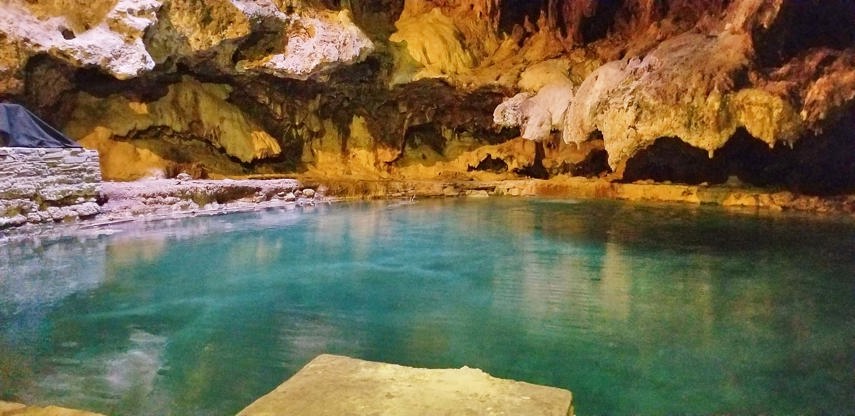
This is the place that started it all. In the 1880s, the federal government began receiving land claims from citizens claiming to have discovered Banff’s hot springs and trying to secure them for their own gain. The debates reached the ears of Prime Minister Sir John A. Macdonald, who decided to put a stop to it by creating a reserve on the land, thereby giving the government ownership for the benefit of the Canadian public.
At one time, there was a bathing pavilion on this site, but it’s since been filled in and the hot spring barred completely from human contact. This is in large part to protect the Banff Springs Snail, an endangered species that relies on the integrity of the sulphur-imbued waters to survive. Both the cave and the basin from which the site takes its name can still be viewed by visitors, and much of the rest of the pavilion space has been turned into a celebration of the history of Parks Canada on the very spot where it began.
Banff Park Museum National Historic Site
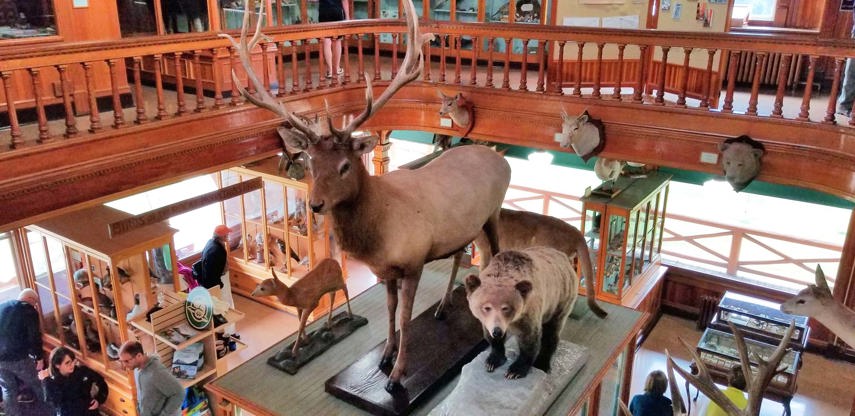
I went into the Banff Park Museum expecting it to be a dry retelling of the park’s century of history. Boy, was I ever off the mark.
In fact, it’s actually the park’s original natural history museum established in 1896 as an attraction to go along with the zoo that used to sit just outside. It’s a historic building in its own right as the oldest in any Canadian national park, and it’s full of over 5,000 wildlife specimens, almost all of which date back to the 1920s or earlier, preserved behind the original cabinets complete with hand-rolled glass windows.
Such a collection would be positively unthinkable today; too many people now see the collection of wildlife for commercial profit to be barbaric. But since it’s more than a century old and is already here, it’s a fascinating thing to behold: birds, eggs, bumblebees, and animals ranging from bats to bison are ready to be examined – just as Norman Bethune Sanson, the museum’s original curator, intended.
Lake Louise
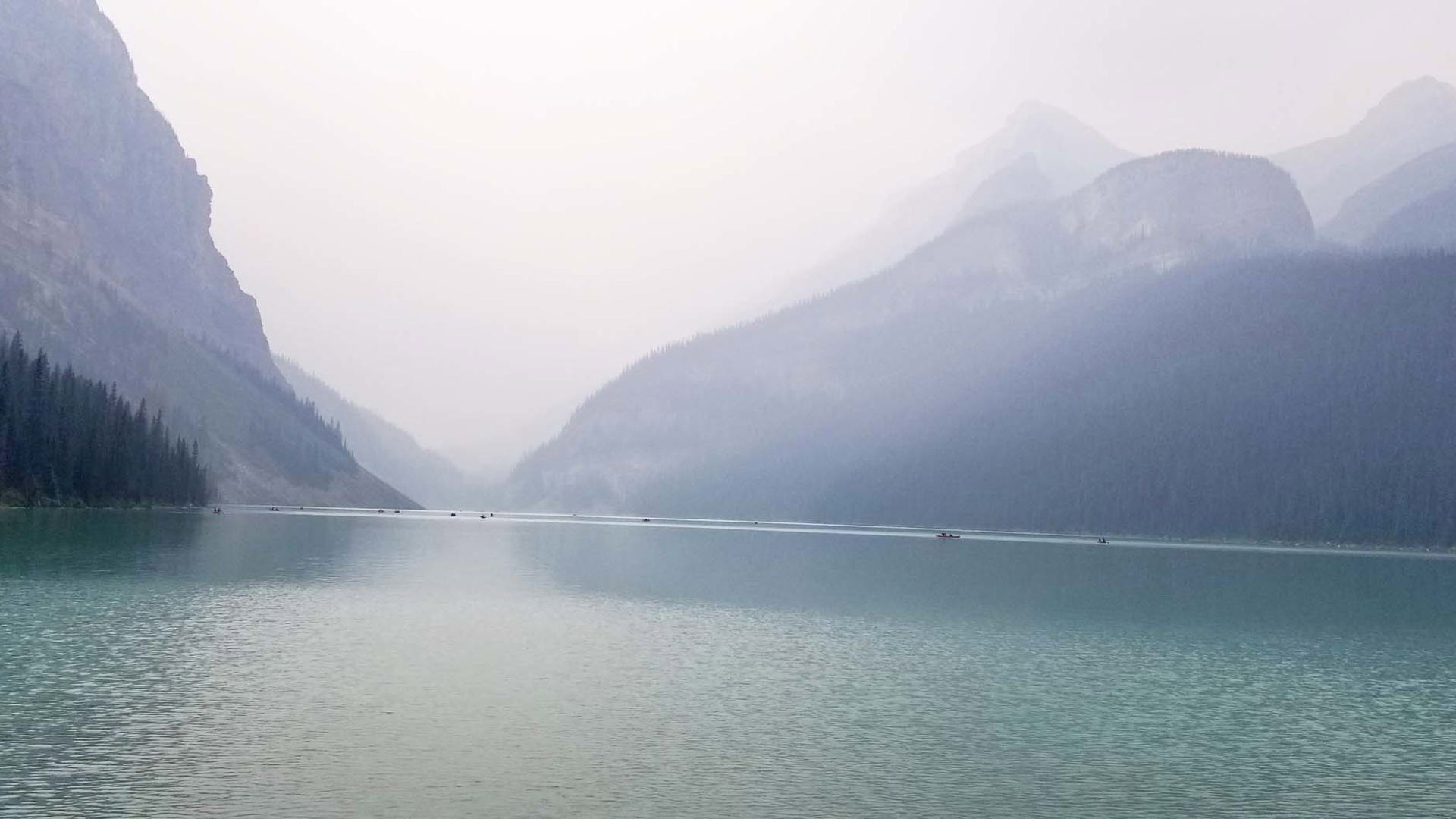
This was a last-minute addition. It was added to the Xplorers website just a couple of weeks before we arrived, and I didn’t realize there was a tag to be had until we went into the Lake Louise visitor centre and it was offered to us. Surprise!
Here’s one piece of advice: don’t try to go to Lake Louise on a weekend. It’s a zoo. There are so many people who want to see this world-famous glacial lake with their own eyes that Parks Canada has had to start managing traffic flow. The parking lots near the lake close as soon as they fill up, and the staff start redirecting people to shuttles that run from an exit several kilometres back south on the Trans-Canada Highway. When we got there, we were told it would be 45 minutes of waiting in line to get onto the shuttle and then a 15-minute ride to reach the lake, and this was at about 11:00 in the morning on a Saturday in late August.
In the end, we made it, and to my mind the experience was worth the work. Like so many others, I’ve been fascinated with Lake Louise since I was a child, and I was determined not to leave without having at least one brief moment of blocking out the crush of humanity and staring out into the age-old stillness. I arrived thoroughly unprepared for the high demand, though, and would have planned to get there much earlier in the morning had I known. If you’re heading there yourself, know before you go – go at the crack of dawn, or choose an off-season weekday instead.
The Icefields Parkway
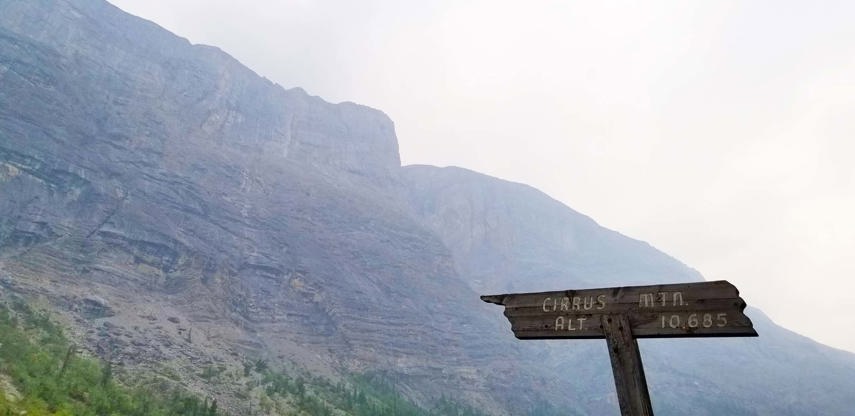
Alberta’s Highway 93 has the distinction of being the only location in the Xplorers program that’s dedicated to a road.
Its 232 kilometres connect Banff and Jasper National Parks through one of the most spectacular drives on the planet. If you consider yourself a road trip connoisseur, your list of accomplishments is not complete until this drive is on it.
Again, the wildfires in BC impeded our views somewhat, but the air was just clear enough for us to gasp and sigh every time we turned a corner.
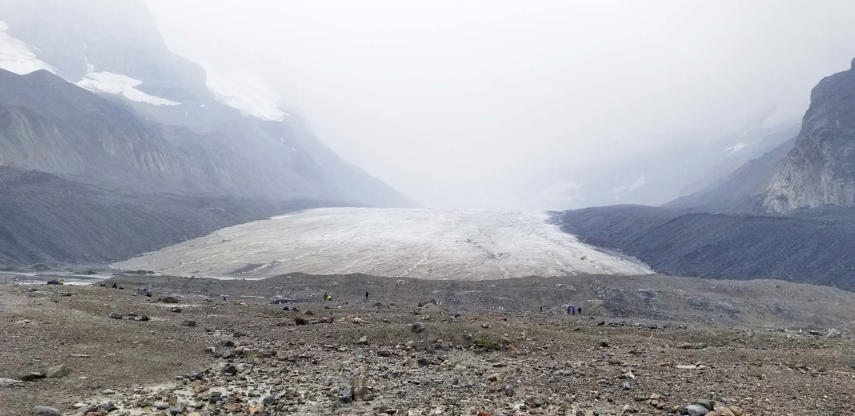
The Xplorers booklet guided us to a couple of quick hikes that shouldn’t be missed. At Bow Pass, it’s a 10-minute hike – on a steep uphill on the way in, the book fails to mention – to the Peyto Lake Lookout, where the shores of the lake look like a coyote’s head. The Sunwapta Falls Lookout is an easier walk and leaves you staring straight down into roaring waters and the powerful canyon they’ve created.
But the most memorable experience for me was the half-hour hike to stand at the foot of the Athabasca Glacier and stare up at the expanse of the Columbia Icefield. We couldn’t stay long because my daughter was freezing – ice is cold, it turns out, so arrive prepared for winter no matter what time of year you visit – but no matter how long you get to look at it, it’s an inimitable display of nature’s might.
Jasper National Park
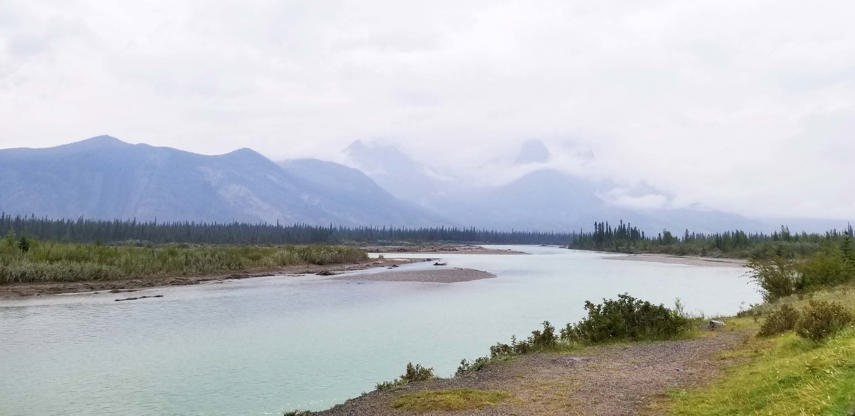
Like Banff, it’s impossible to take in everything that Jasper National Park has to offer in two days, or even a week, or a month if you’re the backcountry adventurous sort. But it doesn’t take a long visit to feel the differences between Jasper and its southern neighbour.
For one thing, the townsite has a vibe that’s noticeably more laid-back. There’s a Tim Hortons but no Starbucks, for example. The campgrounds are no further away from town but somehow feel more remote. The major roads are, on the whole, less like major highways and more scenic. And major destinations are further apart and a little less crowded, more in keeping with the traditional national park experience.
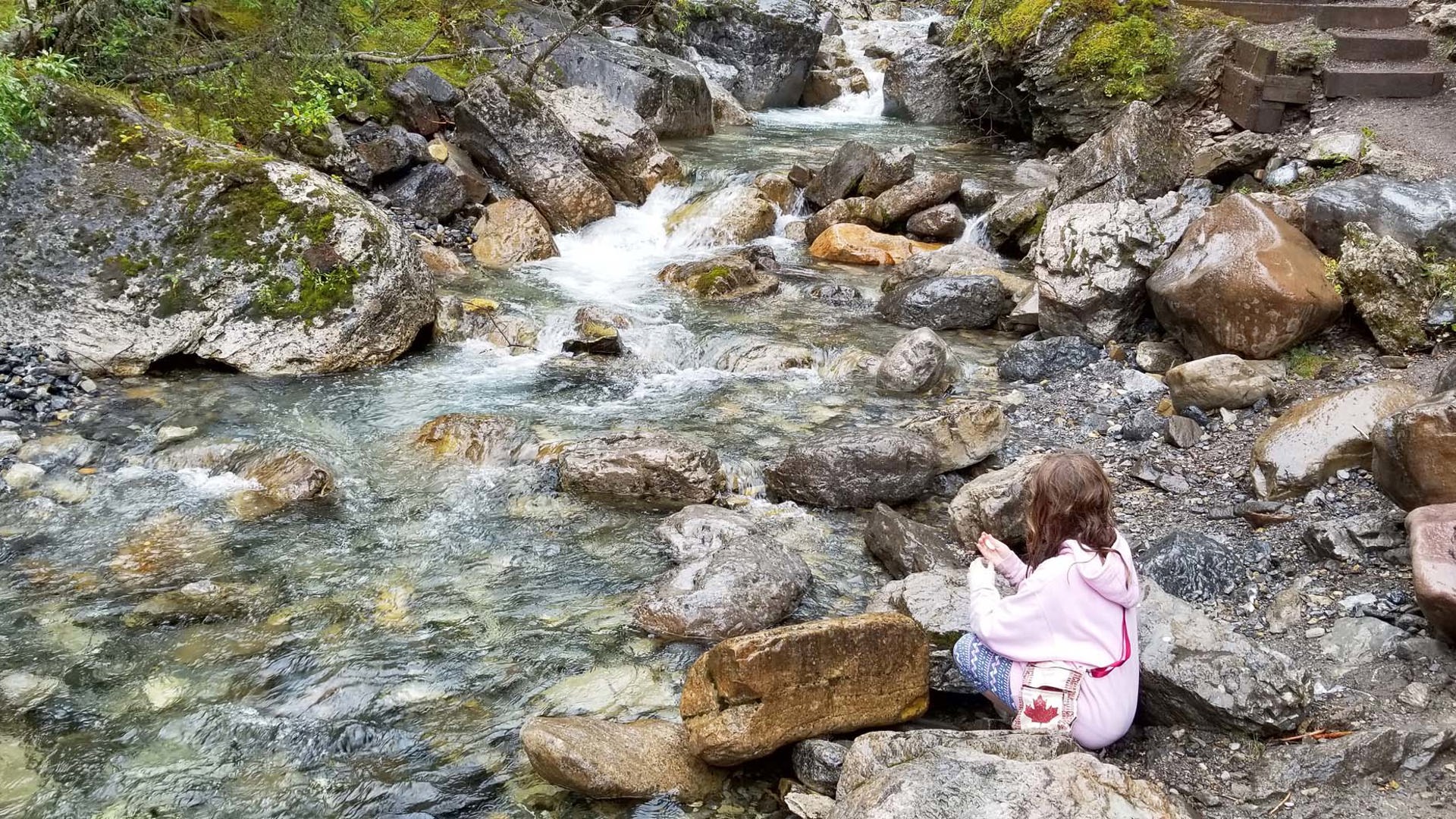
Fellow Xplorers, take note: at Jasper, we found our favourite Xplorers activity to date. Miette Hot Springs is a long side trip off Highway 16 – almost 17 km of winding road, which would be a joy in a great sportscar but felt a bit more like a chore in a Ram Promaster. But when we used the tools in the Xplorers kit as we walked along the Source of the Spring trail to examine the differences between hot and cold spring water and test for young limestone formations called tufa with diluted acid, my daughter felt like an honest-to-goodness geologist. She left thoroughly inspired and has asked to recreate the kit to bring with us on future adventures. It’s that kind of engagement with Canada’s natural environment that the Xplorers program is all about.
Elk Island National Park
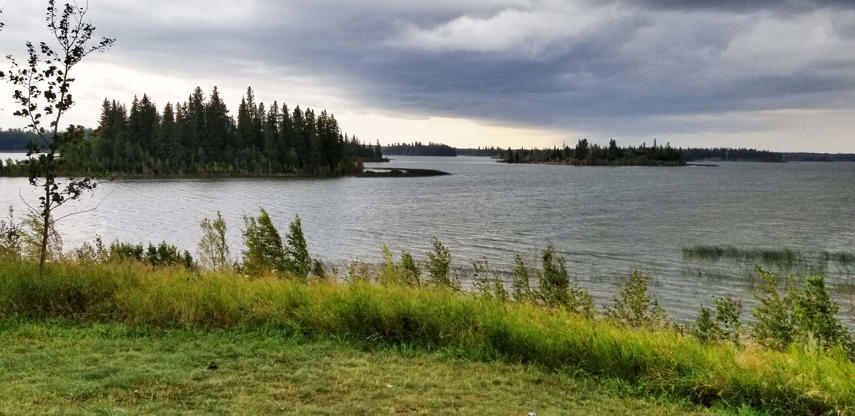
Unlike its western Alberta neighbours, Elk Island National Park exists more for conservation than for mass tourism, but it’s the fact that it flies under the radar that makes it such a hidden gem. If a near-guarantee of seeing wildlife sounds like your idea of a great camping experience, then it’s worth the drive 20 minutes east of Edmonton.
There are some elk that call Elk Island home, though they’re few in number and tend to keep a low profile away from humans. What there are plenty of in the park, though, are bison – more today inside the park’s boundaries than there were in all of North America in 1890. Two types are protected here: the plains bison live north of Trans-Canada Highway and can be seen on an average drive through the park; and the wood bison live south of the highway and can only be viewed from the hiking trail around Flyingshot Lake.
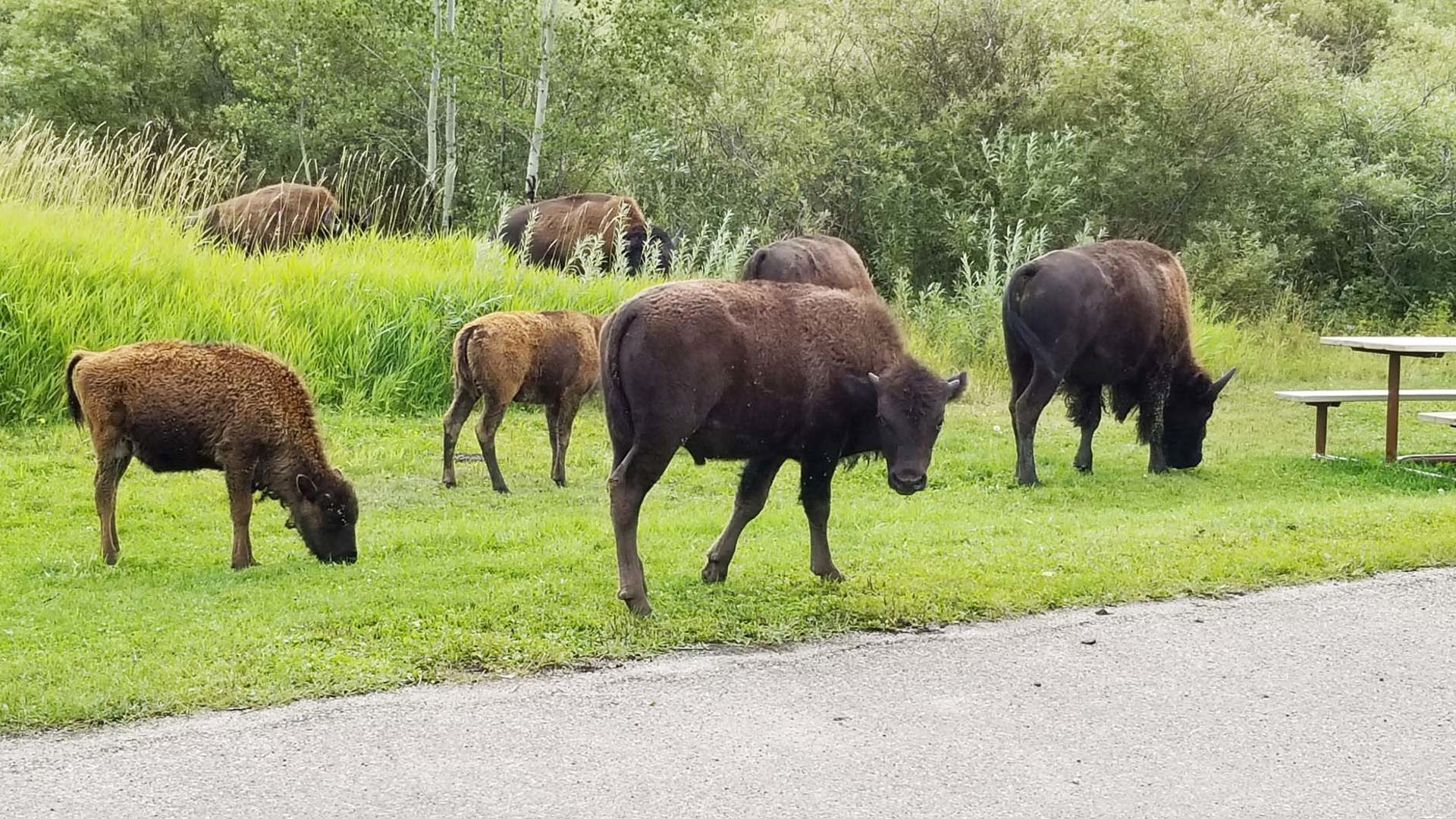
Parks across Canada and around the world have had their diminishing bison populations replenished from Elk Island’s stock, which uses protective measures such as a full perimeter of fencing to keep its herds healthy and safe.
Visitors are asked to keep a distance of at least three bus lengths from the bison for their safety and ours, but sometimes it can’t be helped. We came around a corner on our way out of the park and found ourselves right in the middle of a herd grazing from one side of the road to the other. We had no choice but to pull over and wait for them to pass, but the privilege of watching them in the meantime was something very special.
Rocky Mountain House National Historic Site
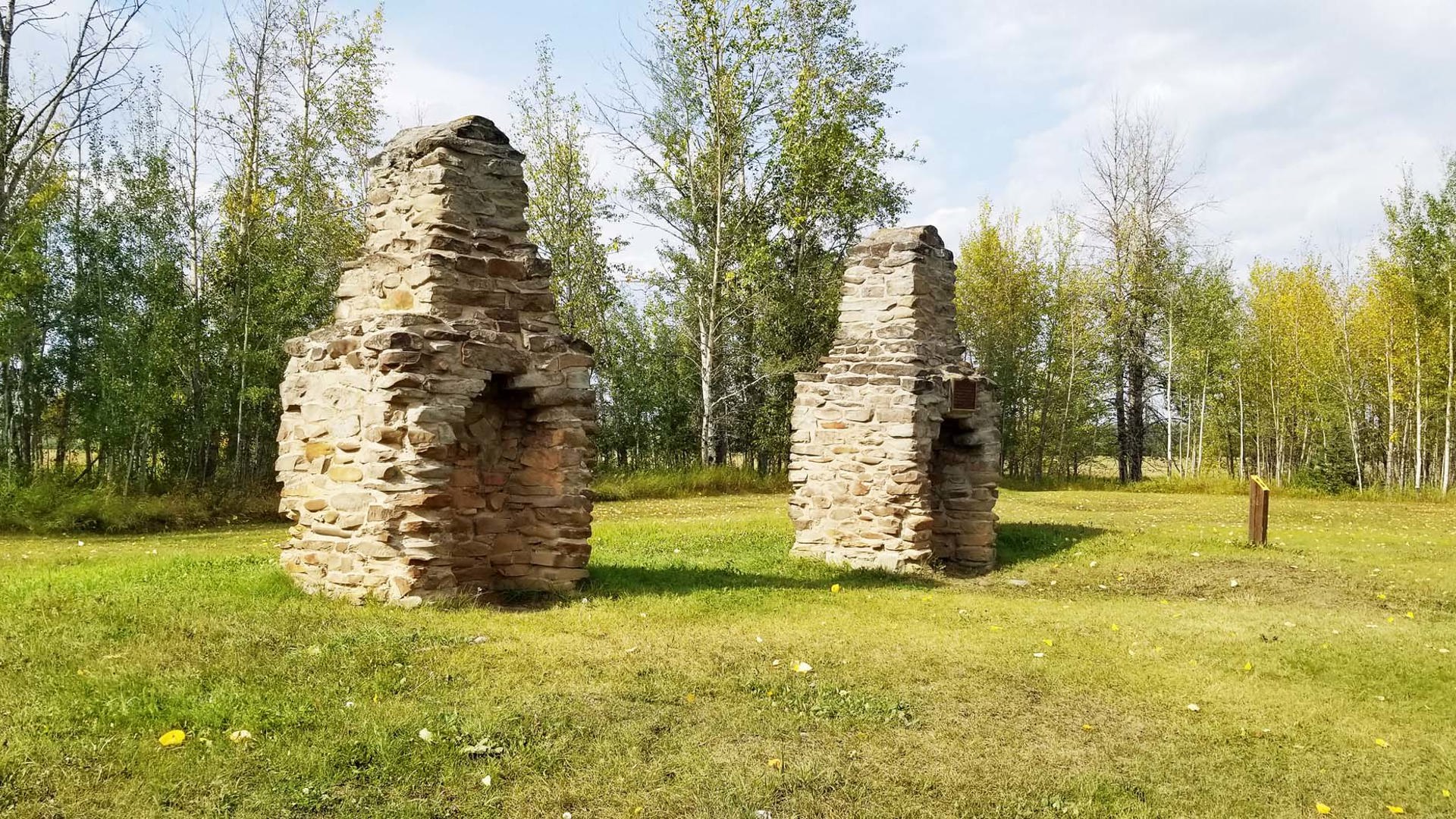
It could be argued, I suppose, that there’s not a lot to see at Rocky Mountain House. I suggest making the time to go anyway for two reasons.
First, although the only remains of any of the buildings that one stood on this site are a pair of stone chimneys, there’s an enormous amount of history presented here that every Canadian should take the time to learn, especially in the era of reconciliation.
Rocky Mountain House was a fur trading post established by the North West Company. Three different structures carrying that name stood at varying locations near to each other on the banks of the North Saskatchewan River. A fourth, Acton House, was established not far away by the North West Company’s primary competitor, a name that Canadians will recognize immediately: the Hudson’s Bay Company.
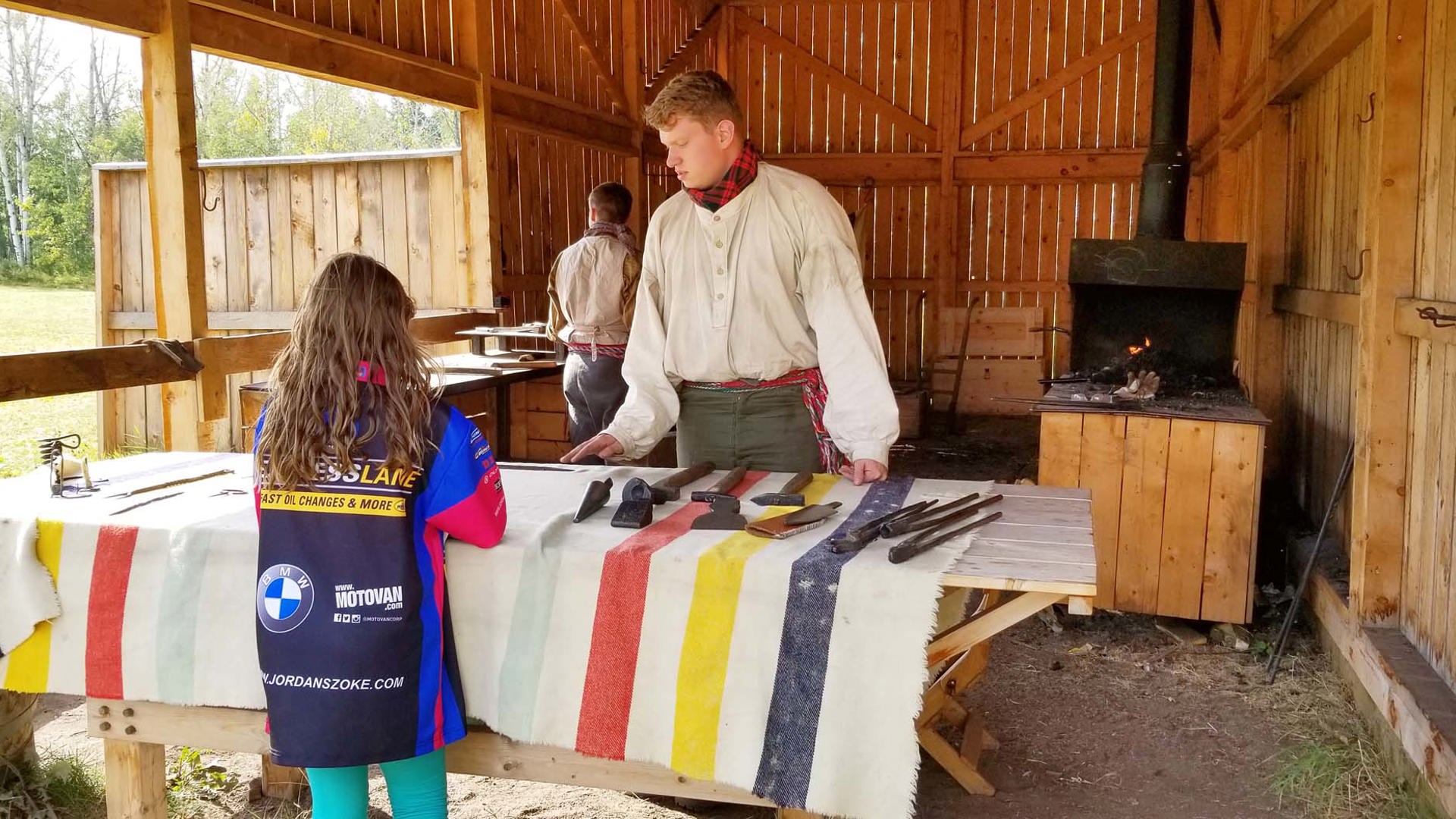
The two forts traded extensively with eight different Aboriginal nations in the area and became bases for European exploration further west over the Rockies and to the Pacific Ocean.
All four building sites can be accessed via walking paths, and some have been kept in their original condition while others have steel wireframes built over them to demonstrate what the forts may have looked like. It all helps very clearly illustrate how relations between European settlers and Aboriginal peoples began and what those on both sides endured as European populations pushed further west – the most remarkable part being that it all took place not so long ago.
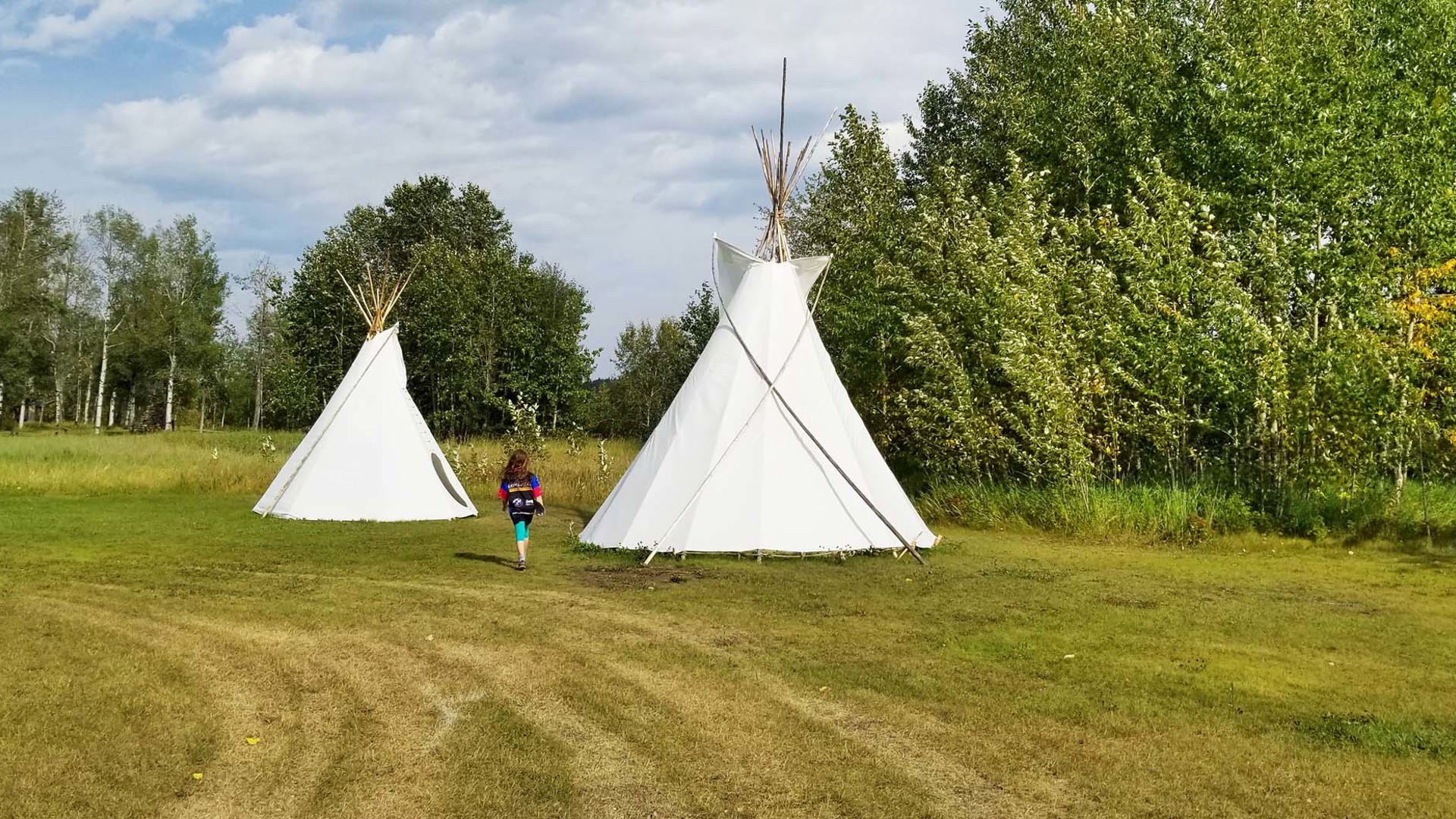
The second reason I’d recommend a visit is because the campground is a real treat. It’s unusual for camping to be permitted at a historic site at all, let alone within an easy walk of the forts. Campers can even, on occasion, choose to sleep in a tipi, a Métis trapper tent, or a cabin to try out a heritage camping experience. The tent and RV sites are across from the bison paddock and have access to a town water line and a recently updated building with clean showers. Compared to the rest of what Alberta has to offer it may not seem like quite as much of a destination, but if you find yourself in the area and looking for a place to camp, Rocky Mountain House National Historic Site is a unique experience.
